





















































Iam thrilled to present to you The Giving List San Francisco/Bay Area, 2024/25 edition.
The past four years of publishing this Bay Area Giving List book has given us a deep appreciation for the unparalleled culture, diversity, and sense of community that exists in each of the Bay Area’s nine distinct counties. But more than anything else, it is the passion and unrelenting dedication on the part of your community’s vibrant and vital nonprofit and philanthropic ecosystems that is nothing short of extraordinary. The privilege of having a front-row seat to the work being done on the ground, and the unrelenting commitment on the part of your foundations and donor community to make that work possible, has been a world-class lesson in caring, compassion, and community.
Like so many places, the Bay Area is facing some of its biggest challenges in its history – challenges that pose a disproportionate threat to the area’s most vulnerable populations. Similarly, addressing these core challenges – environmental, housing, mental health, addiction, poverty, women’s reproductive rights, etc. – depends disproportionately on the safety nets being provided by your local nonprofits. It is the women and men in these organizations that for so many, too many, stand between a healthy and safe path forward and an abyss that none of us want to consider. It is for this reason that we hope you will take the time to read this book and to understand more deeply the vital work being done on the ground that desperately needs your support.
The Giving List was created to help nonprofits tell their powerful stories in a way that would allow donors to better understand and appreciate the critical services they provide. It was also intended to expose donors to nonprofits that may otherwise not make it onto their radar. We hope that this publication will help you break through some of the noise created by so many pressing needs.
Just a few words about the physical Giving List book itself. We think it’s important you know that all of our Giving List books are printed with pulp from responsibly managed forests (they have the FSC-certified label), which means they are made from partially recycled material, verified responsible sources, and committed to reversing deforestation. Also, we use U.S.-made soy ink. Soy ink, which compared to traditional petroleum-based ink, is more environmentally friendly. Soy ink also helps make The Giving List easier to recycle… when you’re done using it to give, of course.
And, finally, in an effort to make giving as easy as possible for everyone who picks up our book, we have enclosed an easy-to-tear-out envelope because every donation, no matter how big or how small, makes a difference to the diligent, hardworking nonprofits that are featured in these pages.
Please use and enjoy this lovingly produced book.
With Gratitude,
Gwyn Lurie CEO, The Montecito
Journal Media Group
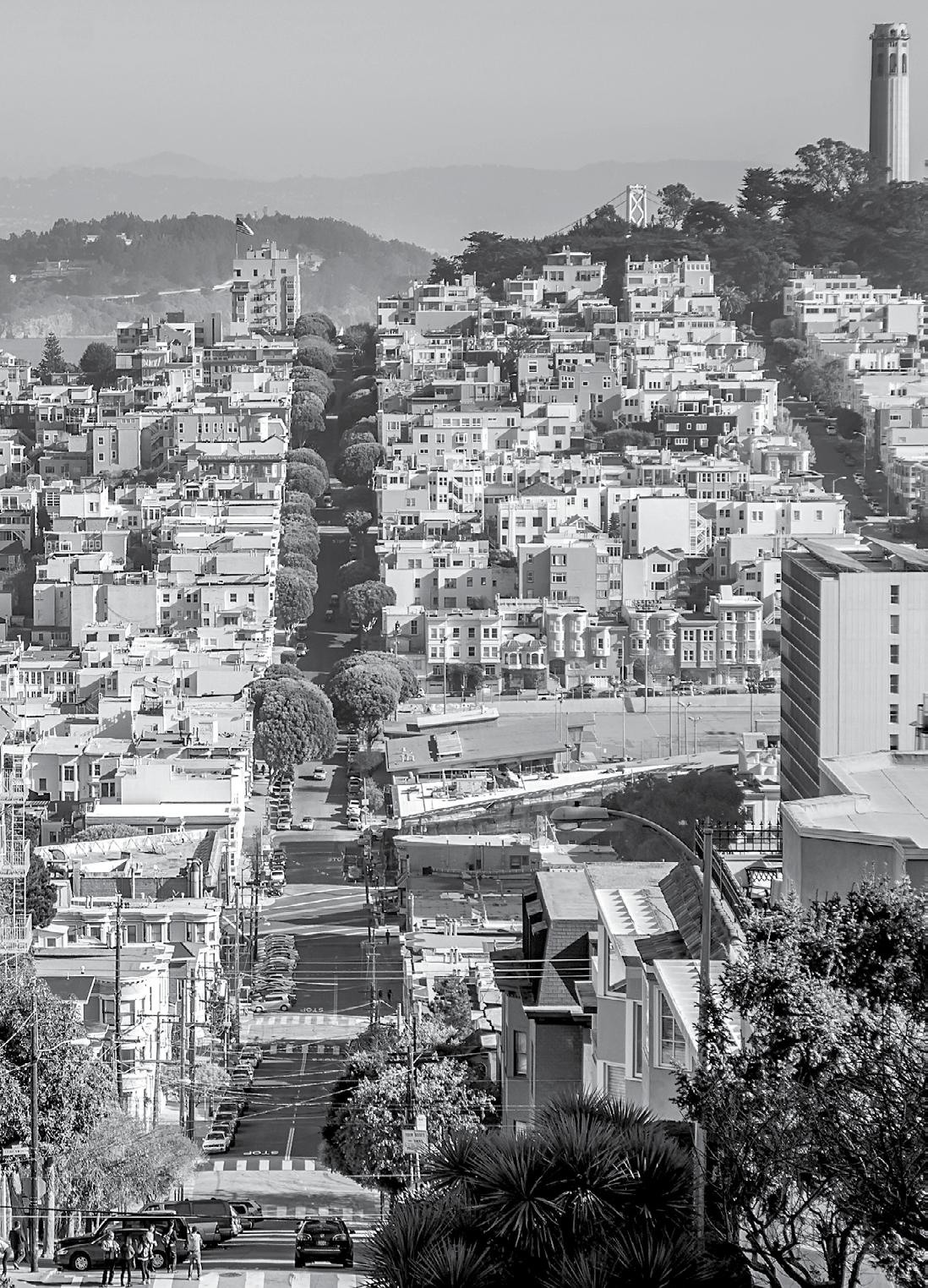
Are you interested in having your nonprofit appear in The Giving List? We are, too! We understand that there are thousands and thousands of vital nonprofits doing critical work in the community. While we rely on our years of work in the philanthropic community along with consultation with leaders in the philanthropic sector to select organizations to appear in our program, there are bound to be some very worthy organizations we will invariably miss.
Your nonprofit organization can apply directly to be in The Giving List by scanning the QR code below. It will direct you to an online form to fill out the required information. Once you’ve completed the form, you will immediately land on our radar for consideration in the next available Giving List book. Please note, we do independent vetting before extending invitations to nonprofits to appear in The Giving List.

We launched The Giving List to help the nonprofit organizations featured in this book spend less time fundraising and more time doing the critical work demanded of them.
Confronting the myriad and mounting challenges facing communities, the nation, and globe requires the ingenuity and dedication exhibited by the nonprofits that fill our pages. We have assembled their stories with the hope that you will see their value and invest in them.
A large proportion of the nonprofits we feature are smaller and more grassroots. This means that while they may have the ideas and leadership to forge change, they don’t necessarily have the diversified revenue streams to reach their fullest impact. We are hoping you will change that by donating and helping them secure the predictable, unrestricted revenue they need to focus on what’s most important: the work. With you, we have the chance to invest in organizations with the potential to take on some of our most pressing challenges.
Please join us by supporting your local nonprofits on the front lines of justice, whether that be fighting racism; using the arts to change culture; helping children, youth, and families in need; or striving to preserve our environment.
We will all be better for it.
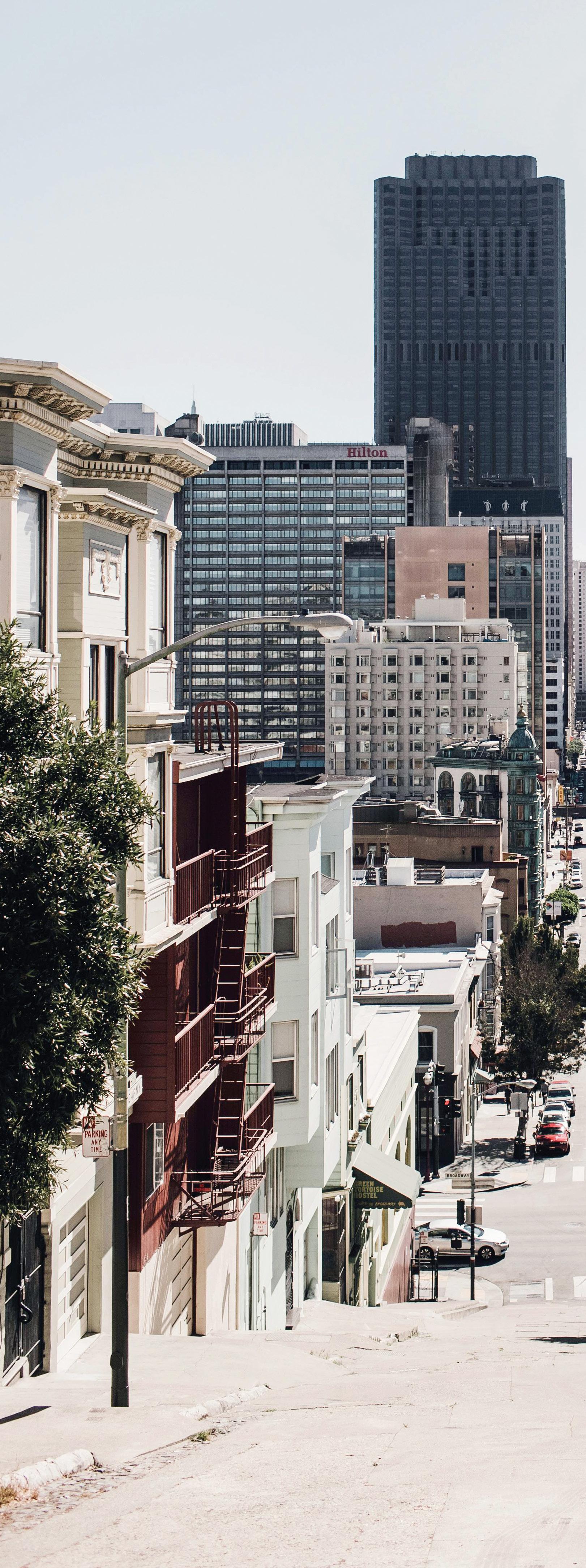

An increasingly popular and efficient tool to manage your giving is a donoradvised fund, or DAF.
A DAF is like a charitable banking account, managed by a community foundation or by some of the world’s largest investment banking firms, where you can make a donation today and direct grants to worthy nonprofits later.
A key advantage with a DAF is that it allows you, the donor, to take a tax deduction in the year you donate money or complex assets, while not compelling you to distribute the money immediately. This can mean time to make more thoughtful decisions about how you want to direct your charitable contributions.
Many financial institutions and community foundations have low to zero start-up fees, making it possible for donors at any level to DAF.
good is living well
The Giving List was created to make it easier for you to navigate the dizzying array of worthwhile causes and nonprofit organizations. To that end, we have distributed The Giving List to people like you: individual donors, staff within the region’s small and large private foundations, and to philanthropic advisors, wealth managers, and estate planners.
As you dive into this book, we want to point out some of its unique features, and of The Giving List program as a whole.
Our partnerships with the nonprofits in these pages do not end with the printing of this book. Each profile will live on TheGivingList.com through 2025, where we will be updating each profile once a month so that you can continue to track the important ongoing work of each and every Giving List organization.
We hope that you will use the website as a guide not only for yourselves, but as an easy way to share the work of our partners – whether they be nonprofits, community foundations, or funder affinity groups – with your friends, family, and colleagues.
We are building a community of people who care deeply about philanthropy and understand the vital role it plays in our world, and we want you to join.
Since launching January of 2022, our bi-weekly newsletter, The Giving List Newsletter, has become a venue for updates from our nonprofit partners and stories from the frontlines of philanthropy.
We would love for you to join The Giving List Newsletter; please visit www.TheGivingList.com and follow the prompts.
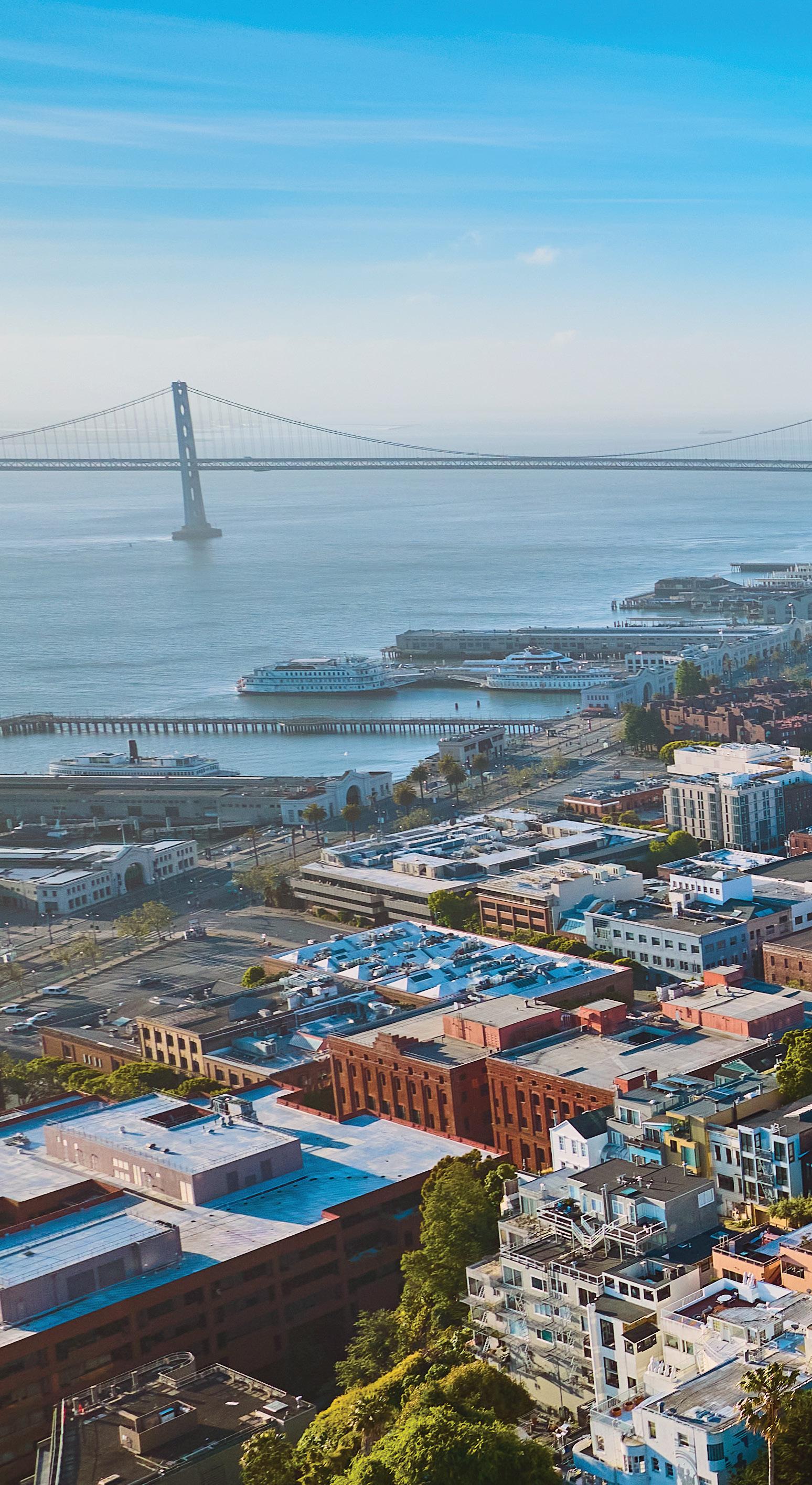
You can also join our newsletter...

... by waving your phone’s camera over this QR code.
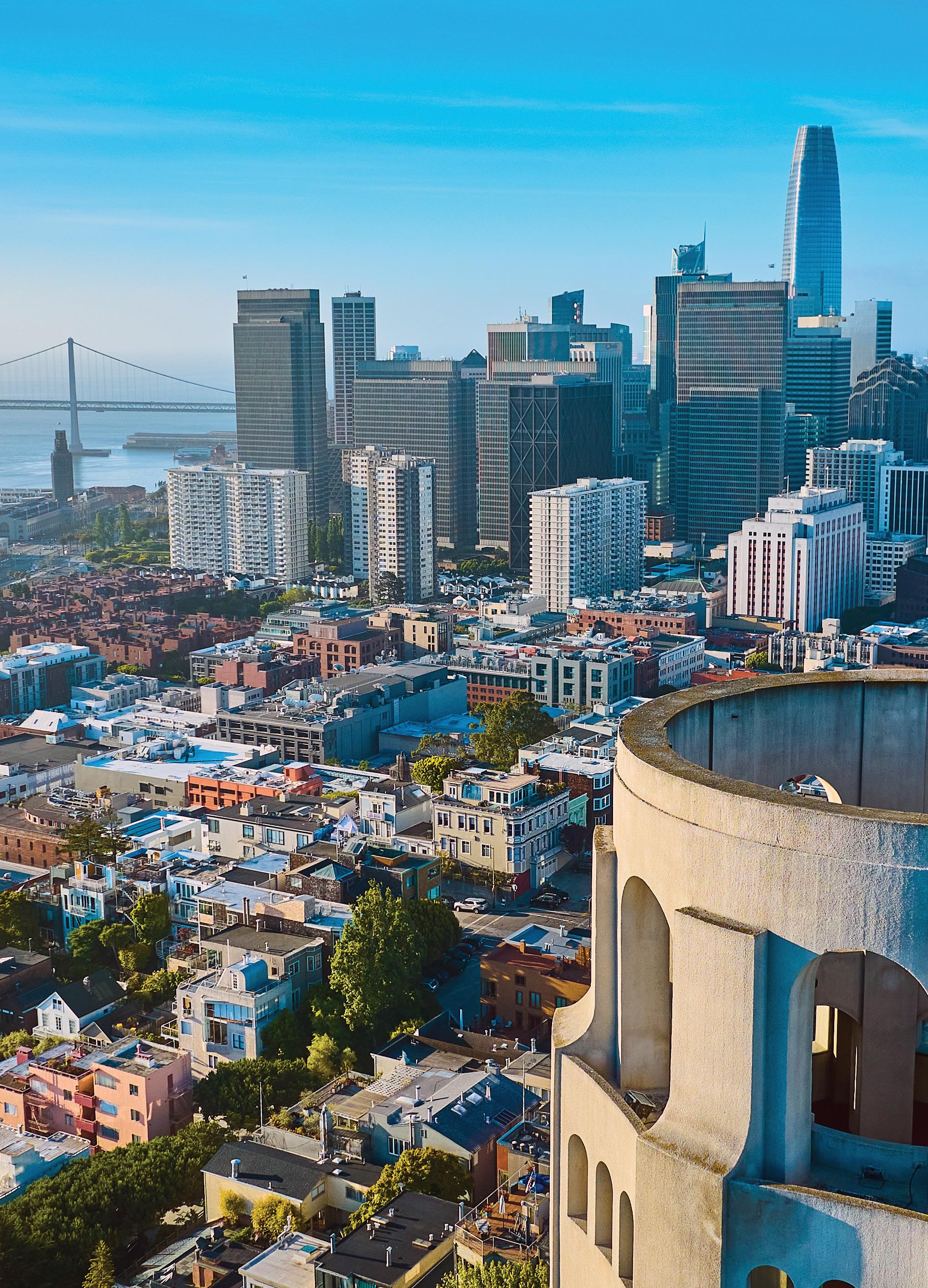
Shortest Distance to Making a Difference, P. 16
Conversations – Lisa Truong: Grassroots Philanthropy is a Real Baby Boom, P. 26
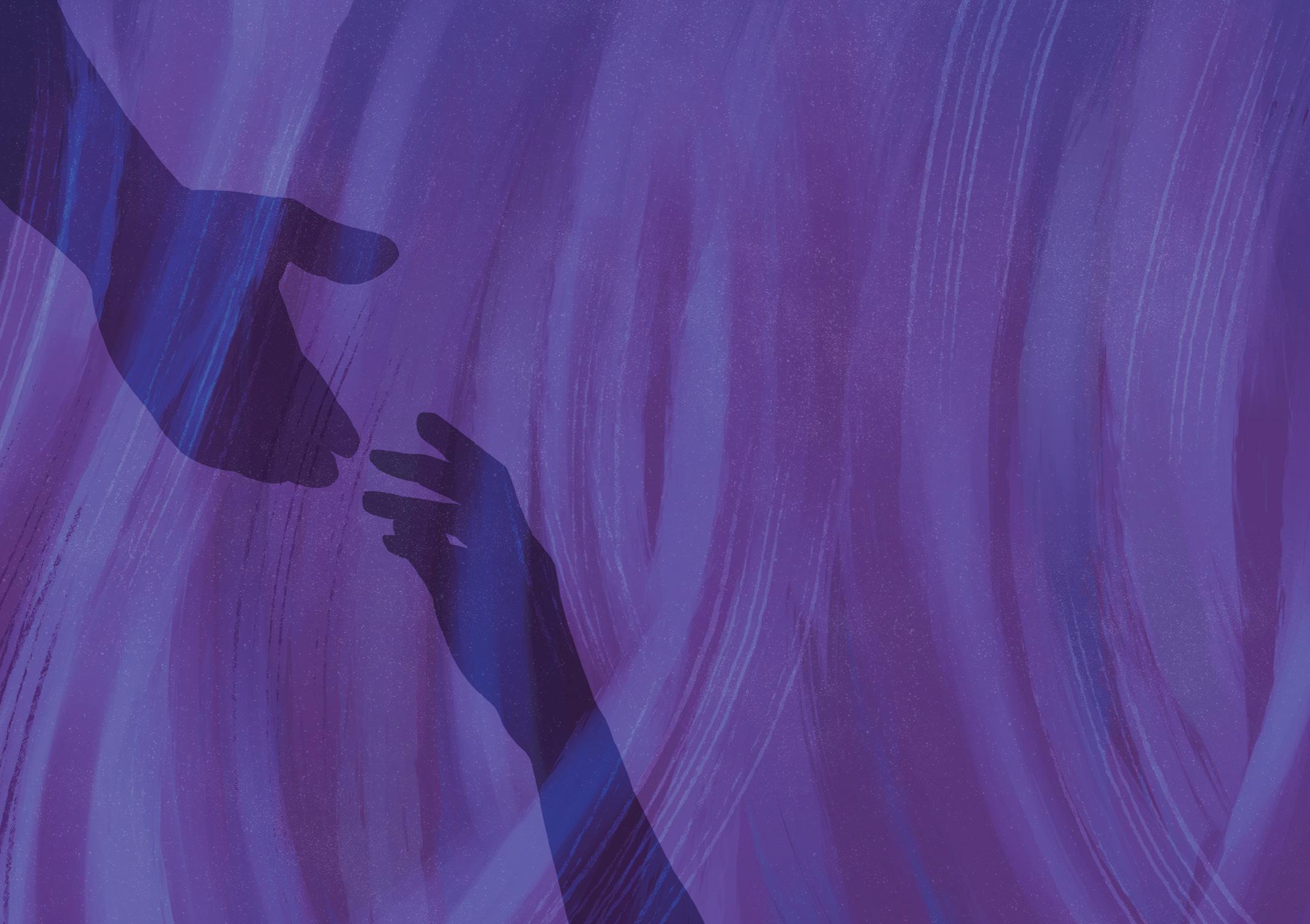
Communities United for Restorative Youth Justice (CURYJ) unlocks the leadership of young people to dream beyond bars P. 30
Help a Mother Out improves baby and family well-being by increasing access to diapers for families in need

Conversations –Kimberly Ellis: Empowering Women and Girls, P. 36
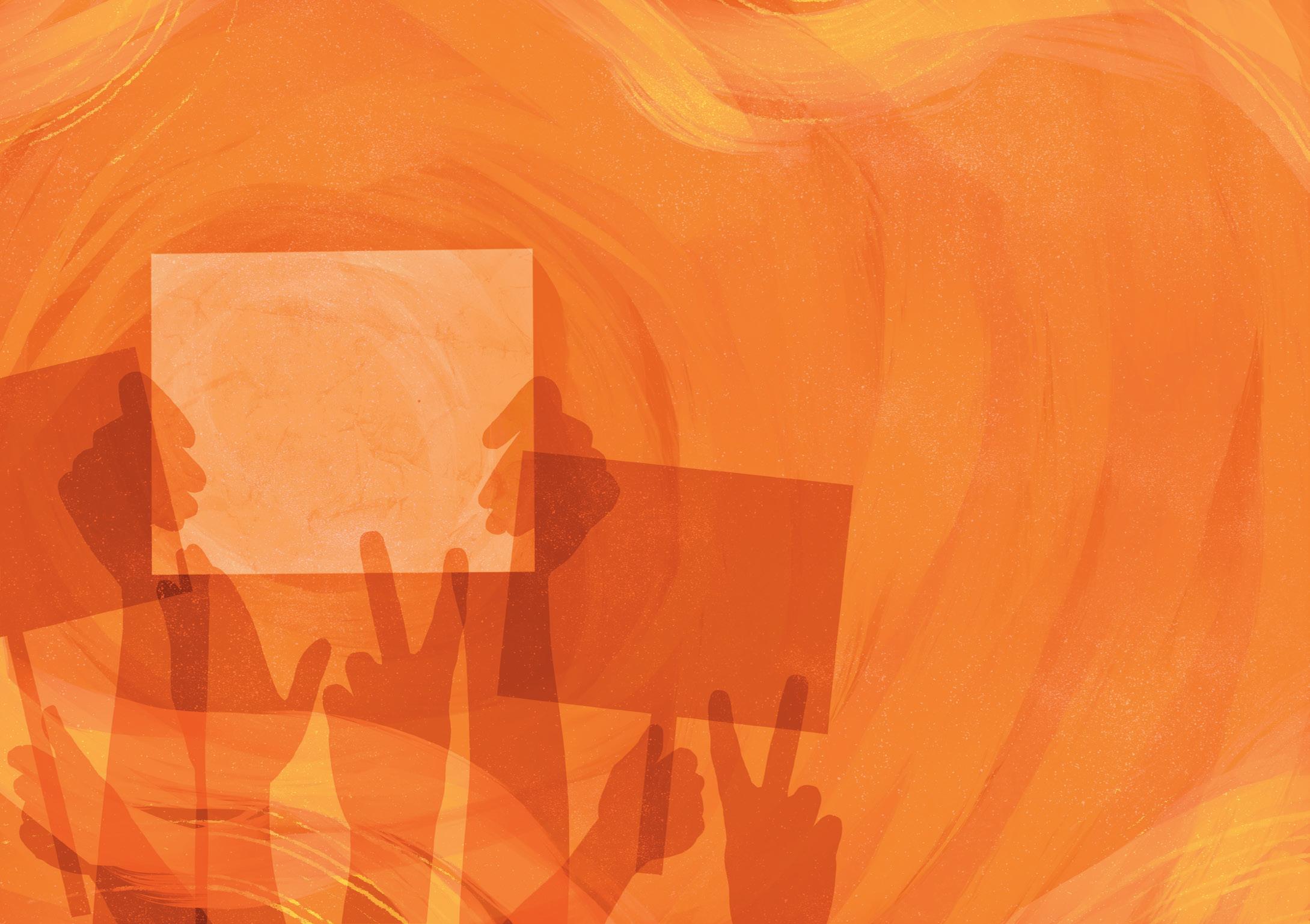
Brady: United Against Gun Violence unites people of all identities, races, and ethnicities
from coast to coast, young and old, and everything in between, fed up and fired up, to protect our country from what is killing it: guns
Legal Services for Children provides free representation to children and youth who require legal assistance to stabilize their lives and realize their full potential
Youth Speaks creates spaces that challenge youth to develop and amplify their voices as creators of societal change
Legal Services for Prisoners with Children organizes communities impacted by the criminal justice system and advocates to release incarcerated people, to restore human and civil rights, and to reunify families and communities P. 46 48
The
Conversations – Greg Hodge: Nurturing Community Through Advocacy, P. 50
Community Education Partnerships increases the learning opportunities and enhances the academic achievement of students experiencing homelessness and housing insecurity
Young Community Developers positively impacts lives and empowers people to break cycles of poverty for themselves, their families, and their communities.

Partnerships for Trauma Recovery’s mental health and psychosocial care supports clients during resettlement so they can grow new roots and thrive in the Bay Area.
Through the Looking Glass provides and encourages respectful and empowering services – guided by personal disability experience and disability culture – for families that have children, parents, or grandparents with disability or medical issues
P. 58
Vision To Learn provides vision screenings, eye exams, and glasses to children in low-income communities, at no cost to the children or their families P. 60
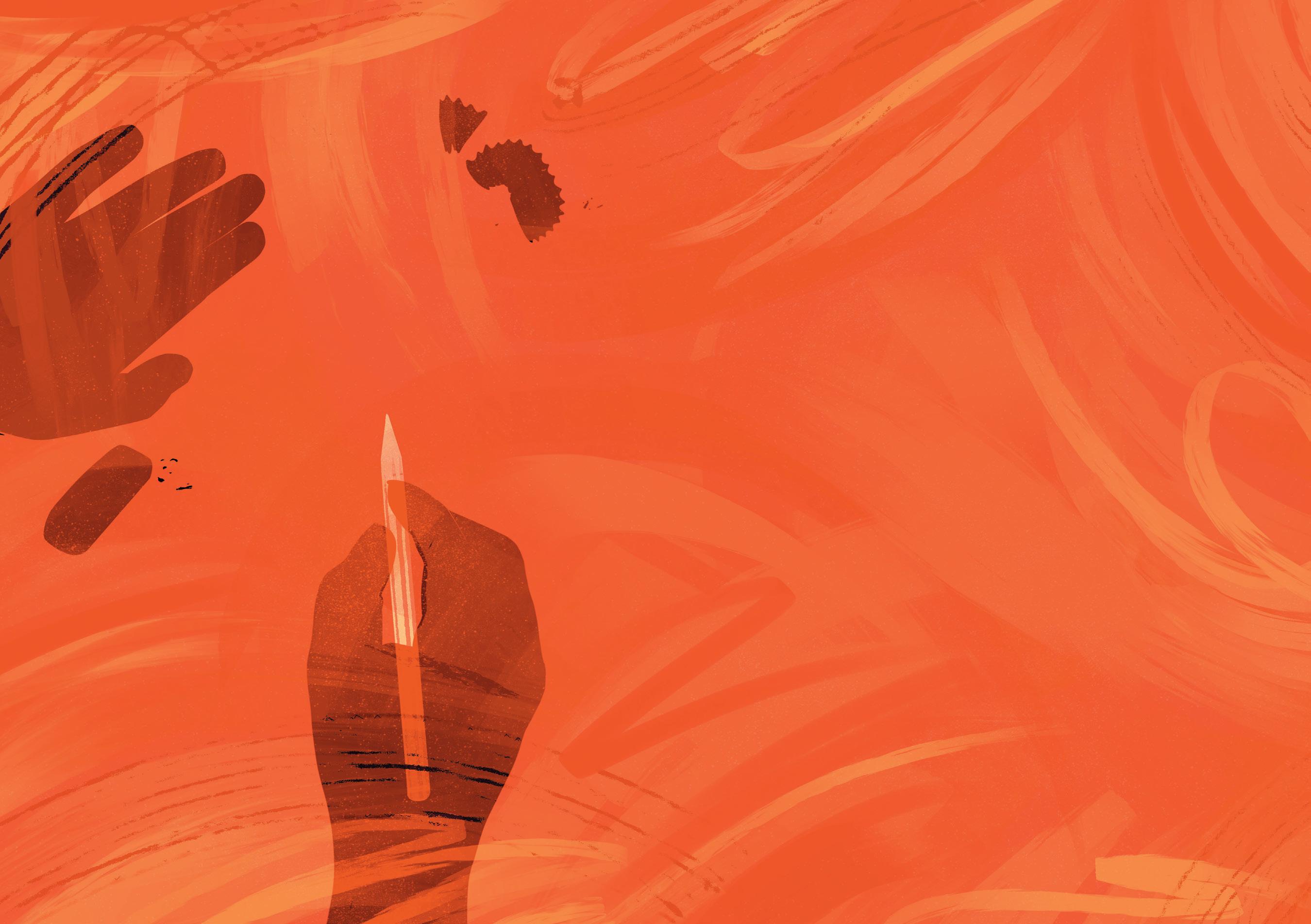
National Disaster Search Dog Foundation rescues and recruits dogs and partners them with firefighters and other first responders to find people buried alive in the wreckage of disasters

Direct Relief is a humanitarian aid organization, active in all 50 states and more than 80 countries, with a mission to improve the health and lives of people affected by poverty or emergencies – without regard to politics, religion, or ability to pay

Berkeley Public Schools Fund champions equitable public education for students, families, and the community through grants, volunteers, and STEM programs
P. 68
Challenge Success elevates student voice and implements research-based, equity-centered strategies that improve student well-being, belonging, and engagement
P. 70
Matriculate connects high-achieving, lowincome juniors and seniors to highly-trained undergraduate advisors – completely virtually – empowering students to attend colleges where they will thrive
P. 72

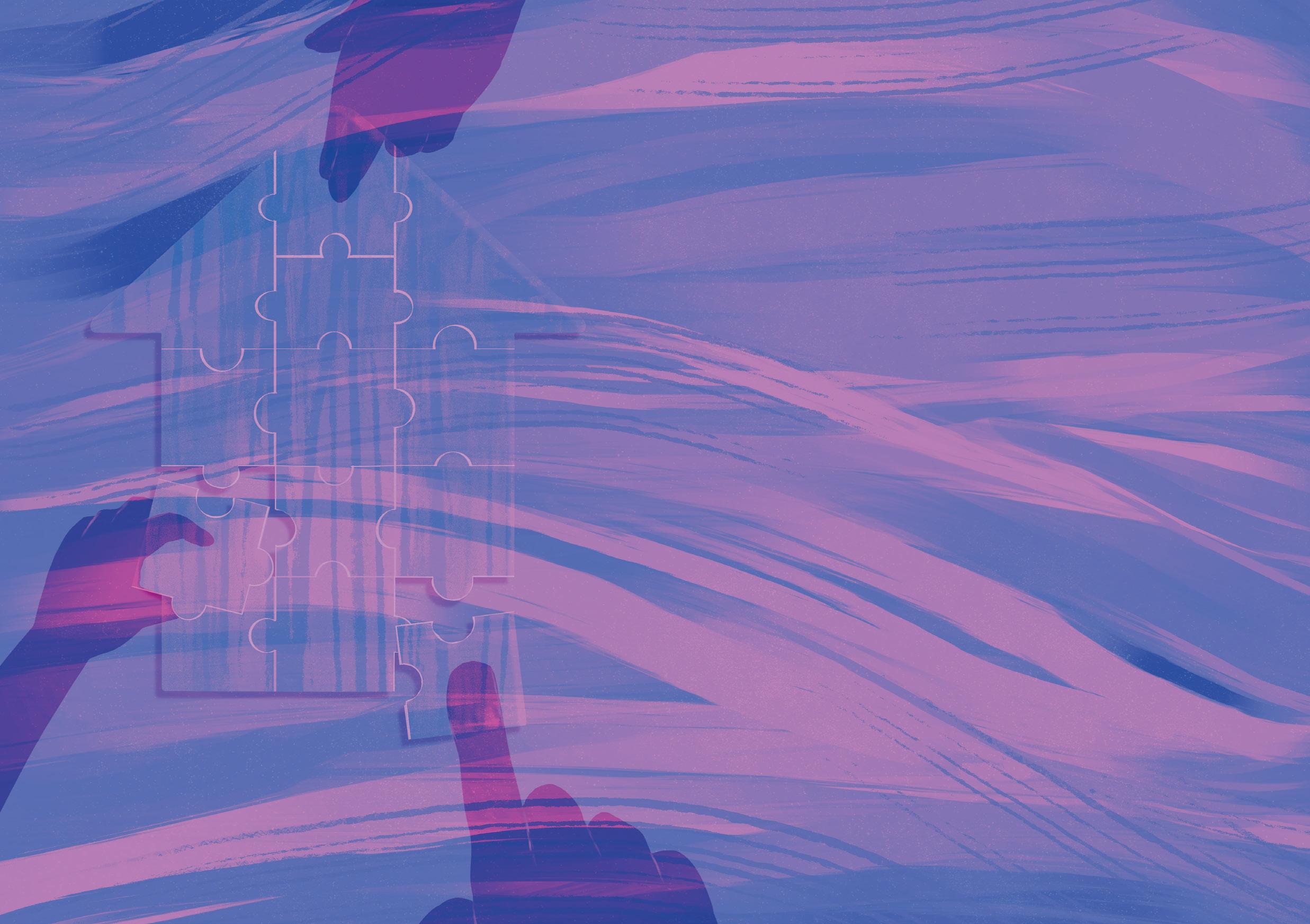
A Home Within identifies, recruits, trains, and supports a network of licensed therapists who each provide free, weekly, one-to-one therapy to a single child, teen, or adult “for as long as it takes.”
P. 88
Pivotal helps young people in foster care create the life they want by guiding them to career success
Conversations – Pastor Samuel Casey: Radical Belonging, P. 94

California Film Institute advances film and media arts through acclaimed programs and film festivals .
. P. 98

Partnerships for Trauma Recovery addresses the psychosocial impacts of trauma among international survivors of human rights abuses through culturally aware, trauma-informed, and linguistically accessible mental health care and case management, community outreach, clinical training, and policy advocacy .
P. 112
AIDS Project of the East Bay provides culturally sensitive, non-judgmental, and effective services to all persons and communities in Alameda County living with and at risk for HIV infection P. 114
Contra Costa Crisis Center aims to keep people alive and safe, help them through crises, and provide or connect them with culturally relevant services in the community .
P. 100
Mongabay improves widespread understanding of the forces undermining the health of Earth’s systems, making science accessible and amplifying the voices and knowledge of those directly impacted by environmental change

Conversations –Nichole Pettway: From Addiction to Advocacy, P. 104
Faith of a Child Foundation rescues more than 445 babies from severe malnutrition, illness, and abandonment. They help local people in Uganda and Latin America save babies P. 108
Peninsula Volunteers, Inc. empowers older individuals to lead independent lives, engage with their communities, and continue to get the most out of life
P. 110
Conversations – Pam Baer: The Entrepreneurial Philanthropic Journey of a Texan Transplant Turned San Francisco Trailblazer, P. 120
Brotherhood of Elders Network, an intergenerational network of men of African ancestry, fosters environments where Black boys and young men are empowered to flourish P. 124
Dustys’ Fishing Well strives to enhance at-risk teenagers’ awareness of society’s proper manners and correct etiquette, while in social settings . . P. 126
America SCORES inspires youth to lead healthy lives, be engaged students, and have the confidence and character to make a difference in the world through daily after-school and summer programming that combines soccer, poetry, and service-learning
P. 128


Beatrice Tolan’s work for The Giving List reflects her belief that art should invite empathy.
“While creating the graphics,” she explains, “I decided to keep the subjects as silhouettes so anyone could identify with them. Instead, I made the backgrounds more detailed to capture the energetic spirit behind each nonprofit category.” This thoughtful approach highlights her ability to evoke emotion through simplicity, allowing the message to resonate universally.
A Los Angeles-based graphic designer and animator, Tolan grew up in Montecito and graduated cum laude from Northeastern University with a degree in Media Arts. Her creative pursuits go beyond digital art, encompassing abstract painting, songwriting, and writing.
To learn more about joining The Giving List Community, please contact: vicki@thegivinglist.com
CEO & Founder Gwyn Lurie gwyn@montecitojournal.net
President & Founder Tim Buckley tim@montecitojournal.net
Executive Editor Vicki Horwits vicki@thegivinglist.com
Director of Partnerships & Operations Jessikah Fechner jmoran@montecitojournal.net
Art Director Trent Watanabe
Deputy Art Director Stevie Acuña
Copy Editor Lily Buckley Harbin
Administration & Billing: Kassidy Craner frontdesk@montecitojournal.net
Contributors:
Jeff Wing, Nadra Kareem Nittle, Stella Pierce, Kevin Lavelle, Brian Rinker, Gary Marks, Tiana Molony, Anna Dimond, Brenda Gazzar, Dan Schifrin, Dipti Vaidya, Zachary Bernstein, Bea Tolan
the giving list
is published by: Montecito Journal Media Group, LLC.
Corporate Offices located at: 1206 Coast Village Circle, Suite G, Montecito, CA 93108 For inquiries: phone (805) 565-1860 email tim@thegivinglist.com
By Dan Schifrin
In 2000, Judy Koch learned something surprising about many of the workers in her sheet metal factory in Fremont, California: They didn’t read books with their kids. As a former junior high English teacher now on a second career as a manufacturing CEO, Koch wanted to instill a love of reading in her employees. Her idea? Give away high-quality storybooks for free.
This simple act created a tidal wave of expanded family literacy among the mostly Latino men who worked on the factory floor.
Sterling Speirn, who was looking for innovative ideas as executive director of the Peninsula Community Foundation (now the Silicon Valley Community Foundation), was alerted to this experiment and quickly adopted it as part of the Foundation’s Center for Venture Philanthropy. A trial program with the San Mateo County library system was very successful, and the program continued to grow.
Twenty-five years later, this project – Raising a Reader – has changed the literacy and reading culture of more than a million families in 33 states. With its low-cost method for preparing children for kindergarten, Raising a Reader demonstrated that “reading time” fostered parent-child bonding as well as critical cognitive development.
“Judy used to tell me that when her employees went home at night, their children would run to the front door and say, ‘What book did you bring me, Daddy?’” Speirn recounts. By equipping them with books and bags, “she had made them heroes in their own homes.”
The success of this program reminded Speirn, who had also been a teacher before entering philanthropy, that the small step of exposing kids to reading early created long-lasting, permanent changes far beyond literacy.
“If you want to do anti-poverty and racial justice work,” he adds, “a program like this is the most costeffective way.”
We live in a moment of radically expanding complexity. The volume of information (and misinformation) comes at us like a firehose from every screen, even as we try to adjust to accelerating social, political, environmental, and technological change. The question then becomes: How do we make sense of our philanthropic choices as we seek to make meaningful change?
The success of Raising a Reader offers at least one major insight: No philanthropic step is too small, or too soon. And as Judy Koch demonstrated, starting with what is right in front of you is often the shortest distance to making a difference.
“Philanthropy is so personal. I always want to encourage donors to start where they are at, with the issues they are most passionate about,” says Tammy Sims Johnson, Vice President of Philanthropic Services at the Santa Barbara Foundation. By leaning into one’s passion, curiosity, and professional expertise, continues Johnson, donors “will find the niche where they can make a significant, meaningful difference, whether it’s small-scale or large-scale.”
Johnson points to the work of Carrie Towbes, Ph.D., a licensed clinical psychologist with expertise in children and youth. Her background as a special education teacher and her clinical experience in a wide array of settings including schools, hospitals, community clinics, and private practice, enhanced her awareness that local mental health professionals were burning out at an alarming rate, imperiling the entire system of support.
Trusting her experience, Towbes saw an opportunity for study and innovation that led to the creation of

Raising a Reader supports familiesto build, practice and grow reading routines at home.
the 4R Fund, in partnership with the Santa Barbara Foundation, dedicated to the long-term, holistic support of mental health professionals. The 4R’s stand for recruit, retain, rest, and recuperation.
Towbes is also president of the Towbes Foundation, a multi-generational family foundation that has generously supported many nonprofits in the Santa Barbara area. While the Towbes Foundation has historically funded many nonprofit sectors, they currently target Towbes’ areas of expertise. Towbes emphasizes that it was “my clinical experience that informed the direction of my philanthropy.”
The social and political developments of the last few years might prompt a contradictory response: How might we acknowledge the systemic, large-scale, often multi-generational nature of our problems, without losing sight of the tangible, concrete issues right in front of us?
Extraordinary gifts that can change the game are necessary contributions. Two recent examples, just in the healthcare field, include $1 billion donation donations from Dr. Ruth Gottesman to the Albert Einstein College of Medicine in the Bronx, and from Mike Bloomberg to the Johns Hopkins Medical School. These gifts will make it possible to educate a more economically diverse class of future physicians, which will in turn support more community clinics and improve the healthcare of communities of color.
At the same time, more modest gifts can have an incredible influence on smaller organizations. Sneha Dave is the 26-year-old founder and CEO of Generation Patient, an advocacy and support nonprofit serving young adults with chronic illnesses. In a recent essay in the Chronicle of Philanthropy, Dave makes the case that nonprofits with budgets under $1 million are often ineligible for certain kinds of grants. Dave points to MacKenzie Scott’s extremely generous funding of hundreds of

“The first step towards a big goal needs to be significant and worthwhile. It had better make a dent in the problem. But physics tells us that we just need to find a really really really small thing that gets us started and gets the chain reaction going.”
– Daniel Stillman, Conversation Factory


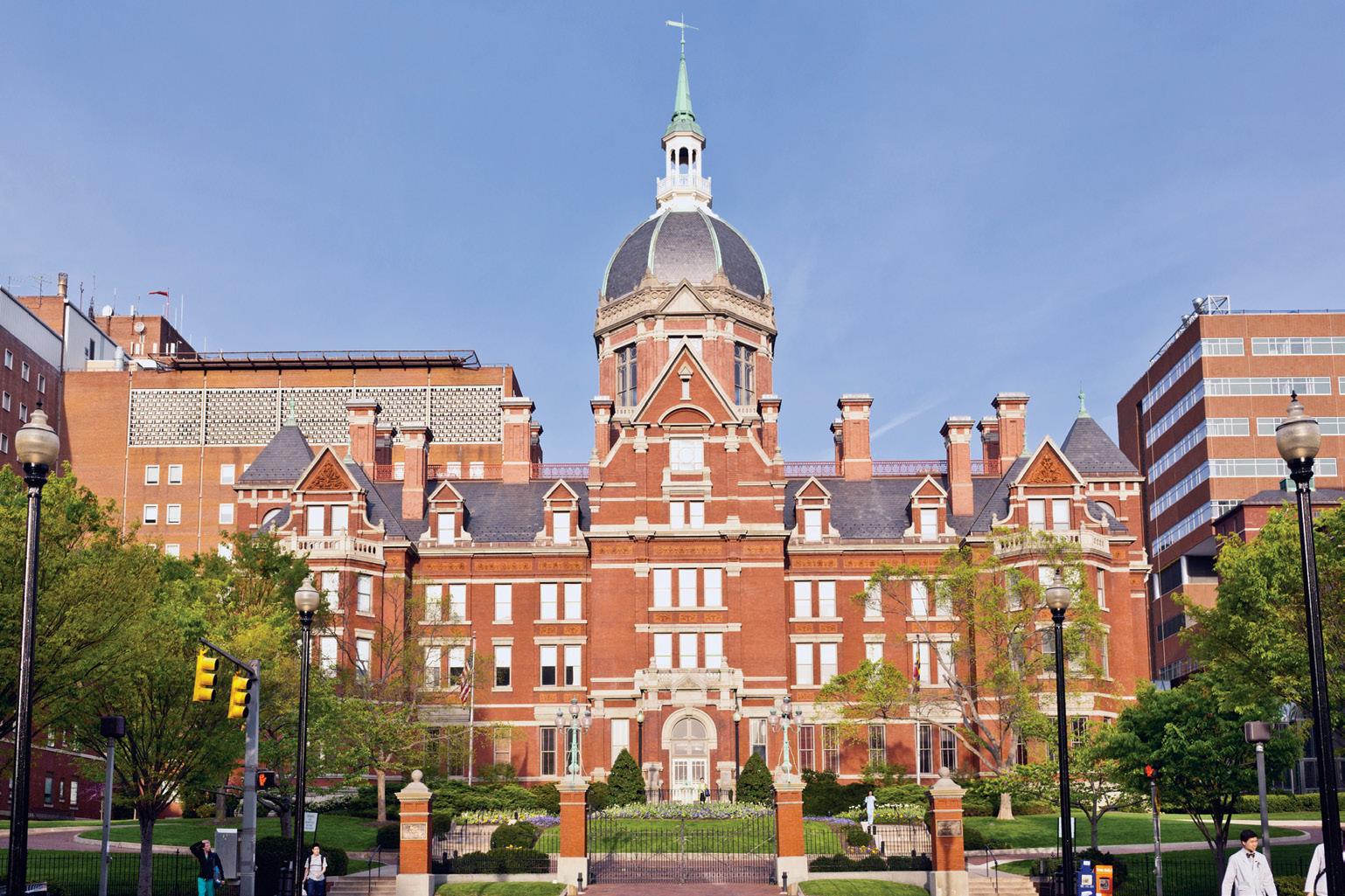
Bloomberg Philanthropies announced a transformative $1 billion gift to Johns Hopkins University, making medical school tuition-free for most students and expanding financial aid for students in nursing, public health, and other graduate programs.
nonprofits with grants of up to $2 million, which excluded lean organizations like hers, with a staff of three and an annual budget of $450,000.
In an interview, Dave said that most smaller organizations like hers depended on smaller donations, “which could make a huge impact on our work.” She encouraged donors to consider supporting less well-known organizations by helping with immediate needs that could lead to longer-term impact. In her Chronicle essay, Dave expressed gratitude for a foundation “which paid for a leadership transition consultant and executive coach for me. I’d never managed a staff nor had a manager myself, which made the additional coaching transformational.”
Or as organizational guru Daniel Stillman puts it in a recent blog post on his Conversation Factory website, we often think that “the first step towards a big goal needs to be significant and worthwhile. It had better make a dent in the problem. But physics tells us that we just need to find a really really really
small thing that gets us started and gets the chain reaction going.”
How big a reaction? “It’s hard to imagine, but starting with a domino just five millimeters tall, it would take just 29 progressively larger dominoes to knock over a domino the size of the Empire State Building.”
Robin Mencher, CEO of Jewish Family and Community Services East Bay, is eager to see largescale change that will be more supportive of those in need. That future, she believes, is likelier to take place “not through sudden, radical shifts, but through the accumulation of thousands of micro-changes.”
The reason? “Stability is a building block for bold change,” says Mencher, who notes that stability can seem counterintuitive in nearby Silicon Valley, where “there is a culture of disrupting things and seeing

what happens… But for charities and nonprofits to take ‘good’ risks, there needs to be stability. And nonprofits get stability by not having to worry about making payroll.”
In other parts of the charity ecosystem, huge impacts are being made by the accumulation of thousands of micro-donations. A recent NPR story highlights the incredible gains for nonprofits when customers “round up” a purchase as a gift. The Taco Bell Foundation, which funds nonprofits like the Boys & Girls Clubs, noticed huge increases in donations when people had the opportunity to give
less than a dollar. In 2019, the first year they tried this approach with the 7,500 U.S. restaurants, they doubled their contributions.
Bart Burstein and Leslie White created the Pace Able Foundation in Palo Alto to focus their support of nonprofits (and a few for-profits) in health, education, and capacity-building, mostly in the developing world. Burstein had a successful career in tech, and White worked in both education and tech before they retired to focus on philanthropy.
One of their advisors at the time was Judi Powell, founder and principal of Seven Hills Philanthropy,
In other parts of the charity ecosystem, huge impacts are being made by the accumulation of thousands of micro-donations. A recent NPR story highlights the incredible gains for nonprofits when customers “round up” a purchase as a gift.

and previously a senior leader at Silicon Valley Community Foundation and Pacific Foundation Services. When they asked her for strategic advice, “Judi told us to give unrestrictedly. Try not to put too many impediments in the way of grantees.”
As they learned more about the organizations they wanted to support, they took this advice to heart, funding a targeted group of nonprofits, and creating an ongoing partnership based on trust.
“With all the problems we saw, we asked ourselves, ‘How can you bear to focus on just one thing, when there are 100 problems confronting you,’” Burstein says. An answer, he adds, came from philanthropist (and former President) Bill Clinton: “Do what you care about.”
In a recent essay in eJewish Philanthropy, Barry Finestone, president and CEO of the San Francisco-
based Jim Joseph Foundation, acknowledges these hundreds of problems at a moment of VUCA –volatility, uncertainty, complexity, and ambiguity. This term, originally used in the military, was introduced into leadership studies 40 years ago by University of Southern California professors William Bennis and Burt Nanus. Their argument was that effective leaders needed to avoid coveting simplicity at the expense of patience and self-reflection.
In his article, Finestone encourages philanthropy’s critical work of engaging complexity, which includes “strategic planning, and remaining focused on longterm goals and outcomes.” But he cautions that the perfect can be the enemy of the good, and that simply acting was sometimes the higher calling. “We need to train ourselves,” he writes, “to strengthen our adaptive ‘muscles’ so we are ready to quickly


and effectively react to issues and unanticipated developments in as close to real-time as possible.”
Across town from where Bennis and Nanus taught, on the Great Lawn of the West Los Angeles VA Medical Center at San Vicente and Wilshire, hundreds of struggling veterans have been waiting, sometimes for many years, for adequate housing within which they can heal and receive the care they need. Their experiences are the epitome of VUCA.
The visual overwhelm of so many unhoused neighbors evokes a hopelessness with the scope and scale of America’s social problems, and radical uncertainty as to what we can do, even as we motor to work in our air-conditioned cars.
In 2021, as part of a movement toward quickly offering “tiny homes,” the agency decided to replace tents with small but functional home-lets, moving past the immense complications and delays of wellmeaning environmental and financial requirements.
The results were striking, if still small-scale, leading to improved physical and mental health, and more positive social engagement. John Kuhn, Deputy Medical Center Director for the VA Greater Los Angeles Healthcare System (VAGLAHS), acknowledges that “while this resource by itself does not solve homelessness… it is a critical tool to ensure safety.” By moving the process forward in a simple, meaningful way toward permanent housing, the VA “will offer Veterans a path to that destination.”
Many of our social problems, research shows, are a result of a simple lack of connection. COVID made clear, and in many cases accelerated, an epidemic of American loneliness that directly correlates with mental illness, frayed social bonds, and even obesity. Social media, despite including the word “social,” has compounded that effect.
Funders, especially new ones, often see positive results when they simply get together to talk about giving – and then go ahead and give. Among the most effective social vehicles for funders, philanthropic advisor Judi Powell says, is the giving circle.
“For funders, especially first-time funders who might still be anxious about doing this ‘right,’ these relationships are really important,” she says. Among other things, these relationships “help build confidence and are an invaluable source of information about how to give and where to give. And of course they amplify the impact of a single funder by pooling the funds of many.”
The San Francisco based Jewish Community Federation and Endowment Fund (JCF), which raises and distributes funds for a variety of Bay Area and Israel-connected organizations, has leaned into the value of “social giving,” especially among younger donors.
“Our giving circles, which empower people of all ages, backgrounds, and incomes to actively participate in philanthropy, support individuals in coming together to pool their charitable funds, discuss shared values, learn about inspirational organizations, and make collective decisions about which organizations to fund,” said Rebecca Randall, Chief Philanthropy Officer of the Jewish Community Federation and Endowment Fund.
A young adult giving circle called The Bay Area Tribe, co-chaired by Moriah Jacobs, found that the simplest way to move from anxiety and uncertainty to productive action was coming together. The giving circle, she says, was “a safe and open space for people to be vulnerable and honest, which contributed to a really productive and engaged group.”
There is no one-size-fits-all philanthropy. Some people and institutions like to spread their bets, while others prefer to go deeply into one issue or community. Some look to explicitly change the game, while their peers seek to amplify what’s already working. In the end, the best and simplest solution is just to get to work.


There is no greater gift than reaching out one’s hand to another in need and saying, “Here, let me help you.” The simplest of statements with the greatest of impacts.

Lisa Truong has always had a special place in her heart for society’s most vulnerable. The longtime Bay Area resident who immigrated from Saigon as a toddler was struck by some of her Vietnamese relatives’ struggles to make ends meet in America.
Truong’s innovative nonprofit – now in its 15th year – has doled out tens of millions of clean diapers to mostly San Francisco Bay Area mothers in need. Help a Mother Out has even inspired state assistance for diaper distribution that has become a model for other states.
The following is an abridged Q&A with Lisa Truong.
Q: What are you most passionate about?
Lisa Truong: I’ve only known the Bay Area to be my home since I was very young so I just care deeply about this community. Even though we are a vast metropolitan region, I really see all of our residents as one community. We may be siloed in terms of counties because it’s a multi-county region, but we’re so interconnected and interdependent upon one another. Someone who’s living in Contra Costa County may be working in San Mateo County, and I really am very passionate about bolstering the community. We have a lot of micro communities, but I do strongly feel that the Bay Area has a really great opportunity to be a healthy region and that means remembering that we’re all interconnected.
Q: What inspired you to get involved in philanthropy?
A: I have always really cared about social causes since I was young. I grew up in the South Bay [when] there wasn’t a lot of diversity. Now, in Silicon Valley, it’s incredibly diverse and so from a very early age, I really cared about the vulnerable, and just different social causes. I went to Berkeley and was originally going to be a documentary filmmaker. That was my dream, and that actually didn’t end up working out because of the affordability index of the Bay Area. I ended up working in the nonprofit sector.
I felt like I had an abundance of things. I could go to Target, and I could pick anything that I wanted for my children.
A few days after that, I was having a rare night out with a mom friend of mine, Rachel Fudge, and I was talking to her about this episode and we just sort of got thinking, “What could we do? There’s so many families that are hurting.” That was sort of the impetus of, “Well, maybe we could do a clothing drive or a toy drive because kids go through toys and clothes like they’re drinking milk or formula” and after reaching out to a handful

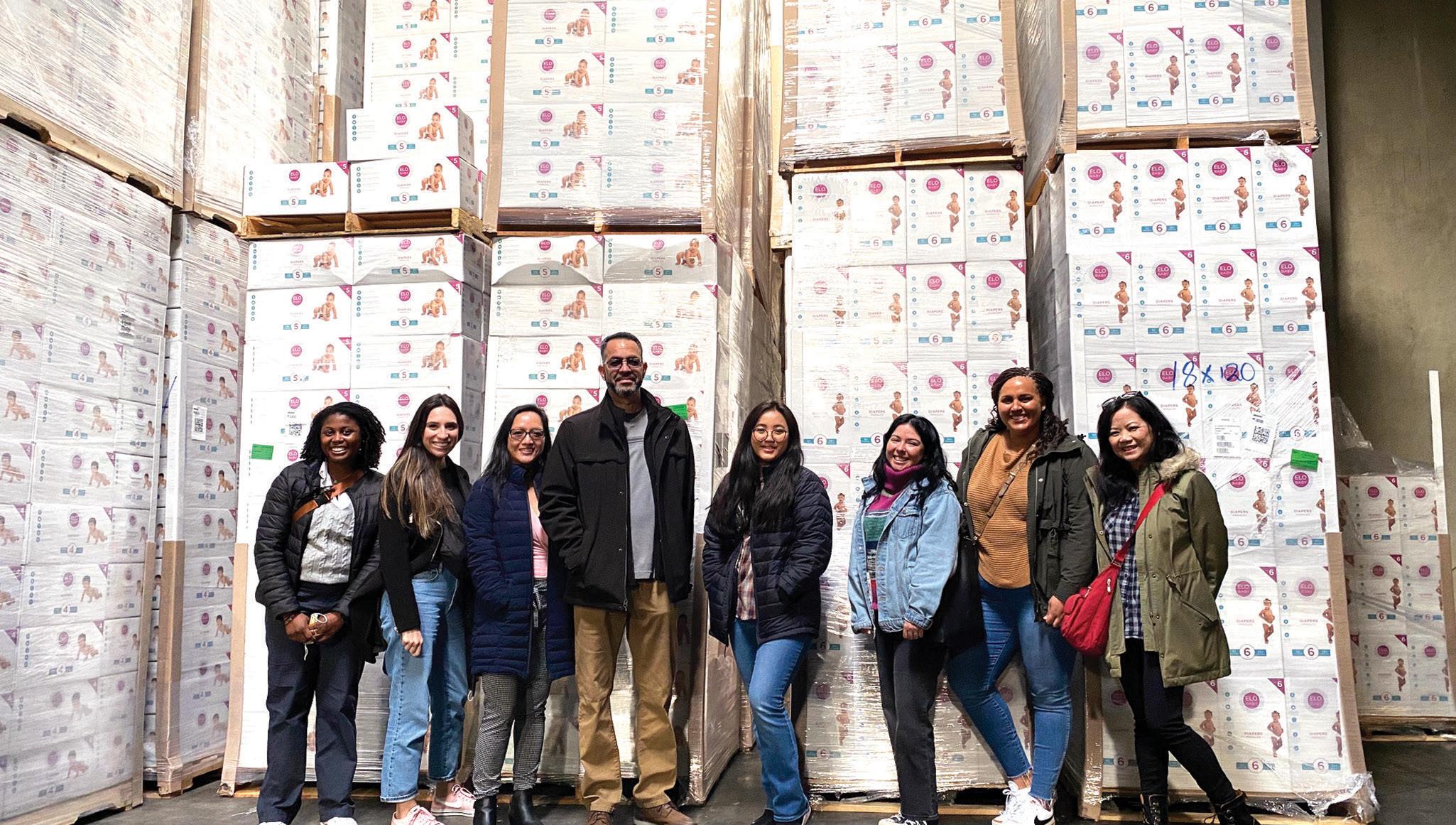
But what I’m most proud of is that in partnership with other advocates, state legislatures and city administrators, we have included diapers in the safety net in the city of San Francisco and in other communities across the State of California. So, it is our program, the San Francisco Diaper Bank [where] diapers are included in public assistance, and it’s still the only [such] program in the country that has fully integrated into public assistance programs. Any child under the age of two currently, who is eligible for CalWORKs, CalFresh, or Medi-Cal, can receive diapers. I’m very proud of that, and that our program inspired, in part, the State of California to allocate funding for diaper distribution across the state and has been a model for other states. It’s just a public policy win.
I’m very proud that we have been able to integrate our programs into the existing framework of good social service organizations that are already doing amazing work. We partner with public health departments. We partner with home visiting programs and I’m very proud if I think about the amount of lives that are changed, right? Like, not only are we putting money back into the hands of families that are struggling in this very high cost of living area, but we’re also putting money back into the community because their fami-
lies have more money to spend on rent, on medicine, on groceries. And I feel really proud that … we are making an impact every day.
Q: What kind of impact has giving back had on your own children?
A: When they were younger [and] when this was a nascent organization and there would be diaper drives, literally, my kids would be helping me bring the diapers to my car, counting the diapers. So, it was a great learning tool for them to learn math.
As a mother, I’m very grateful that I had the opportunity to share philanthropy with them in their very early formative years so that’s just integrated in who they are as people. Our family has always given back in a very big way.And my oldest is going to UC Davis this year. He’ll be a freshman and his cause is climate change. He’s going to school to be a mechanical engineer, because he wants to be involved in climate change solutions.
Q: What other social issues are you most concerned about that are impacting the Bay Area?
A: At Help a Mother Out, we work to alleviate income inequality from not just a tactical level, but from


“It’s really crucial that if you are in a position to help, that in addition to paying attention to what’s on trend – because there are trends in philanthropy – that you remember that giving back in your own backyard is crucial.”
a public policy level, so that is very close to my heart. I feel like, especially since the pandemic, that income inequality has grown so exponentially, and I wish that more folks could appreciate the struggles that so many working families are going through. I feel like it’s an invisible issue because our region is known for the great wealth and the money and the stock options and going public and I think that there was a lot more awareness during the pandemic.
And I would say that immigrant rights and just the plight of refugees and immigrants, that’s just a cause that is very close to my heart because I have seen relatives firsthand come to America and struggle, and I think that we are so fortunate to live in a culturally diverse region that it’s really important for us to remember that newcomers need supports because they are part of the community, and it just makes our community and economy healthier when we can support everybody.
Foster youth is [also] a cause that’s really close to my heart. It’s just so important because they don’t have as many resources or support, and especially foster youth who are aging out of the system. It’s important at any age to support youth, but to give young adults a fair start is incredibly crucial.
Q: So how can philanthropy best mobilize to address those three issues that you mentioned: income equality, immigration rights, and foster youth?
A: It’s really crucial that if you are in a position to help, that in addition to paying attention to what’s on trend – because there are trends in philanthropy – that you remember that giving back in your own backyard is crucial. International aid is important. Global climate change initiatives are incredibly important, and at the same time, it’s so important to remember that
there are people in your own backyard that are struggling, and that if you are in a position that you’re fortunate enough to have benefited from the Bay Area economy, it’s incredibly important that you remember to give back.
Q: If you were hosting a small dinner party and inviting two or three noted California philanthropists or donors currently making an impact, who would you have over for your get together?
A: I just love Oprah. She has used her power for good, coming from humble beginnings and becoming a billionaire. I mean she could run for president if she wanted to, and she doesn’t have to do anything. I just really admire her as a human being.
Also, Beyoncé and Laurene Powell Jobs. Jobs is involved in local philanthropy and is certainly a powerhouse in philanthropic spaces so I just think that she would be a really interesting person to talk to about local issues, specifically in the Bay Area, and then Beyoncé. I mean, she’s Beyoncé. I’m a massive fan girl of Beyoncé, and I’m very inspired by her philanthropy. She’s also a mother and has such a cultural reach.
And I’m very inspired by both MacKenzie Scott and Melinda Gates insofar as their philanthropy. They’re giving unrestricted funds, which I hope is trending upward in philanthropy, because I think that’s really what’s most needed. Philanthropists need to trust the folks who are doing the work with managing the money.

This year CURYJ launched a food justice program distributing groceries and hot meals to houseless encampments in West Oakland.
By Check:
Communities United for Restorative Youth Justice DBA CURYJ
1150 35th Ave Oakland, CA 94601
*Donation Memo: The Giving List
By DAF or Stock Transfer:
Tax ID# 27-5008441
By Credit Card: curyj.org/donate
Contact: Jessica Miller Director of Development (707) 477-5600 jmiller@curyj.org
Communities United for Restorative Youth Justice
www.curyj.org 1150 35th Ave. Oakland, CA 94601 (510) 842-9365

Xochtil Larios was only 16 when she found herself behind bars and caught up in the criminal justice system. She was already in prison for a year when she first encountered a Communities United for Restorative Youth Justice (CURYJ) advocate. What CURYJ (pronounced “courage”) discovered was that Larios was actually eligible to be paroled months before, but because her family on the outside was unhoused, the authorities kept her “behind the wall” (the organization’s idiom for imprisonment). Through CURYJ, Larios was matched with a foster care program that allowed her not only to gain her freedom, but through future engagement with the organization, set her on a path to future success.
Larios is just one of many young people who found their voice, power, and purpose as a result of CURYJ’s mission. Founded 14 years ago, the organization is devoted to ending the mass incarceration and criminalization of youths and to building community and creating and mobilizing youth
leaders, thereby transforming and uplifting the entire community it serves. The organization is the brainchild of George Galvis, whose earliest memory is of “profound domestic violence, fearing for my mother’s life when I was three years old.”
Looking back on his journey, Galvis recognizes that he reproduced on the streets what he saw at home, “because I look like my father and I know my pain through violence, until I was getting locked up and caught up in the criminal legal system.” By the time Galvis managed to free himself of the justice system, he already recognized that the problem of youth imprisonment and criminalization was a systemic, community, and generational problem. He had community healing in mind when he founded CURYJ.
CURYJ remedies high rates of recidivism in the community with programs like “Homies 4 Justice,” a paid internship for systemsimpacted youth ages 14-18 who are interested in becoming leaders in their communities. Interns also learn to heal
Communities
United for Restorative Justice (CURYJ) recently opened a physical personification of its mission in its first building, the Youth Power Zone at Fruitvale Station, the fruition of 14 years of hard work and dedication. CURYJ considers it the first building-block of community infrastructure that will help realize the end to youth incarceration in California during our lifetimes.
Any donation will help to develop Building Two of their Youth Power Zone, which will serve as a resource space for youth as well as a Climate Resilience Hub for the Fruitvale community.
trauma, ways to eradicate systemic violence, and social justice through community organizing and efforts to create alternatives to incarceration. Galvis espouses and promotes the need for youths to understand their historical patterns and ancestry and learn how to break that cycle.
“You don’t really know where you are going until you know where you’ve been,” says Galvis.
CURYJ also recognizes that while mass incarceration is a systemic problem, it is exacerbated by the for-profit prison industrial complex. The organization’s Dream Beyond Bars fellowship amplifies the political consciousness, political power, leadership and professional development of formerly incarcerated youths. The goal is to create leaders who will transform the juvenile justice system and create community-based solutions to incarceration and opportunities for diversion.
The program has already created a diaspora that has effectively lobbied for and created that change in the community, including co-authoring Proposition 57, and helping pass over 50 bills in the state of California, all of which have transformed the lives of systemsimpacted young people and their families.
The success of these programs can be seen in the 100+ systems-impacted young people enrolled in CURYJ’s
programs each year. And it can be seen in Xochtil Larios, who has gone on to receive her associate’s degree from Laney College. She is also a recipient of the California Endowment Community Champion Youth Award and she serves as a Youth Commissioner on the Alameda County Juvenile Justice Delinquency Prevention Commission – the first formerly incarcerated person to do so. She represents CURYJ’s vision for a future in which every young person is given the resources to heal, grow, and thrive.
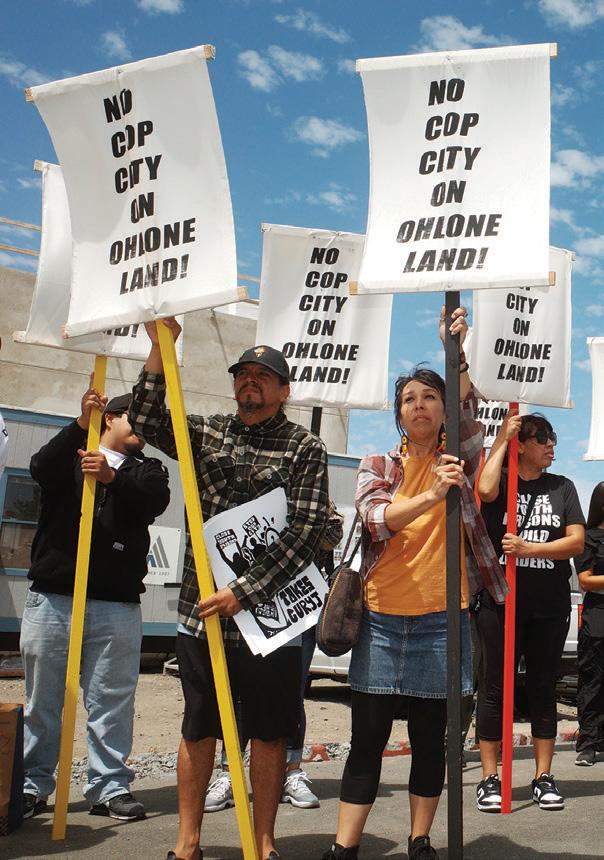
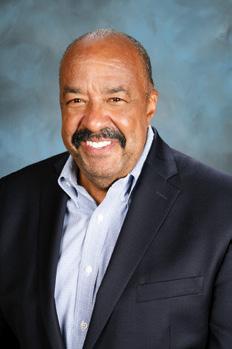
“W e share a long-standing, meaningful relationship and know that our enduring partnership will now bear fruit. The Youth Power Zone, grounded in a commitment to racial solidarity and radical community transformation, will not only bring vital services and programs to Oakland youth, but will be a safe space that’s both nurturing and inspirational.”
– Dr. Robert K. Ross President and CEO,
The California Endowment
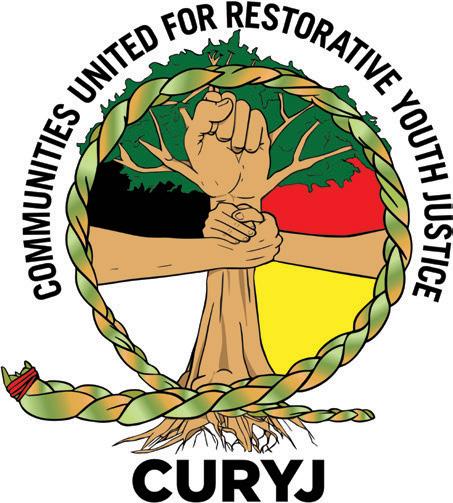

of
The California Endowment
Sierra Health Foundation Quinn Delaney
San Francisco Foundation
Akonadi Foundation
Kresge Foundation
The City of Oakland
Department of Violence Prevention Solidarity with indigenous communities.

“Iwas SHOCKED to learn that federal assistance programs do not cover diapers. When I heard that Help a Mother Out provides a reliable supply of diapers to Bay Area families in need, I knew I needed to help. I have been a donor and a member of the Board for several years now, and my passion for their important work with babies and families only continues to grow.”
Ashley
Chair, Help a Mother Out Board of Directors
By Check:
HELP A MOTHER OUT 101 Broadway, Ste. 250 Oakland, CA 94607
*Donation Memo: The Giving List
By DAF or Stock Transfer: Tax ID# 83-2001085
By Credit Card: helpamotherout.org/donate
Contact: Lisa Truong Executive Director (415) 508-3710 lisa@helpamotherout.org
Help a Mother Out www.helpamotherout.org 101 Broadway, Suite 250 Oakland, CA 94607 (415) 508-3710
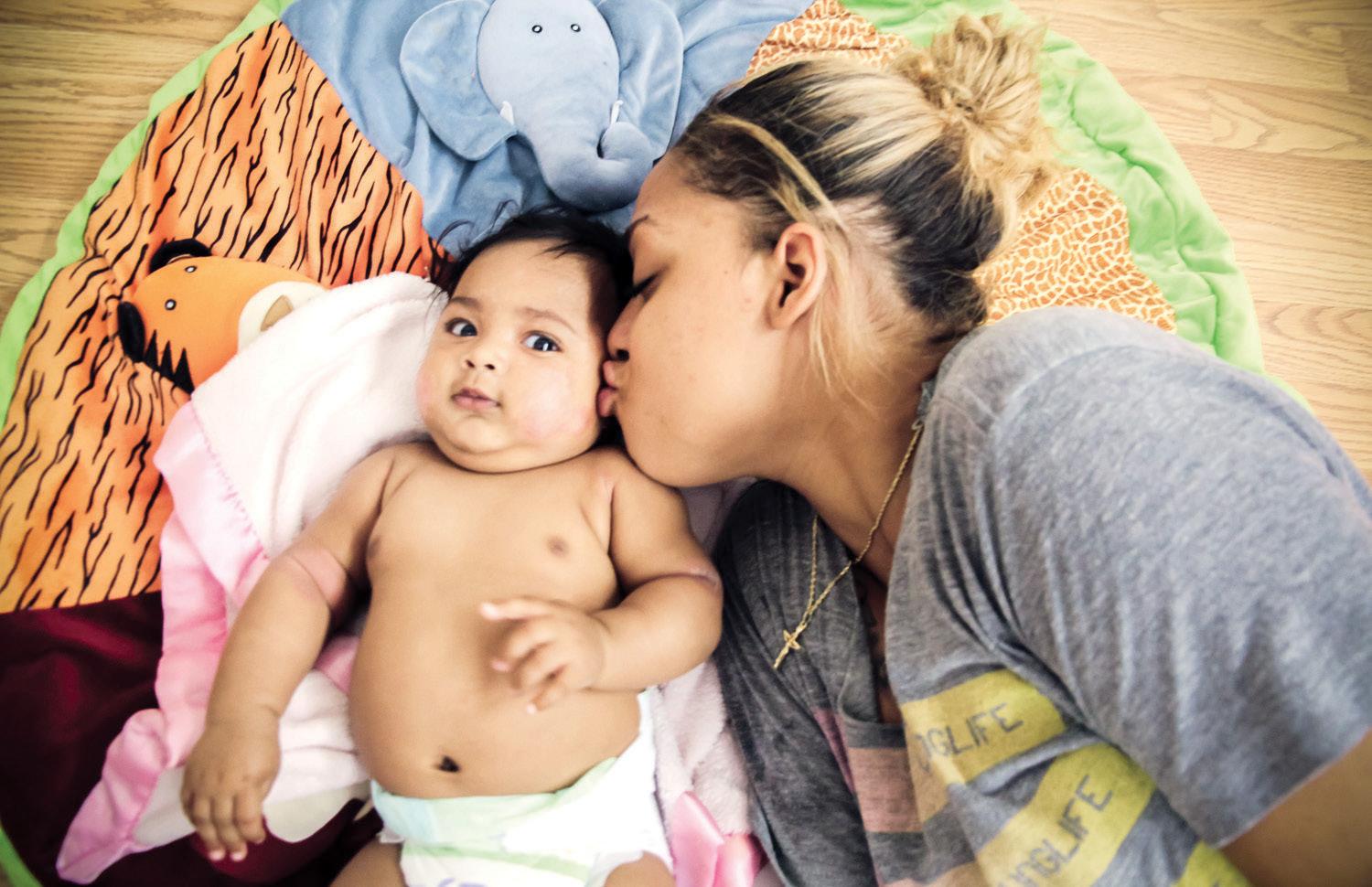
Amom in East Palo Alto went to jail for stealing diapers; her kids went to foster care.
According to the California Poverty Measure, approximately 375,000 babies in California do not have the diapers they need, and their families are going to extraordinary lengths to prevent serious infections.
“A child needs between six and eight diapers a day to stay clean, dry, and healthy. Newborns need between ten and twelve. The first time I learned that mothers would desperately go from one place to the next trying to collect maybe

ten diapers…it just broke my heart,” says Lisa Truong, founder of Help a Mother Out (HAMO), a nonprofit dedicated to ending diaper need.
HAMO operates the San Francisco Diaper Bank, the nation’s only diaper bank directly integrated into public assistance programs. For all of their programs, HAMO partners with local and state governments, manufacturers, and high-impact local distributors to give over 7,500 babies the diapers they need every single month. This summer, California renewed their diaper bank funding, but at a much-reduced level, burning a hole in the pockets of 50,000 families in the Bay Area.
“Here in the Bay Area, we talk a lot about the idea of Universal Basic Income. I believe that diapers should be the Universal Basic Income for babies. At the end of the day, it is a human rights issue that children in poverty don’t have one of their most basic needs, and diapers cannot be bought through federal support programs like food stamps or WIC,” says Truong.
According to HAMO’s internal records, the cost of diapers has increased
State budget cuts have jeopardized access to diapers for thousands of Bay Area families. Without diapers, children’s health is at risk, they cannot attend nursery school or daycare, and parents cannot pursue full-time employment. But with donor support, Help a Mother Out (HAMO) can continue to provide diapers to the Bay Area – keeping babies healthy and supporting family financial security.
Just $60 in donations can keep a baby clean and dry for an entire month. And as part of their year-end campaign, HAMO is running a $50,000 donation match program supported by dedicated donors Betsy and Peter Chung. Donate today to double your impact and help end diaper need.

48% since 2020 – without the support of HAMO, families struggle to provide their children with basic necessities.
“If every mom had enough diapers for their baby, the world would look very di erent,” explains one HAMO service user. “When my kids were younger, it was either I eat something or I buy the diapers. And 85% of the time, I would buy the diapers. I would rather pay for the diapers than pay for my food. It was a need that my babies had.”
Despite the heartbreaking stories they hear every day at HAMO, founder Lisa Truong is hopeful.
“There are so many complex issues in the world. But this one is simple. By producing our own private-label
diaper brand and distributing directly to family service agencies, we have developed the infrastructure to end diaper need in California. We just need the donor support to increase our reach,” says Truong.
In 2023 alone, HAMO delivered over 13 million diapers. Ninety-three percent of families now say they have more money for food and 96% say their child is healthier.
“My mom’s friend told me about the HAMO diaper program and ever since it has been life-changing. It changed me so much. With the money I don’t spend on diapers, I can buy food for my kids. It’s a big difference,” says a thankful HAMO client.
The need in our community is increasing, while the cost of diapers and diaper distribution has also gone up.
In the last three years, the retail price of diapers has risen roughly 48%, and our costs have risen by 22%. This creates a cycle in which more people need diapers and less people are able to a ord them.

HAMO BOARD OF DIRECTORS:
Annie Bercovich Myers
Ashley Martin-Golis
Caroline O'Connor
Claudia Cesena
Denise Bethel
Meghan Crowell
Mitra Rezvan
Swati Pande


Advocacy is about standing up for people in need and speaking up for those without a voice. Whether global or local, we are thankful for the brave advocates you will read about in the following pages.
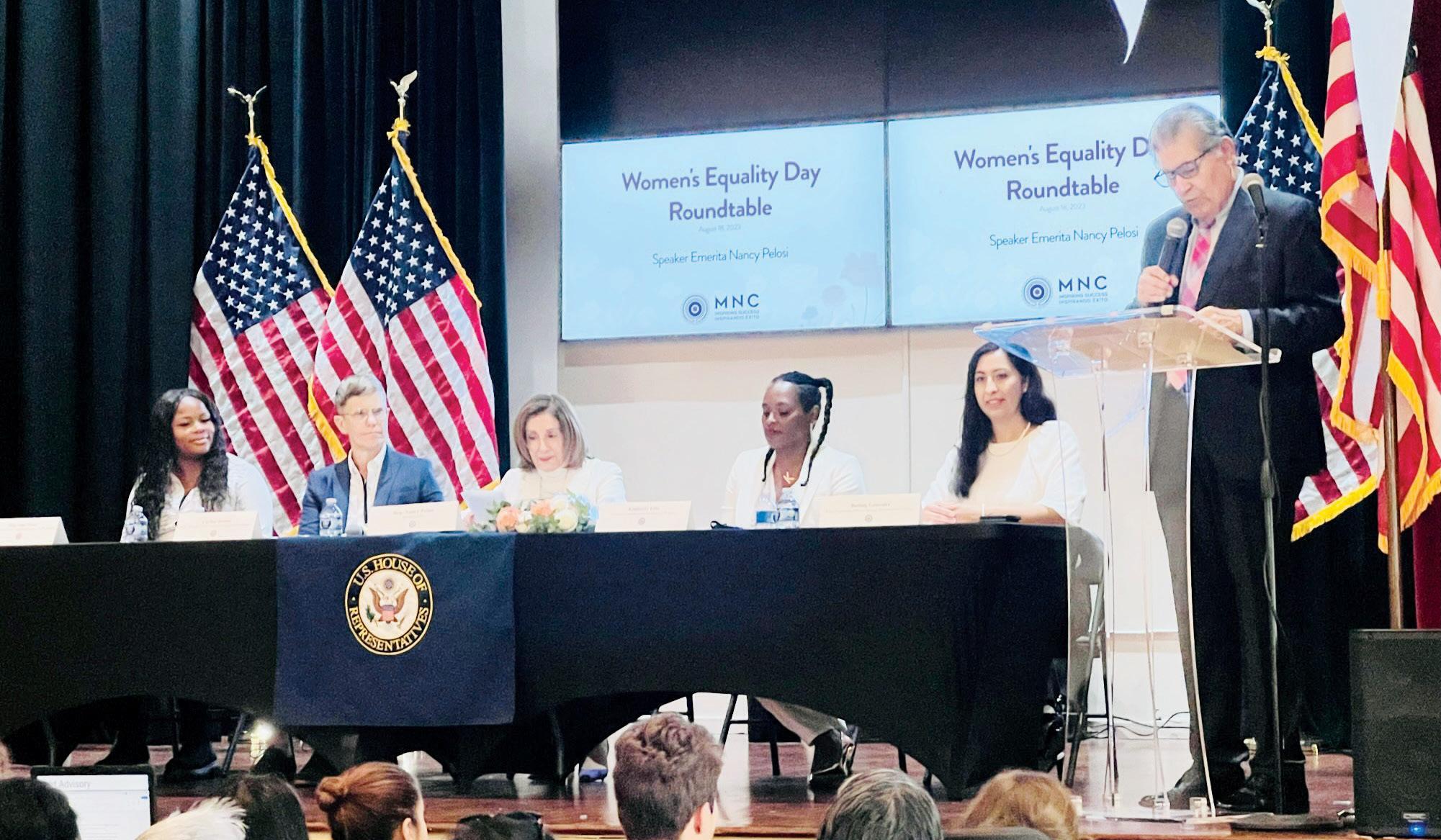
Kimberly Ellis’s political activism flame was lit in the 3rd grade when she learned about Shirley Chisholm, the first Black woman elected to Congress – a picture of whom proudly hangs on the wall of her current office. This early and powerful inspiration led her to pursue leadership roles throughout her education and eventually into a career focused on women’s empowerment and social change.
A prominent advocate for women’s equality and social justice, Ellis currently serves as the Director of the Department on the Status of Women for the City and County of San Francisco, where she works to advance gender equity across various sectors including nonprofit organizations, government, and philanthropy.
With a background in law and a passion for politics, and a recognition of the interconnectedness of various challenges facing society today, Ellis is known for her intersectional approach to social issues, which for many years was focused on her work with Emerge America and eventually her leadership of Emerge California – a six-month intensive training program for Democratic women planning to run for elected office. Her work spans from grassroots organizing to policy making, always with a focus on creating a more equitable world for women and girls. Her vision for philanthropy and social change emphasizes collaboration, innovation, and the unique leadership qualities that women bring to solving complex societal problems.

Q: You’ve toggled back and forth in your professional life between politics and nonprofit and philanthropic endeavors. Can you talk about why you came to believe that giving back matters, and what made you feel the nonprofit world provided an important safety net for our society?
Kimberly Ellis: For me, the focus of my professional career, whether in nonprofit, government, or philanthropy, has really centered around women’s equality. I know that when women are supported at the same rates as men, when women are given equal opportunities, when women are invested in at equal rates, and when women are in positions of leadership equal to men, agendas change, conversations change, outcomes change, lives change, and our society changes.
Using my time, talent, and energies to bring about a more equitable world for women and girls has been a really important part of my purpose. I know that all sectors, whether nonprofit, business, philanthropy, or government, have a role to play in bringing about a fairer and more equitable world for everyone, including and especially women and girls. For me, there was less focus on which sector or industry I was working in and more focus on whether that particular entity at that moment in time was as committed to gender

This is a really different world that our kids are growing up in today than when we Gen Xers grew up. They have much more information at their fingertips than we ever did, but they also have equally much more disinformation. There’s a constant, almost daily


love with the idea of political activism. Learning about how she chose to use her voice and her power to reach back and help others made me catch the political bug. I decided that I wanted to do everything I could to be like Shirley when I grew up.
From there, I ran for student rep in third grade and continued along that path, being active in student government throughout my education. After college, I struggled to find a way to continue with activism in the real world, which led me to law school. Eventually, I happened upon an organization called Emerge California, which changed my life.
Q: Do you think local governments work closely enough with the philanthropic sector and community foundations to engage in public-private partnerships or to search for solutions together?
A: I think that there certainly have been collaborations in the past, but with the ongoing impacts of COVID and the unraveling of our social safety net across the board, there is a need for even more collabo-
ration and partnership to happen. The way it had been done in the past was often in silos and somewhat haphazard. What we need now is a more concerted effort to really connect the dots, to utilize the bully pulpit of government coupled with the entrepreneurial ethos of philanthropy to devise innovative solutions for this new terrain we find ourselves in.
Q: What do you see as the biggest issue facing the Bay Area?
A: I think it’s affordable housing. Too many people cannot afford to live where they work, or even an hour away from where they work. Many people can’t afford to live within this state anymore. We need to have an honest conversation with ourselves about what that means, not just for us but for future generations, for the health of our cities, our state, and our planet. Being able to afford a roof over your head, food in your refrigerator, clothes on your back, funds for transportation, healthcare – these are things that as a society, we should say are human rights. If they are
“What we need now is a more concerted effort to really connect the dots, to utilize the bully pulpit of government coupled with the entrepreneurial ethos of philanthropy to devise innovative solutions for this new terrain we find ourselves in.”
human rights, then what do we need to do to ensure that everyone has access to those things? We have the money, we have the technology. What’s often missing is the political courage to make the decisions that need to be made, thinking about what’s most important in-



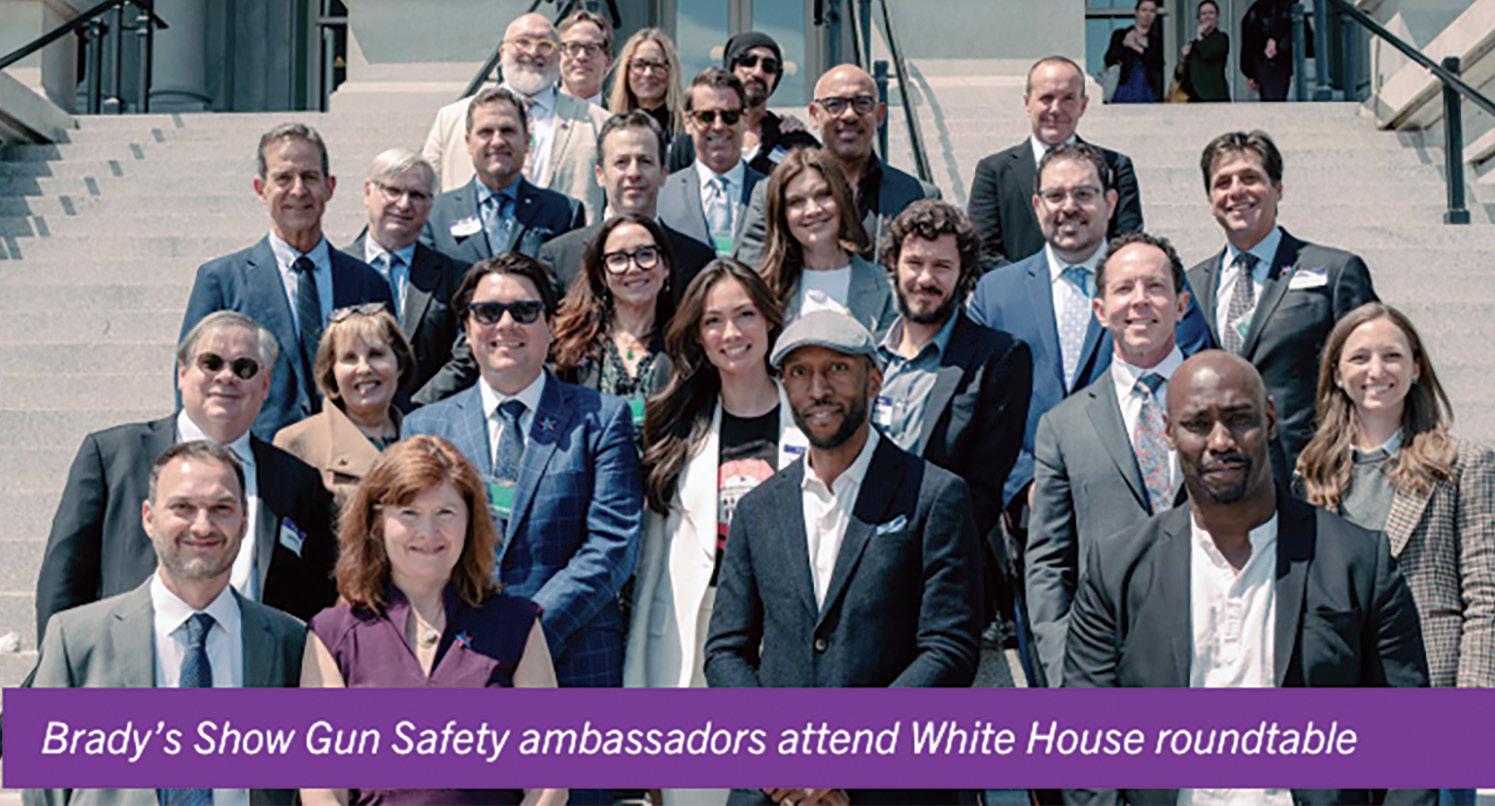
By Check:
Brady Center to Prevent Gun Violence
840 First Street N.E., Ste. 400 Washington, D.C. 20002
*Donation Memo: The Giving List
By DAF or Stock Transfer: Tax ID# 52-1285097
By Credit Card: bradyunited.org/donate
Contact: Liz Dunning (she/her/hers) Gun Violence Survivor & Chief Development and Engagement Officer (202) 370-8149 ldunning@bradyunited.org
Brady Center to Prevent Gun Violence
840 First Street N.E., Ste. 400 Washington, D.C. 20002 (202) 370-8149
here is only one thing Brady: United Against Gun Violence (Brady) Chief Development and Engagement Officer Liz Dunning wants you to know: The leading cause of death for children is preventable.
Four years ago, Dunning sat across the table from her seven-year-old son, Max. They were having dinner when Max said he was concerned about doing his first shooter drill tomorrow at school. The classmate he had been

"We're
paired with was talkative, and Max worried that they wouldn’t be quiet enough.
“You can’t have those conversations with your child and not know that something is wrong in our country,” says Dunning. “Yet the biggest challenge I face in my role at Brady is speaking with folks who think gun violence is an issue that is too big to do anything about. But when you think about getting into a car and putting on a seatbelt or understand intuitively that you’re not allowed to smoke in a restaurant, you can see that we have the power to make permanent change in gun violence as a public health issue.”
Responding to the terrible tragedy in Uvalde, Texas, Brady helped pass the first federal gun legislation in 30 years. Rates of gun death and injury have lowered meaningfully, but gun violence still remains higher in the USA than in any other developed country. To live in a world where our children don’t have to attend school shooter drills, we need a cultural shift.
Brady is partnering with Hollywood producers, actors, screenwriters, and showrunners to depict more realistic gun use on TV and in movies. For example, Brady helped the team working on S.W.A.T., a TV show featuring law enforcement, portray safe storage of
Gunsare the #1 killer of children in this country, an unacceptable reality. As they have done for over 40 years, Brady: United Against Gun Violence works to change the laws, change the industry, and change the culture around guns in the United States. Brady’s “Show Gun Safety” campaign and award-winning “End Family Fire” program save lives each and every day, but the scale of the impact depends on you.
With an additional $3 million dollars, Brady could increase their impact exponentially. For example, Brady could conduct a marketing campaign aimed at new gun owners to increase safe gun storage to reduce suicide, school shootings, and domestic violence. Eight children a day are killed or injured due to an unsecured gun in the home. You can help end this. Donate today and free America from gun violence.
a service weapon in the home, a legal requirement in most states. Then, earlier this year, Brady joined forces with creative agency McCann New York to launch a national campaign to shift perspectives around guns and gun ownership in America. This strategic partnership comes at a critical time in our nation with guns now the number one cause of death for children, surpassing automobile accidents and cancer as of 2020.
Brady has also partnered with the Ad Council on their End Family Fire campaign to circulate public service announcements on safe gun storage within the home.
“We know that access to a gun increases the risk of suicide by 300%. In
fact, two thirds of gun deaths are accidental gun injury and suicide. It is realistic to say that 70% of those deaths would be prevented through safe gun storage,” explains Dunning. “By tomorrow we could cut gun violence in half by storing guns safely.”
As for impact, viewers of the End Family Fire public service campaigns were 310% more likely to research safe gun storage, and 48% took action to store their guns more safely.
“We know that when people see the ads and they think about the issue, they take action,” says Dunning. “We don’t have to wait for political action to make progress on the number one killer of our kids.”


“I’m
proud to support Brady’s groundbreaking Show Gun Safety campaign to be more intentional about how guns are portrayed on screen. We in the creative community must do our part to create a safer America free of gun violence — and that change can start in the characters we create and the stories we tell.”
Now in its second year, Show Gun Safety has created a network of over 300 screenwriters, show runners, producers, actors, and executives dedicated to furthering gun safety principles.
Gun violence is the #1 cause of death for children in the U.S.
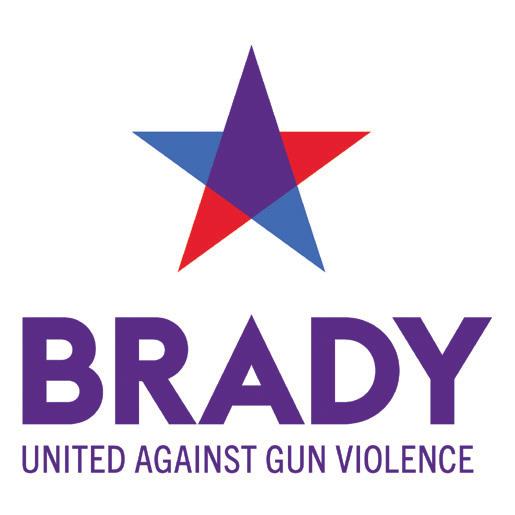
BRADY CENTER 501(C)(3)
Dr. Joseph Sakran (Board Chair)
Kristin Brown (President)
Tony Porter (Treasurer)
Roberto Gonzalez (Secretary)
Gene Bernstein
Thomas Dixon
Roberto Gonzalez
Ricki Tigert Helfer
Lynn McMahon
Martina Leinz
Joshua Solomon
Helen Torelli
Joe Trippi
Kath Tsakalakis
David Wah

“LSC is an organization that I know and trust. I previously worked as an LSC attorney, and I’ve remained a supporter and donor ever since. I’ve seen firsthand how the combination of dedicated legal advocacy and intensive social work support can fundamentally change the trajectory of a young person’s life. LSC has helped thousands of youth involved in the legal system to find the safety and stability they need to realize their full potential in life. I can’t think of a better way to support children in our community than donating to LSC.”
–
Erin O’Donohue
LSC Donor and Supporter
By Check:
Legal Services for Children, Inc.
870 Market Street, Ste. 356 San Francisco, CA 94102
*Donation Memo: The Giving List
By DAF or Stock Transfer:
Tax ID# 51-0169463
By Credit Card: lsc-sf.org/donate
Contact: Cathy Sakimura Executive Director (415) 780-6333 cathy@lsc-sf.org
Legal Services for Children, Inc. lsc-sf.org
870 Market Street, Ste. 356 San Francisco, CA 94102 (415) 863-3762
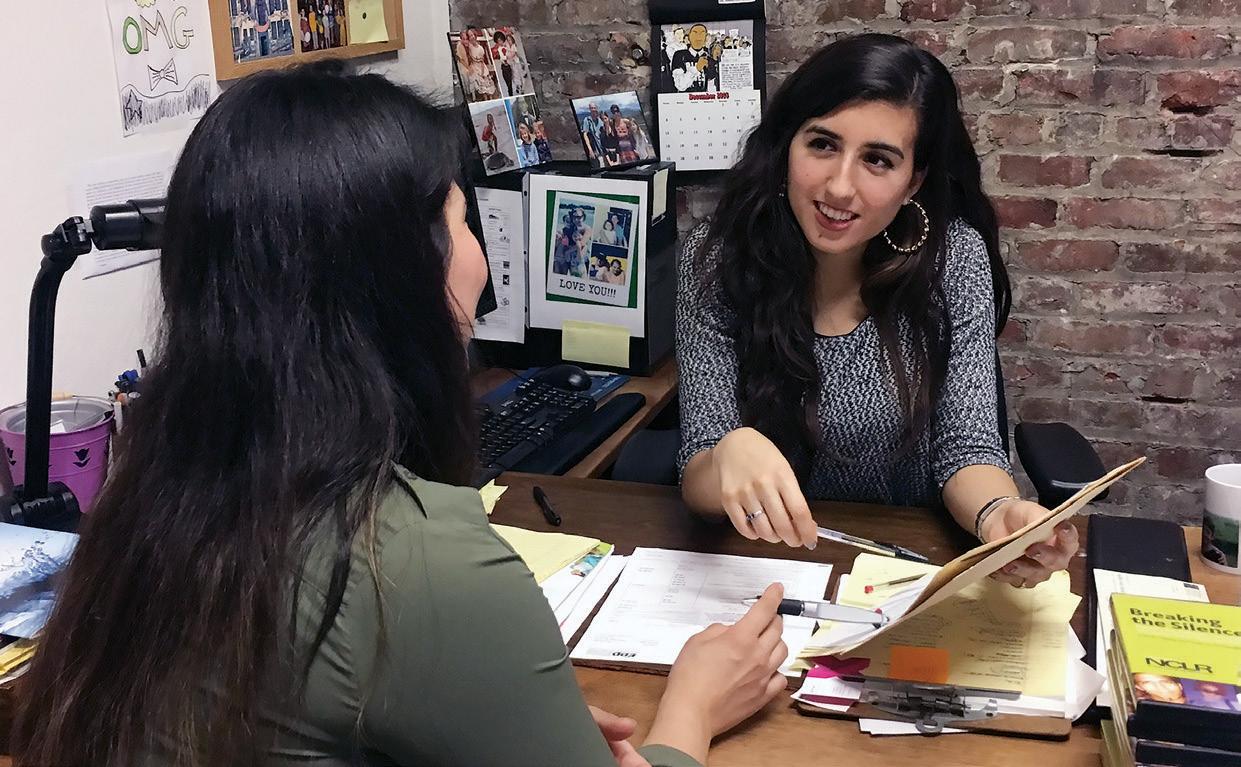
Legal Services for Children deeply believes that every youth deserves to grow up feeling safe and nurtured. Unfortunately, there are many cases, all too often traumatic, where a child is left without a parent or guardian, and their road ahead looks to be turbulent, unpredictable, and frightening. This is where the nonprofit Legal Services for Children (LSC) steps in to fiercely advocate for children and youth who require legal assistance to stabilize their lives and realize their full potential. All at no cost.
LSC believes in “empowering children to make their own decisions,” says Joyce Lupack, the development director at LSC. This is why LSC doesn’t advocate for what they believe is their clients’ “best interests.” In cases where a child is left without a parent guardian, adults typically decide what’s in the child’s “best interest.” At LSC, they work through the options in an age-appropriate way with their young clients so youth can decide what’s best for themselves. “We respect that kids are experts in their own lives,” says Lupack.
Fifty years ago, the organization was founded so that youth in crisis could be represented by attorney-social
worker teams – filling a much-needed gap in the community. At its inception, it was one of the first youth law firms in the country and one of the first to pair social workers and legal advocates, which is now the gold standard for youth representation. Today, LSC stands out from similar organizations because it provides a wide range of therapeutic care, says Lupack.
Through school counselors, a hotline, and referrals, the organization connects with youth in need in the Bay Area. “We work with children and youth who are in crisis in the Bay Area, most of whom don’t have the support of their parents,” shares Cathy Sakimura, an attorney and the executive director of LSC. The nonprofit’s impact is best demonstrated by its many success stories of children who have benefited from its programs.
Lupack recalls one child who had no father and whose mother was dying of cancer. LSC worked with her to determine who she would like to take care of her after her mother passed. The client had a pet that she didn’t want to part with, and with the help of LSC, she found a guardian who would also allow her to bring along her beloved
When a child’s parents pass away or are unable to care for them, often the best outcome for that child is to have a family member or family friend become their guardian. When a child or youth can choose their own guardian, instead of entering foster care, they can stay connected to their community, attend the same school, and have the support of a caring adult who is already in their lives.
Legal Services for Children (LSC) works with over 120 children and youth each year who need a guardian. LSC attorneys help these young clients understand their options and then ask a court to appoint an adult of the child’s choice as the child’s legal guardian. Additionally, LSC social workers help make sure the mental, physical, and educational needs of their young clients are met.
Your donations help LSC ensure these children have the stability and support they need to thrive.
animal. This is the ideal outcome for LSC – a solution where the child’s wishes are respected, their life is stabilized, and healing becomes possible.
In 2025, the organization hopes to focus on its Guardianship Program, which helps children who cannot live with their parents find adult caregivers. Additionally, the organization continues to focus on representing children in foster care, education, and undocumented children
who are in this country without their parents, including children who are in immigration detention centers.
At LSC, their client-centered, holistic approach guides today’s youth so they can thrive in their community and beyond.
“The individual impact on each young person is tremendous and has a ripple effect in their communities,” says Sakimura.
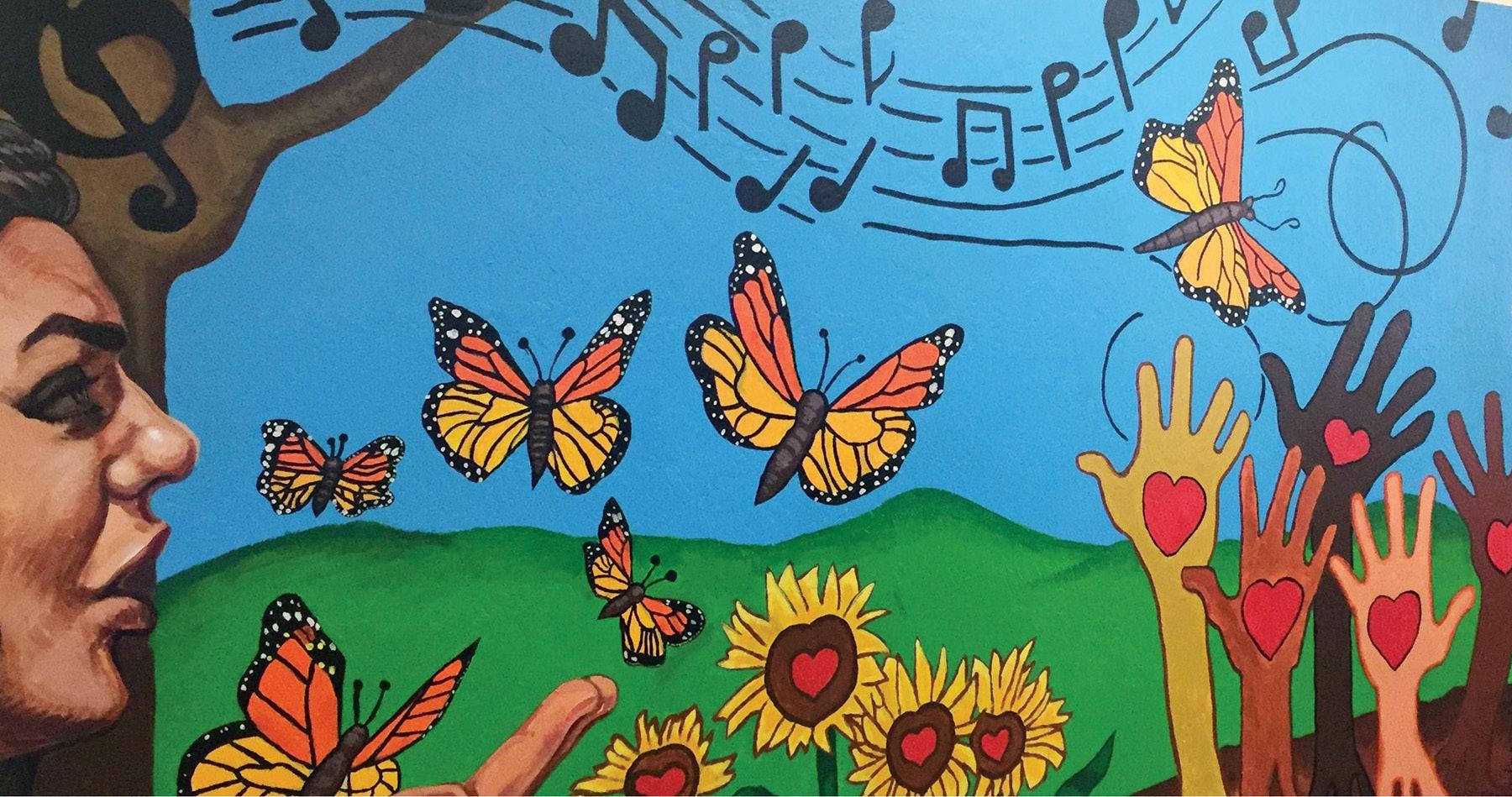

LSC social workers organize group outings around the Bay Area for clients to meet other young people with similar experiences.
INDIVIDUALS
Ann Alpers
Dana Emery
Joshua Meltzer
& Shannon Stockdale
Stephen Sagar & Susan Semonoff
MacKenzie Scott’s Yield Giving
Sue Stuckwisch
Susan & David Tunnell
Asa Wynn-Grant
FIRMS
Akin
Covington & Burling LLP
Keker, Van Nest & Peters LLP
Morgan Lewis
Bigglesworth Family Foundation
Cameron Schrier Foundation
Firedoll Foundation
William G. Gilmore Foundation
Horace W. Goldsmith Foundation
Long Ridge Foundation
Morrison & Foerster Foundation
May & Stanley Smith
Charitable Trust
van Löben Sels/RembeRock Foundation
Venable Foundation
Bernard E. & Alba Witkin
Charitable Foundation
Zellerbach Family Foundation

“I have been waiting for months to do this, to bring Spoken Word to the White House! These young poets are so inspiring. What an incredible example to my daughters about the good of our future.” – First Lady Michelle Obama, “White House Poetry Jam” with Youth Speaks/Brave New Voices
By Check:
Youth Speaks, Inc.
265 Shotwell Street San Francisco, CA 94110
*Donation Memo: The Giving List
By DAF or Stock Transfer:
Tax ID# 91-2134499
By Credit Card: youthspeaks.org/donate
Contact: Michelle “Mush” Lee Executive Director mlee@youthspeaks.org
Youth Speaks youthspeaks.org
265 Shotwell Street San Francisco, CA 94110
(415) 255-9035
Youth Speaks alumni include an Obama speechwriter, the founder of a Black-owned media tech company, and the youngest inaugural Poet in history, Laureate Amanda Gorman.
Through literary arts-education, youth development and narrative change programs, Youth Speaks has long helped youth as young as 13 develop, publicly present, and apply their unique voices as agents of change, says Executive Director Michelle “Mush” Lee. But the San Francisco-based nonprofit is also now training selected alumni to speak publicly on issues that transcend personal identity and individual culture.
“We have individual poets from all over the country who … can command a room. They can be truthful, honest, provocative, and compassionate,” Lee says. “But what does it look like for a group of young people in our programs to apply their voices collectively towards a common goal?”
The Public Poets Fellowship is a new, year-long narrative change and public speaking training program for alumni youth between 16 and 26. It enables them to do more than just write and perform poetry about society’s
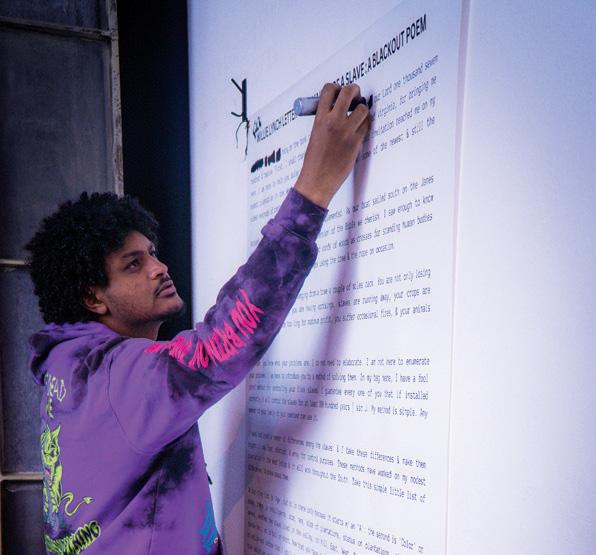
Youth Speaks believes in the power of fostering creativity through the arts to support the healthy development of BIPOC, immigrant, newcomer, LGBTQIA+, and youth with intersecting identities whose stories are systemically and historically silenced.
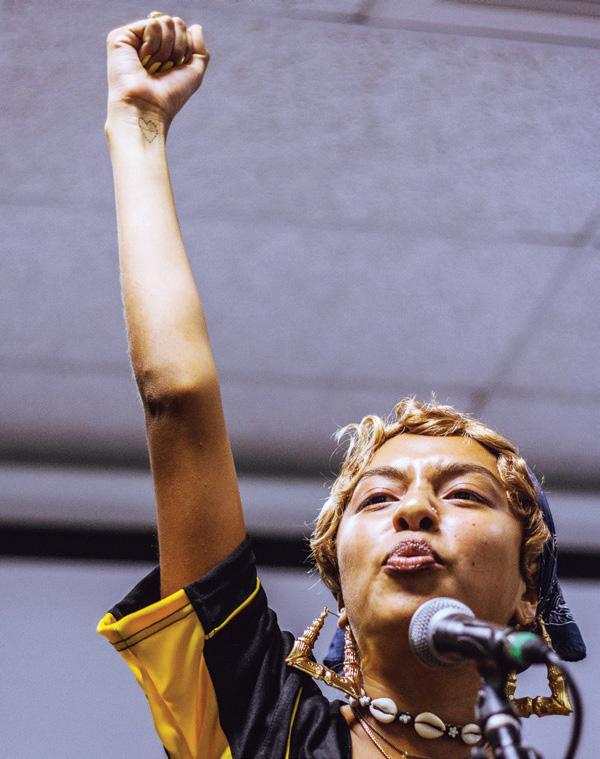
For over two decades, Youth Speaks has supported thousands of young people in finding their authentic voice, created opportunities for youth voice to be heard, and built a national field of practice organized around youth-spoken word.
ills; it empowers them to be vehicles of change in their community and beyond so that they don’t have to keep writing the same poem.
“Public Poets is a direct vehicle for young writers to participate in social justice policy change in communities where young people feel divested/attacked/ ignored by the government. ‘Public Poets is less about turning poets into policy experts. It’s about preparing a new generation of writers and speakers to use their talents to heal civic trauma, build trusted connections, and guide public dialogue— essential elements to advancing any social change e ort forward,” says Lee. “The 10-month fellowship program includes public speaking coaching, narrative power building lessons, deep arts practice, mentorship, social media content creation, and public appearances including poetry performances, speaking engagements, panel discussions, and moderating interviews.”
Youth Speaks was created in the mid1990s as young Black and Brown men were being overpoliced, the hip-hop art and culture movement was going mainstream, and government agencies
Youth Speaks’ Public Poets Fellowship is a new, innovative year-long narrative change and public speaking program for youth/young adults. The program is currently in Beta launch.
“I want to create art at Youth Speaks that contributes to making the kind of change so that no poet will have to write the poems I do,” says Youth Speaks alumni. “That’s the driving motivation of Public Poets.”
The Fellowship, which provides stipends of between $15,000 to $25,000 to each participant, will allow fellows to amplify their voices to be creators and leaders of change. $260,000 is needed by December to add up to four more fellowship seats (for a total of eight this year), while also building out key internal infrastructure.
were waking up to the importance of investing in youth development.
Today, Youth Speaks continues to be ever more relevant and vital, following years of racial reckoning and persistent structural racism, and in response to the deep and long-lasting impacts of the COVID pandemic on youths’ mental health and the harmful e ects of social media and excessive screen time.
The BIPOC and women-led nonprofit is also home to popular writing and performance workshops that it hosts in schools and neighborhoods, its Under 21 Open Mic events, and its flagship Brave New Voices Youth Poetry Festival and Queeriosity, which gives LGBTQI youth of color a safe space to express themselves.
Most participants say its events have positively a ected their mental health and helped them see other perspectives.
Youth Speaks also stays relevant by growing its digital presence. Last year, in addition to the thousands of youth and others reached in schools and in-person programs, the nonprofit reached 20 million people on Instagram, had four million views on TikTok, and two million views on YouTube.
Due to popular demand, Youth Speaks is set to extend its reach to students as young as 10.
“We youth share such similar experiences, but I find that sometimes poetry is the only time we’re truly brave enough to share it,” says Myra, 17. Youth Speaks does just that – it allows youth to share an important voice. And the community is listening.

“Youth Speaks/Brave New Voices gives kids an opportunity to share their stories with us, it gives them an opportunity to meet each other, to spark something amazing. It's inspiring to me as an artist and as a person.” – Rosario Dawson, Award-winning Actress, Singer, Filmmaker

“I found Youth Speaks at age 15 and it contributed to my life in more ways than I could count or repay. Youth Speaks gave me a community of young artists, the performance opportunities of my dreams – the world’s best mentors and a toolkit for cultural change. Youth Speaks taught me creative career-building skills, confidence, and self-worth as a young person. I stayed at Youth Speaks until I was 23, when I began to travel as a full-time musician.”
– Jada Imani
Youth Speaks Alum, Youth Advisory Board Member 2016-2017




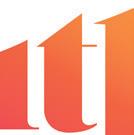



San Francisco Department of Children, Youth & Their Families
William & Flora Hewlett Foundation
Battery Powered (The Battery Club)
Barbara and Amos Hostetter
Lemonade, Inc.
Mayor's O ce of Housing and Community Development, City of San Francisco
The John D. and Catherine T. MacArthur Foundation
California Arts Council
Crankstart
National Endowment for the Arts
Governor's O ce of Community Partnerships and Strategic Communications
The Hearst Foundation
Foundry10
Acton Family Giving
Hellman Foundation
Jenny Fan Raj and Nehal Raj Golden State Warriors
Walter & Elise Haas Fund Poetry Foundation
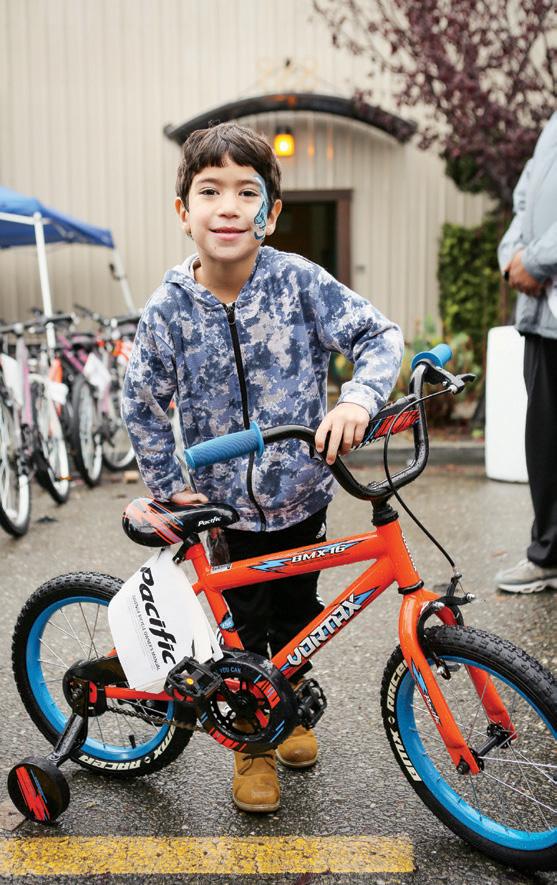
Since its founding in 1978, Legal Services for Prisoners with Children (LSPC) has been at the forefront of criminal justice reform, as one of the first organizations to support incarcerated women when their struggles were nearly invisible. Over the decades, LSPC expanded to serve all incarcerated and formerly incarcerated people, advocating for the restoration of civil and human rights, family reunification, and community healing. The organization takes a unique, holistic approach by combining legal advocacy, policy work, and grassroots organizing to address the systemic injustices of mass incarceration.
“We were successful in advocating to amend the California Constitution, restoring the right to vote for over 50,000 people on parole,” says Executive Director Paul Briley. “We’re building a movement, not just another nonprofit.”
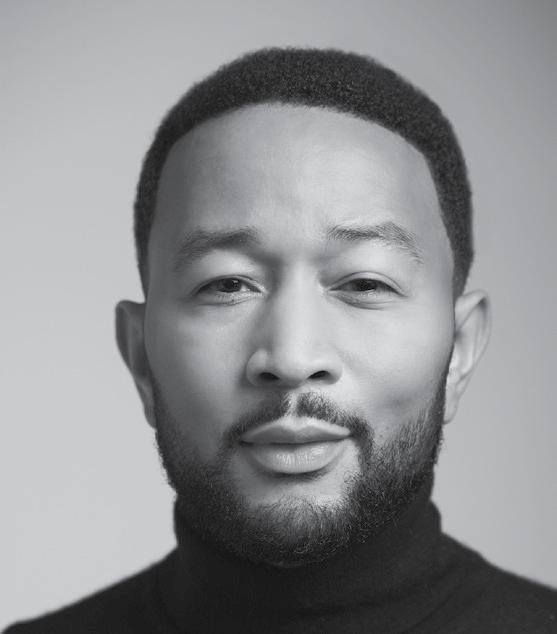
“I n California, one in three of our residents-our friends, neighbors, and family members-has a criminal history. Even in the toughest circumstances, people have the potential to learn, grow, and recreate themselves.”
– John Legend Artist/Activist
LSPC litigates trailblazing cases resulting in new legal standards, including expanding alternatives to incarceration, ending long-term solitary confinement in California, and preventing the shackling of incarcerated people who are pregnant.
Through its All of Us or None (AOUON) project, LSPC empowers formerly incarcerated individuals to lead policy initiatives, advocate for their communities, and challenge the discrimination they face because of their conviction histories. With over 30 chapters, it is the largest group of formerly incarcerated people engaging in policy and legislation reform in the country. “We introduce policy at a local level,” says Briley, “Then it turns into a statewide measure, and then it permeates throughout the entire country.”
Alissa Moore, LSPC’s Reentry Coordinator, knows the power of this work firsthand, as she was incarcerated

when she was 17. Soon afterwards, Moore started working alongside LSPC as an AOUON member, helping others facing life in prison. “I started filing litigation for myself and my cellmates because I could read, and a lot of my counterparts didn’t have that skill to be able to advocate for themselves,” she says. When she was released almost 25 years later, LSPC hired Moore through the Ronald “Elder” Freeman Memorial Policy Fellowship, to support the very women she was incarcerated alongside, helping them prepare for parole hearings and advocate for their own freedom.
From the beginning, LSPC has addressed the collateral impacts on families through its Family Unity Project. This Project is designed to strengthen family relationships during and after incarceration by expanding visiting to maintain family bonds, advocating to reduce financial burdens for families, and removing barriers to family reunification upon release.
LSPC receives hundreds of letters annually from prisoners asking for advice or help, and they respond to

Legal Services for Prisoners with Children (LSPC) is asking for individual donations to cover program costs for their Elder Freeman Policy Fellowship. The Fellowship is an intensive 12-month program for formerly incarcerated individuals, who are returning to their community, that teaches them grassroots organizing, legislative and administrative advocacy, and other strategies to run local and state campaigns with the important goal of elevating the leadership of formerly incarcerated people in criminal justice reform.
• $225,000 sponsors (3) full-time Fellows through 2025.
LSPC Executive Director Paul Briley, a 2019 Fellow, describes the program as a powerful vehicle for helping people who are coming home from jail and prison return to their communities as an asset and not a liability.
every single letter. And when these individuals are freed, LSPC is waiting to welcome them home. They host a group dinner with spiritual and community leaders and surprise each newly released citizen with a gift amounting to more than the $200
“gate money” the prison system gives them upon release, an amount that has not increased since the 1970s.
LSPC has shown that even such seemingly small gestures make a large impact when citizens feel cared for and supported.
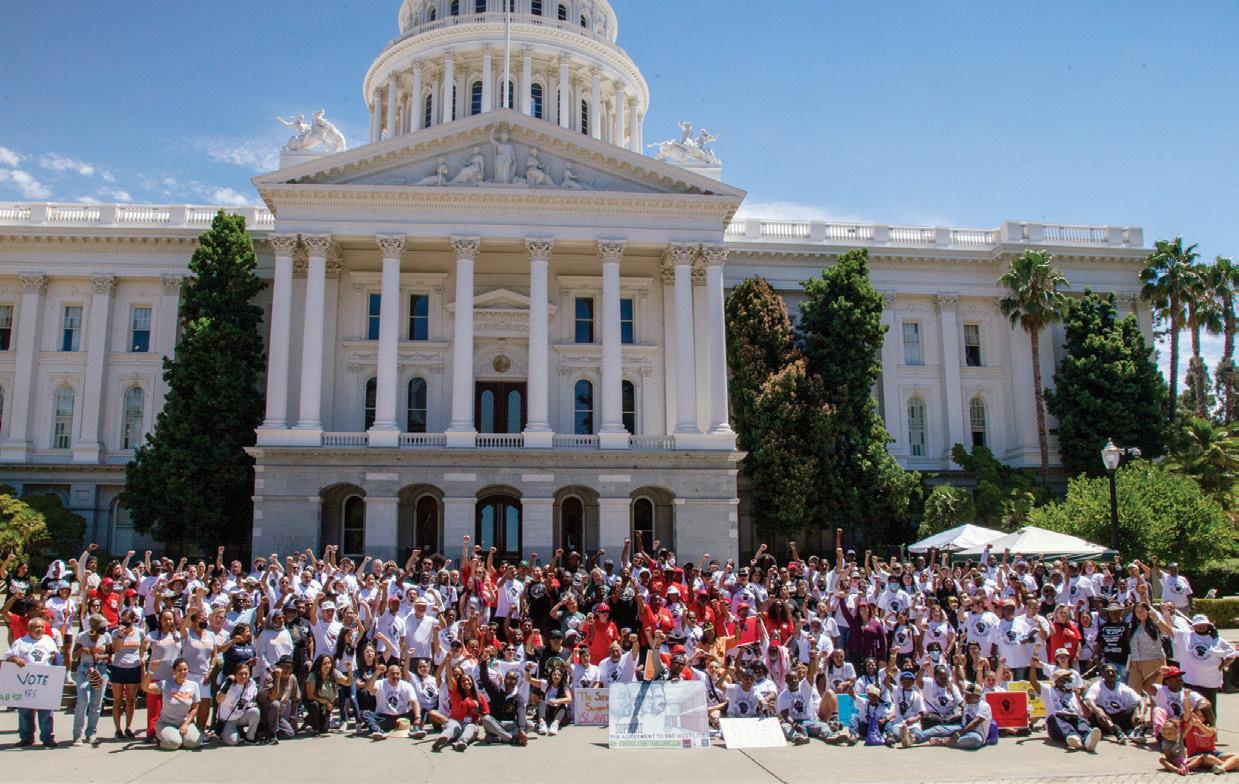
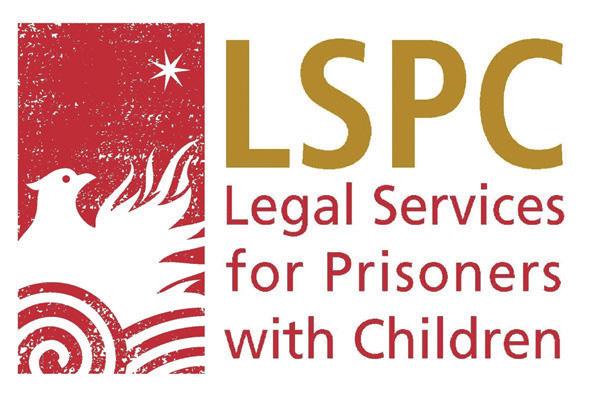

“W hen Kalima looked at me with his liquid brown eyes and asked, ‘What are you going to do with your newfound freedom?’ I didn’t answer with words. Instead, I lived it. I would become an asset to my community and not a liability, and fight for justice for every human being living in a cage or coming out of one. LSPC provided the opportunity for me to do that.”
– Dorsey Nunn
Author of What Kind of Bird Can’t Fly and LSPC Executive Director Emeritus
By Check:
By Credit Card: bit.ly/donate2LSPC
*Donation Memo: The Giving List By DAF or Stock Transfer: Tax ID# 94-3080408
Contact: Development Director development@prisonerswithchildren.org (415) 255-7036


Children are precious, sensitive, and impressionable. And they are the future. What they need more than anything are adults that will fight for them no matter how hard that fight may be.

So, it’s no coincidence that Greg Hodge has led the Oakland-based Brotherhood of Elders Network for the better part of a decade. This intergenerational community of men of African descent advocates for African American boys in the schools, juvenile hall, and county health system. They also preserve African American culture and heritage
through storytelling and “the intergenerational transfer of wisdom.”
The father of five and doting grandfather previously served on the school board in Oakland for eight years – and it’s his love of children that fuels his life’s work. The following is an abridged Q&A with Greg Hodge.
“In one of the richest regions, in the richest state, in the richest country in the world, there’s no reason for anybody to be living on the streets in squalor.”

Q: You were born and raised in Arkansas, and you went to college at Northwestern. How did you find your way to Oakland and become involved philanthropically in the East Bay community?
Greg Hodge: law, did civil trial practice for the first seven or eight years out of law school, and then moved into policy advocacy in part because of what I was seeing in the court system. A lot of times while I was waiting for the civil calendar to be called, I was hearing the criminal calendar being called and in courts, you’re seeing this parade of Black and Brown men coming through the courts, mostly white DA’s (District Attorneys), mostly white public defenders, mostly white judges – with some exceptions. It bothered me to see these men who looked like me coming through that system.
And so [while] in law school, I met a woman [at torney] named Angela Glover Blackwell, one of my mentors. Angela has been in philanthropy. She started an organization called Policy Link, but back then she had an organization called Urban Strategies Council, and I had an informational interview with her. She said, “Hey, I don’t have anything right now but call me back in six months.” And we went on like this for about a year and a half and finally she said, “There’s a project I have researching the status of boys, Black boys in the United States. The consultant who started this project can’t finish it. Could you finish this work?”
And that put me into the mix of talking to people like [urban education pioneer] Geoffrey Canada in New York, folks in Chicago who were doing work, folks in Little Rock who were doing work and it just brought in a certain understanding I had about the national nature of the dynamics that I was seeing right here in Alameda County in the court system.
And so that was kind of what got me onto my path in terms of being a policy advocate, being someone who cares about violence prevention and crime pre

I look around Alameda County, as well as the city and county of San Francisco, and the numbers of people who are unhoused are frankly, in my opinion – immoral. In one of the richest regions, in the richest state, in the richest country in the world, there’s no reason for anybody to be living on the streets in squalor… It’s why I’ve run for office in the last couple years. I ran for mayor unsuccessfully two years ago. I ran for [Alameda] County Board of Supervisors because I just feel like I’m the kind of person that doesn’t like to complain if I can try to do something about it.
[It’s also] economic mobility and being able to close the wealth gap. If you look at disposable income for the average African American family, it is something like $12,000 – for the average white family in America, it’s $100,000 – so if you have an emergency, if you have a kid who’s sick, if you’ve got something that you’ve got to take care of, you’ve got to borrow money, go into debt to even address the basic stuff.
And then I think about the sense of safety and security in one’s person and in one’s home, whether it’s a woman who is dealing with domestic violence, or for that matter, a man, if you’re a kid on the streets of Oakland who’s got to worry about, you know, you go out to a sideshow and now people are firing weapons, or a festival at the lake, or Juneteenth, or any of these kind of public events, you’ve got to be kind of worried about your physical safety and if you’re going to make it home or not. Not to mention state sponsored violence and the overreach of law enforcement at times.
Q: So how can philanthropy best step up to address these three issues?
A: I think that making major, multi-year investments in those things and then allowing community actors, people who actually understand the issues because they live those issues [to execute them]. If investments are made in that way, if it’s trust-based philanthropy, not a whole set of unreasonable outcomes and impacts that often philanthropy asks people to do, things that are unreasonable, given the amount of money and/or time that these problems have been with us, then philanthropy is moving in the right direction from charity to transformative in-
vestments, from ways of being sort of controlling in terms of what philanthropy wants to see versus what a community wants to see.
When we think about philanthropy, we generally think about foundations, but individuals like myself and others, we are philanthropists if you put money into a community for meaningful things. I grew up in an African American church, and the church taught me how to give. My first giving was putting my little coins in the collection plate at church… You start to think about something greater than yourself and the needs that other people have.
And when I graduated from high school, there was a woman who was a long-time member at the church I grew up in. It was after church as I was leaving to go to college and she handed me a church lady handkerchief that had coins in it and it was tied into a little bundle. She said, “This is your ‘just-in-case’ money, just in case you need to make a phone call or just in case you need to buy a sandwich. Know that I’m giving you this because you’re taking a part of us with you.” I get emotional every time I tell that story because that was the kind of person that I grew up around. That was the kind of person that was always doing something in our community.
Q: Much has been said about the power of the “big fix,” about dreaming big and large donations or large philanthropic support towards a social issue, but less has been said about the power of smaller donations, the importance of “doing the least.” Can you speak to that?
A: I think both are important. I think that the big, hairy, audacious goal that has to be addressed around housing is going to require a regional big fix, like we don’t get to the number of units of housing, because right now, on any given day just in Alameda County, we have 6,000 people who are unhoused. And when I talk to housing advocates, they will say, “Well, the minute you find one person a house, you’ve got another person coming into the stream, right?” And so that’s going to require a big infusion of resources to interrupt and disrupt that pattern or that cycle.
On the other hand, those small, individual gifts to people matter. It’s more than the investment or the gift itself. It’s something about the heart.
It’s something about the way that affects somebody. When you do a small kindness, it has a big, oversized impact in my opinion. It’s not either or. I think you do both things, and you encourage both things. And you know, it’s sort of like, if you’re a billionaire, you give a $100 million gift, right? If you’re a middle-class working person or a workingclass person, you give 50 bucks.
Q: If you’re hosting a small dinner party and inviting two or three noted Bay Area philanthropists currently making an im pact, who would you have over for your get together and why?
A: That’s such a great question. I think it would be [the San Francisco Foundation’s] Fred Blackwell and/or his mom [Angela Glover Blackwell] because both are import ant. Their whole family is important to me so I’ve gotten to know them. The “why” for them is because they’re super smart people, they really care about things, and they’re great thinkers. They think big.
I would probably invite – he doesn’t live in the Bay Area, but he has an office here –Dr. Bob Ross [formerly of] the California Endowment. He and I have gotten to be friends. Bob is one of my favorite people in the world. He just retired from the Califor nia Endowment.
If I can invite my [late] neighbor who lived to be 100 and she passed away three years ago – if there was some kind of magical way, I can invite Sarah Tramble because she was one of the most giving people I’ve ever met, I would have her over for dinner and we would have a great conversation. When she was 92, she had a heart attack, and they took her to hospital. She flatlined and they brought her back and about when she was 94… I asked her, “Miss Tramble, you died basically. Why did you come back? What did you have left to do?” And without hesi tation, she says, “So that I could be standing here right now talking to you.”


“I get to hang out with some of the smartest, funniest, and most vibrant kiddos I’ve ever met. Despite the challenges their families may be facing, they are able to have so much fun and are just allowed to be their whole authentic selves. It is such a powerful thing to be a part of. When they reflect on this period in their lives, I know that they will have positive memories of time spent with Miss Emily, and Miss Jana, and maybe even with Miss Thelma with the pink hair. The Children’s Learning Center and the core programming that CEP o ers is such an important and worthwhile cause.”
– Thelma Andree
CEP Volunteer Tutor
By Check:
Community Education Partnerships
456 Eighth Street, 2nd Floor Oakland, CA 94607
*Donation Memo: The Giving List
By DAF or Stock Transfer:
Tax ID# 27-4215840
By Credit Card: cep.ngo/donate
Community Education Partnerships
www.cep.ngo
456 Eighth Street, 2nd Floor Oakland, CA 94607
(510) 588-9750
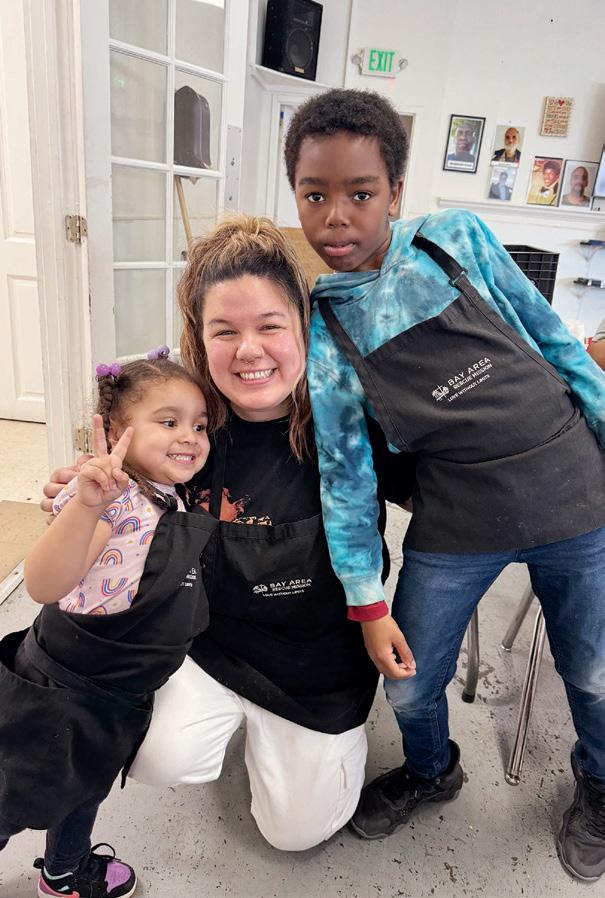
Ayana was five years old and living with her mother and baby sister in a family shelter in Richmond’s Iron Triangle neighborhood when she first connected with the volunteers at Community Education Partnerships, a nonprofit dedicated to providing academic support and resources to students experiencing homelessness and housing instability across the San Francisco Bay Area.
“She was a ball of personality – she had energy and curiosity,” remembers Beth Miller, senior director of programs. “She also had really big feelings and was easily frustrated.”
Academically and emotionally struggling, Ayana had been placed in the lowest reading group in her kindergarten class. School often felt overwhelming, and her intense emotions frequently led to meltdowns, especially when she felt uncertain about her learning, Miller says. But
with the support of Community Education Partnerships, Ayana’s path began to change.
Founded in 2010, Community Education Partnerships confronts the significant challenges faced by homeless students through personalized tutoring, mentoring, and group programs. The nonprofit provides hands-on academic support as well as essential resources such as backpacks, school supplies, books, and extracurricular opportunities.
By meeting students where they are and partnering with shelters and transitional housing, the organization creates accessible and consistent educational environments that are otherwise often missing in these children’s lives. With a small staff of 11 and over 100 dedicated volunteer tutors and mentors – ranging from high school students to retirees –Community Education Partnerships works to improve academic outcomes for over 500 students annually who navigate the challenges of homelessness and poverty.
Its cornerstone program is one-onone tutoring and mentoring, pairing each student from pre-K through 12th grade with an adult tutor. For many children, this connection becomes a stable and positive relationship that can last for years. Additionally, their group programs, situated at learning centers inside family shelters, provide structured opportunities for students to engage in STEM, literacy, and college and career exploration activities.
Students like Ayana, who experience housing insecurity, often face difficulties with focus, self-confidence, and emotional regulation, leading to some of the poorest educational outcomes, including low literacy and graduation rates.
There are nearly 300,000 unstably housed youth in California. For students experiencing homelessness, high school graduation rates significantly lag behind their housed peers.
Community Education Partnerships works directly to combat this with their One-on-One Tutoring program, their Early Literacy Campaign, and their Educational Supplies program.
A $1,000 donation funds one year of one-on-one tutoring for a student experiencing housing instability. This support directly impacts Community Education Partnerships’ core program, providing personalized academic help that improves skills and builds confidence.
“Unhoused and unstably housed students often have the greatest needs but, also, are often the least served in the public school system,” says Erica Mohan, founder of Community Education Partnerships.
Mohan highlights that with 10,000 homeless students in the Bay Area, the demand for support is significant. Many of these students remain unnoticed as they live in
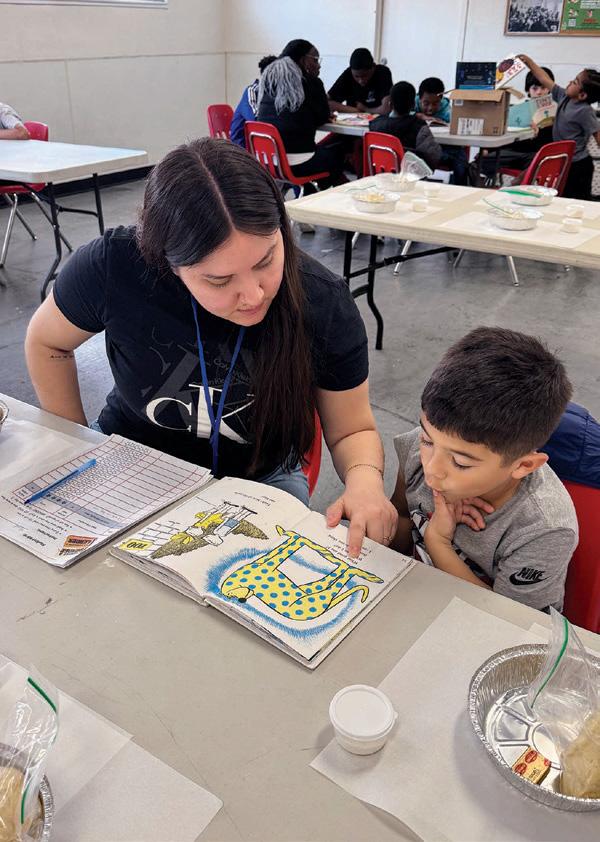
shelters, couch surf, or reside in overcrowded homes.
With a holistic approach that goes beyond academics, Community Education Partnerships works to stabilize students’ lives, nurture their talents, and build their confidence, empowering them to shine despite the obstacles of housing instability.
In Ayana’s case, her tutor helped her improve her reading and math skills and taught her techniques to manage her emotions, building resilience and self-confidence. By the middle of first grade, Ayana had moved up to the top reading group in her class and was testing above grade level in math.
She became involved in many of the nonprofit’s programs, found excitement in being a big sister, and even started a pretend YouTube channel where she walked viewers through science experiments she did with her tutor, demonstrating her growing confidence and enthusiasm for learning.
“We are very proud of her,” Miller says. “She’s an enthusiastic learner, has great social skills now, friends at school, and lots of good friends in the shelter.”



A CEP student reading during the CEP Spring Read-A-Thon. 66 CEP students participated in the Read-A-Thon during Spring Break and logged over 11,000 minutes of reading. Everyone earned great prizes including bikes for the top readers!
Dean & Margaret Lesher Foundation
East Oakland Community Project
Fleishhacker Foundation
Oakland Unified School District
Richmond Fund for Children and Youth
San Francisco Department of Children Youth & Their Families
San Lorenzo Unified School District
The PG&E Corporation Foundation
West Contra Costa Unified School District

Legacy and graduate of the EPA JRT program Kassidy Gray celebrates the culmination of her journey alongside Dr. Mitchell Smith, the Director of Workforce Development and Training.

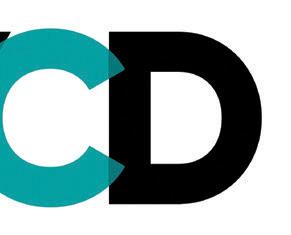
By Check:
Young Community Developers 1715 Yosemite Ave. San Francisco, CA 94124
*Donation Memo: The Giving List
By DAF or Stock Transfer:
Tax ID# 94-2187776
By Credit Card: ycdjobs.org/donate
Contact: Dion-Jay Brookter Chief Executive O cer (415) 822-3491 Dbrookter@ycdjobs.org
Young Community Developers www.ycdjobs.org 1715 Yosemite Ave. San Francisco, CA 94124 (415) 822-3491

Over 50 years ago, Young Community Developers (YCD) was established in response to racial barriers that prevented Black families, who migrated to San Francisco for wartime jobs, from securing employment. In 1973, 15 young Black activists marched down to City Hall, demanding $75,000 to train their community members for the available positions in the Bayview-Hunters Point Naval Shipyard. Originally designed as a workforce development program, YCD has since evolved to include a vast variety of wrap-around services, now serving 2,000 community members annually. YCD takes pride in o ering a wide range of programs that serve the whole human, from workforce development and education, to housing and re-entry support.
“As an organization, we’ve gone from just workforce development to saying we want to break the cycle of generational poverty,” says Dion-Jay Brookter, CEO of YCD and longstanding member of the San Francisco community. “To do that, it’s complex. Every single person has di erent needs, di erent challenges, and needs di erent resources, in terms of how we overcome barriers.”
But YCD rises to the challenge by individually tailoring their support –which starts as soon as a community member walks through their doors.
“I never want anybody from the community to feel institutionalized, as
if they’re going into a program,” says Brookter. “We have this intake form that allows us to internally share where this individual needs to go based on the need and the funds that we have.”
Within its first pillar of focus, Workforce Development, YCD o ers job readiness training and employment support services to its customers ages 18 and over. As part of the Workforce Development suite of services, YCD runs a Neighborhood Job Center (NJC) in Bayview, which o ers crucial employment services for ages 16 and up.
To support students throughout their educational journey and beyond, YCD has developed a career and college readiness pipeline that starts in high school, in partnership with 100% College Prep. While in high school, the program helps students identify pathways for success as they transition to the next stage of their journey. After high school, YCD works with students in and out of college. The organization offers programs for full-time summer internships, they provide specialists who work closely with students who might experience behavioral challenges and they work within Black Student Unions, which help Black youth develop leadership skills and prepare for college and careers, while also running after-school tutoring programs. Additionally, YCD has a post-college
Young Community Developers (YCD) is ambitiously aiming to raise $2 million this fiscal year, with a strategic focus on increasing the share of philanthropy and corporate contributions in their organization’s funding and expanding as a capital campaign with their housing developments. By diversifying their funding sources, they aim to reduce reliance on city dollars, ensuring the long-term sustainability of YCD’s programs and operations as they continue to expand. This approach strengthens the many facets of their organization, allowing them to continue delivering impactful services to the community e ciently and e ectively.
fellowship program, which provides full-time paid career internship opportunities to recent graduates.
YCD launched its third pillar, its housing division, in 2014, when gentrification began to drive Black families out of their neighborhoods and out of the city overall. YCD created a new area of practice, helping build new affordable housing, acquiring and preserving existing housing, advocating for policies that prioritize Black households, and offering direct services to prevent displacement.
As YCD continues to grow, Brookter emphasizes that the secret sauce is their team members. Nearly 35% of YCD’s team members reside in San Francisco, and many are former participants of YCD’s programs. These “rock stars,” as Brookter calls them, bring valuable firsthand experience to their roles, o ering unique insight into what works, what doesn’t, and what the community truly needs.
“Every day I get to wake up and help people. That is my job. But for me, it’s also my purpose,” says Brookter.

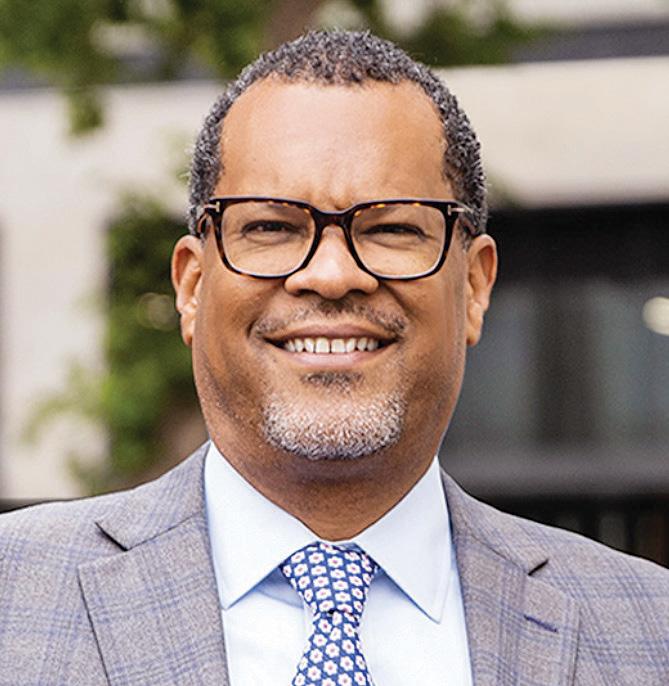
Fred Blackwell, Chief Executive O cer of The San Francisco Foundation, reflects on his 19-year journey with Young Community Developers, stating that he has “always known YCD to be a strong anchor organization from a programmatic view and [for being] a breeding ground for leadership.” He states that it is “critically important to have indigenous organizations to do this work because there are not a lot of Black-led organizations in San Francisco that have this capacity.” As they celebrate 50 years of service, Mr. Blackwell emphasizes the significance of organizations like YCD in creating lasting impact and fostering partnerships within many di erent spaces.
Department of Children Youth & Their Families
Human Services Agency
Mayor’s O ce of Housing and Community Development
San Francisco Department of Homelessness and Supportive Housing
Japanese Community
Youth Council
Dream Keepers Initiative
Crankstart Foundation
San Francisco Foundation
Robert & Ruth Foundation
Tipping Point Community
Stupski Foundation
LENNAR
Golden State Warriors Foundation
San Francisco
Public Utilities Commission
PG&E Foundation
Malcolm Drillin
Wells Fargo Bank
Blackrock Foundation
Fidelity/Jennifer Ruddock
“Through the Looking Glass (TLG) provides incredible support to our community. They are one of very few organizations in our area that welcome individuals with disabilities with open arms and provide neurodivergent-a rming care and support to their clients. Their inclusive Early Head Start program is a model for multidisciplinary collaboration in early childhood education. TLG serves a racially, linguistically, and neurodevelopmentally diverse population with respect and expertise. As a pediatrician who cares primarily for children with disabilities, I value TLG immensely. I encourage you to support TLG, so it can continue to provide its invaluable services to our community.”
– Noemi Alice Spinazzi, MD
Medical Director - Down syndrome clinic, UCSF Benio Children’s Hospital Oakland - Primary Care Associate Clinical Professor - UCSF School of Medicine
By Check:
Through the Looking Glass 3075 Adeline Street Ste. 120 Berkeley, CA 94703
*Donation Memo: The Giving List
By DAF or Stock Transfer:
Tax ID# 94-2823116
By Credit Card: lookingglass.org/donate
Contact: Megan Kirshbaum PhD
Founder & Executive Director
Work: (510) 225-7502 Cell: (510) 725-2253 mkirshbaum@lookingglass.org
Through the Looking Glass www.lookingglass.org
3075 Adeline Street Ste. 120 Berkeley, CA 94703 (510) 225-7502

According to the Centers for Disease Control and Prevention, the latest data from the 2022 Behavioral Risk Factor Surveillance System reveal that over

70 million adults in the U.S. reported having a disability in 2022. And more than 14.5 million children living in the U.S. have special health care needs, according to the National Survey of Children’s Health.
Through the Looking Glass (TLG) was founded over 40 years ago to serve families with disabilities throughout parenting, to provide respectful and empowering services for children and families so there would be fewer barriers in their lives.
Staffed by psychologists, occupational therapists, social workers, child/ family therapists, and developmental specialists, TLG specializes in homebased developmental and mental health services for families and their young children when a parent or child has physical, medical, or developmental difficulties or disabilities. They also provide support groups to parents or parenting grandparents.
Founder and Executive Director Megan Kirshbaum and her husband,

Through the Looking Glass practices a holistic approach to disability care where the whole family is supported and nurtured.
To expand its parenting adaptation services and continue its critical early prevention work, TLG needs to raise $150,000. This will ensure their occupational therapists can provide more adaptive baby care solutions, expanding these services to families in San Francisco and Contra Costa counties, and TLG can provide early intervention for families who are marginalized and need the most help.
Founder and Executive Director Megan Kirshbaum warns that not doing e ective early prevention work is much more costly in the long run. “We’re not just keeping families together,” she says, “We’re nurturing their potential.”
Dr. Hal, who had MS, learned firsthand about the lack of focus on the multiple barriers facing parents with disabilities in the U.S. They also quickly realized the benefit of early preventive intervention for children with disabilities when their second child was born with medical issues. The Kirshbaums founded TLG in their converted garage in Berkeley in 1982 to help other families overcome some of the barriers they had faced.
What sets TLG’s intervention model apart is its unique blending of infant, child/parent, and family therapy with early developmental intervention and practical disability resources. This nurtures family relationships and helps prevent unnecessary child delays.
What also sets the nonprofit apart is its free adaptive parenting equipment. TLG is nationally recognized for its OTs designing, fabricating, and providing baby care equipment for parents and other caregivers with disabilities. These include modified cribs and walkers with baby seats designed to allow adults with disabilities to have an easier time doing typical parenting tasks. The parenting adaptations can sometimes even be the difference between a parent with disabilities keeping custody of their
child. TLG sees approximately 300 Alameda and Contra Costa County families with disabilities annually. They primarily serve low-income children and families of color, with diverse cultural backgrounds and languages.
For families like Zoha Raad’s, Through the Looking Glass was a life-saver after she acquired a disability. To help her deal with the day-to-day physical challenges of raising a baby, TLG developed adaptive parenting solutions for her.
“I was introduced to skilled occupational therapists who offered adaptive baby care training, enabling me to care for my child despite my limited mobility,” Raad says.
Raad went on to become Chair of TLG’s Policy Council, which is a group of parents participating in and helping govern their Early Head Start Program (which provides both center and homebased services for pregnant women, infants, toddlers, and their families). TLG’s daycare center also facilitated her pursuit of education at the University of California, Berkeley. Raad is now an independent living skills specialist serving other people with disabilities.
“TLG is like my second family, and I hold them dear in my heart,” Raad says.
There are 4.4 million parents with disabilities who have children under the age of 18, out of 65.9 million parents in the U.S. – Frank Li, et.al, 2022 analysis of American Community Survey
More than 25% of U.S. family households have at least one person with a disability. – U.S. Census


TLG Board of Directors
Individual Donors
Sunlight Giving
Quality Counts
Regional Center of the East Bay
First 5 Alameda County
Alameda County
Behavioral Health Services
City of Berkeley
Oakland Fund for Children and Youth
National Institute for Disability, Independent Living and Rehabilitation Research,
Administration for Community Living, HHS
Head Start, Administration or Children and Families, HHS
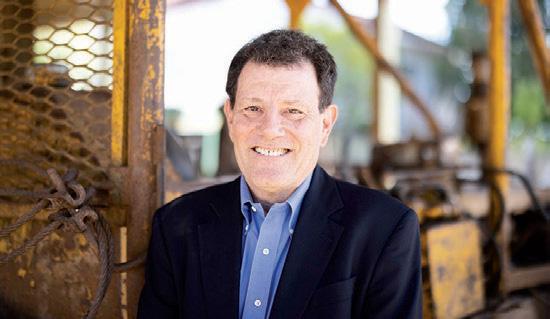
“Vision To Learn is making sure that access to a pair of glasses never stands between children and their ability to see the board, read a book, or participate in class. It is such a cost-e ective yet powerful way to improve a child’s learning experience and make sure they do not fall behind. Vision To Learn helps some of the hardest-to-reach children and your donations will mean more students receiving the eye care and glasses they need to learn and live clearly.”
– Nicholas Kristof
Two-time Pulitzer Prize-winning New York Times columnist
By Check:
Vision To Learn
12100 Wilshire Boulevard, Ste. 1275 Los Angeles, CA 90025
*Donation Memo: The Giving List
By DAF or Stock Transfer:
Tax ID# 45-3457853
By Credit Card: www.visiontolearn.org/donate
Contact: Damian Carroll
National Director and Chief of Sta (818) 383-2335 damian@visiontolearn.org
Vision To Learn www.visiontolearn.org 12100 Wilshire Boulevard, Ste. 1275 Los Angeles, CA 90025 (800) 410-5273
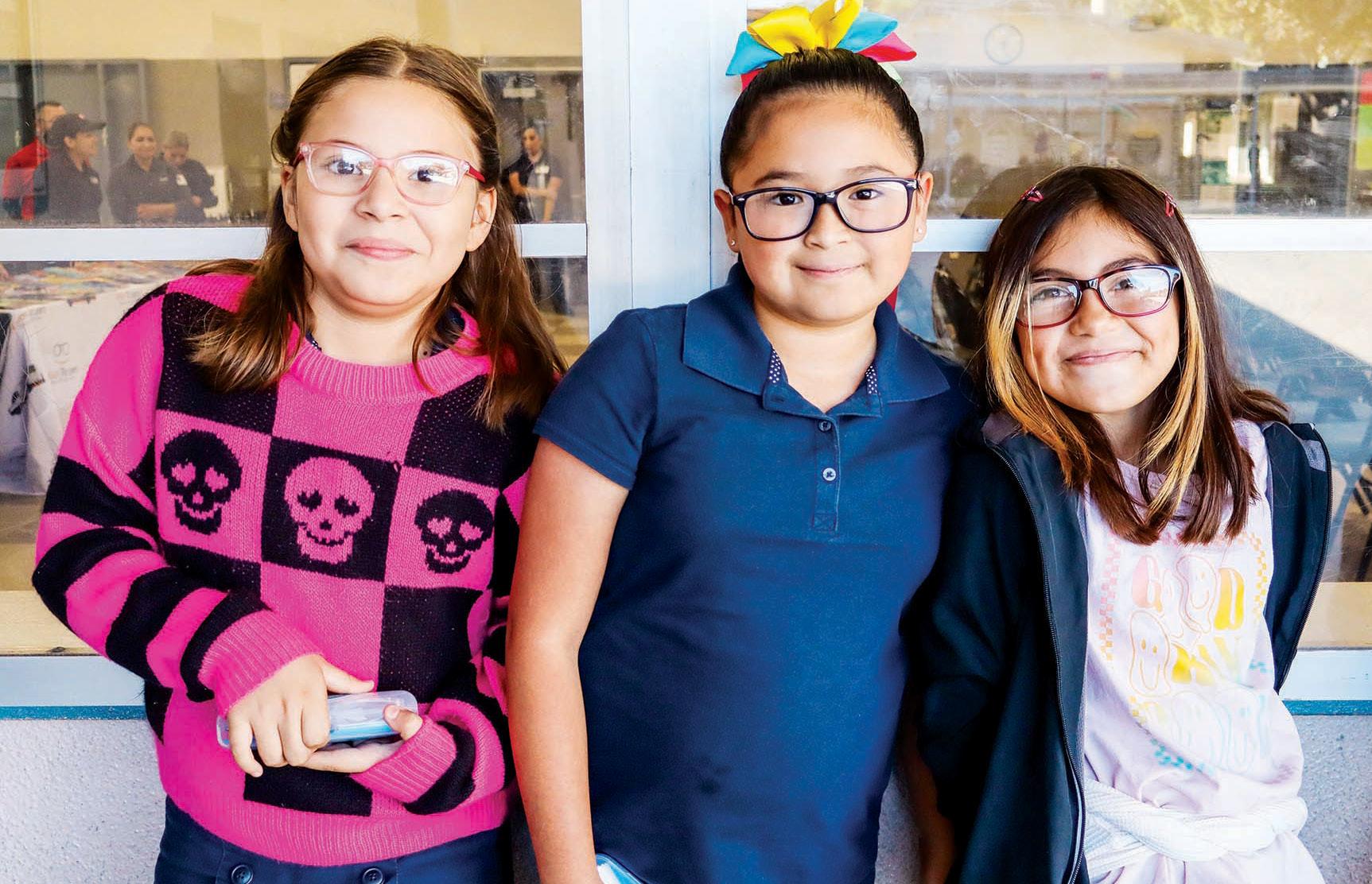
Eyeglasses are such a commonality that most people go through the day assuming that everyone who needs a pair of glasses already has them. Most people, perhaps, but certainly not the team behind Vision To Learn, who knows first-hand how children everywhere are having trouble learning at school solely because they can’t properly see. It’s a problem they’re all too familiar with and work to eradicate.
Since its founding in 2012, Vision To Learn (VTL) has been delivering glasses at no cost to children who need them in Los Angeles, San Francisco, and all over the country.
“Vision To Learn works to solve a widespread problem in American education,” says VTL’s National Director and Chief of Sta , Damian Carroll. “One in four students needs glasses to see the chalkboard, read the book, or otherwise engage in the classroom.”
How can there be so many students without their necessary glasses? Carroll points out that the issue for students isn’t necessarily one of affordability, usually it’s about a lack of access, stemming from the seldom-addressed
effects of institutional poverty. It could be parents working two jobs and not having the time to take their child to an eye doctor’s appointment. Other times, it’s a transportation issue.
These are barriers easily overcome thanks to the services that Vision To Learn provides. Instead of getting the child to the eye doctor’s office, they deliver the doctor’s office straight to the children at their schools in the form of a “mobile vision clinic.” Licensed optometrists roll up to the school grounds in a fully-equipped office within a Sprinter van, providing students with vision screenings, eye exams, and a pair of glasses for each student who needs them – all at no cost to the student or their family.
You can think of Vision To Learn as a sort of Santa Claus for visually impaired children. One might be surprised by the sheer number of students who benefit from these mobile visits: Anywhere from a quarter to a third of each school’s students will get the glasses they need thanks to these programs.
And while clear vision is a wonderful enough benefit in its own right, there
Providing glasses to students with vision issues really is among the low-hanging fruits of educational interventions. The problem is simple to understand, easy to remedy, and Vision To Learn has been very successful executing that remedy.
Heading into 2025, Vision To Learn (VTL) and Children’s Hospital of Los Angeles announced a groundbreaking new initiative to provide all 19,000 children in the Compton Unified School District with comprehensive eye care at no cost to the children or their families.
But more than anything, VTL is seeking funding for their core operation, expanding their fleet of mobile clinics that are the base for their free eye exams and servicing an expanding number of school districts. The program is as strong as ever, and they’ll keep going to ensure that no student is left in the dark.
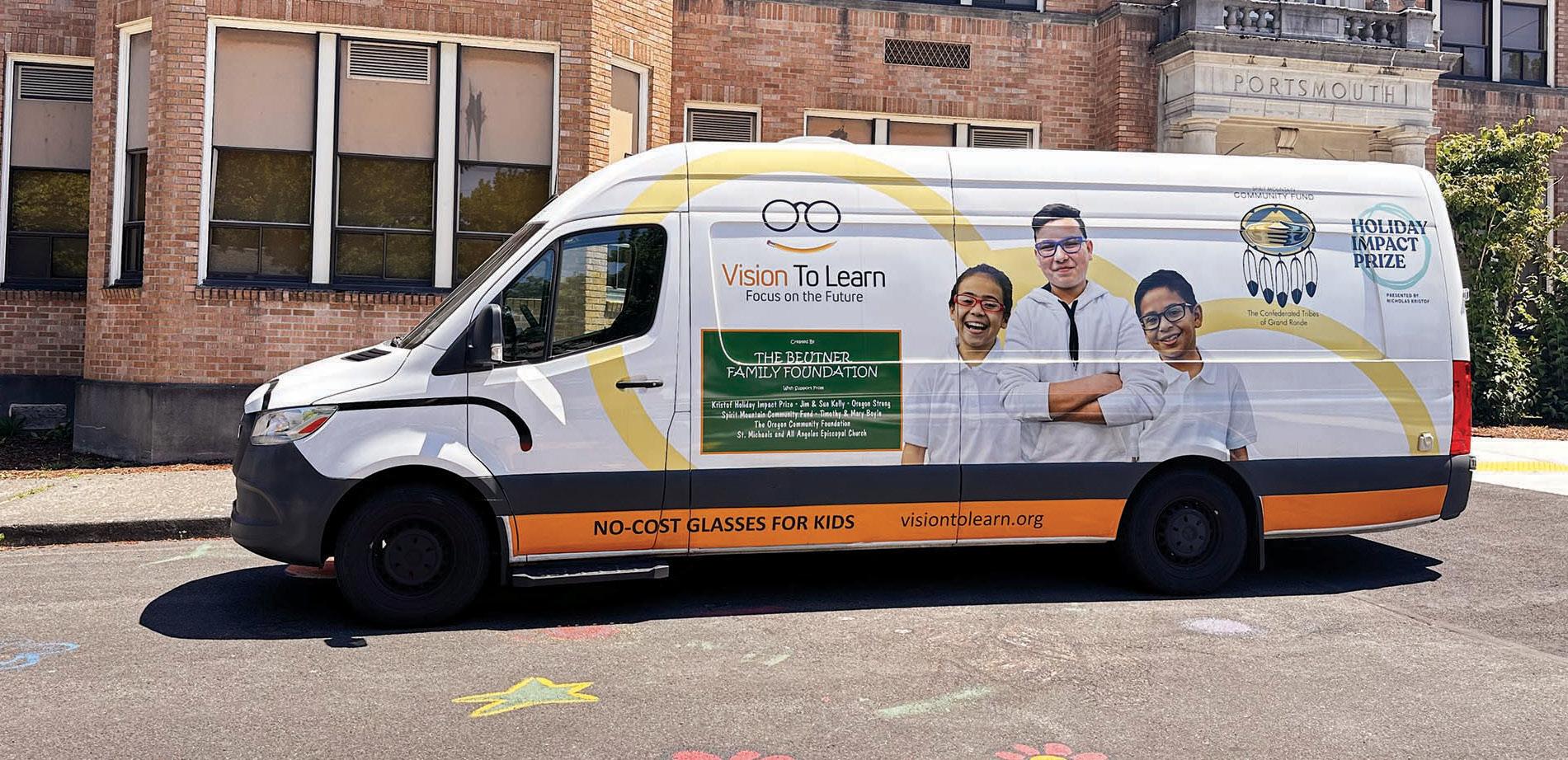
are still several more benefits, namely that students empowered with proper eyesight show remarkable improvement in learning at school. According to a John Hopkins School of Education study on the subject, providing glasses to students in need is the equivalent of adding two to six months of classroom time to their school year. That’s more effective than providing students with an iPad, and for kids with the toughest learning challenges, as effective as providing one-on-one tutoring.
“It’s rewarding to see how tangible and concrete our impact is,” says Carroll. “On any given school day in Los Angeles, there are eight mobile clinics helping hundreds of kids. There were 100,000 eye exams conducted within the 2023-24 school year alone.”
Vision To Learn’s program is a welloiled machine and children across California are all the better for the services they provide. “I would say we are the leader in this field nationally,” says Carroll. “Other cities and states are taking note of our success.”
On average, 1 out of 4 students needs glasses. In underserved communities, up to 95% of students who need glasses, don't have them.




Beutner Family Foundation
Blue Meridian Partners
Boeing Global Engagement Foundation
Deerbrook Charitable Trust
Focusing Philanthropy
Frank McHugh-O’Donovan Foundation, Inc.
L.A. Clippers Foundation
L.A. Dodgers Foundation
MetLife
OneSight Essilor Luxottica Foundation
Panda Cares
Shea Family Charities
Silicon Valley Community Foundation
Sobrato Philanthropies
The Eli and Edythe Broad Foundation
Warby Parker
Warriors Community Foundation


No great society has existed that didn’t grow its children and youth in the fertile soil of education. For their contributions, we applaud the organizations that put their shoulders to this important task.
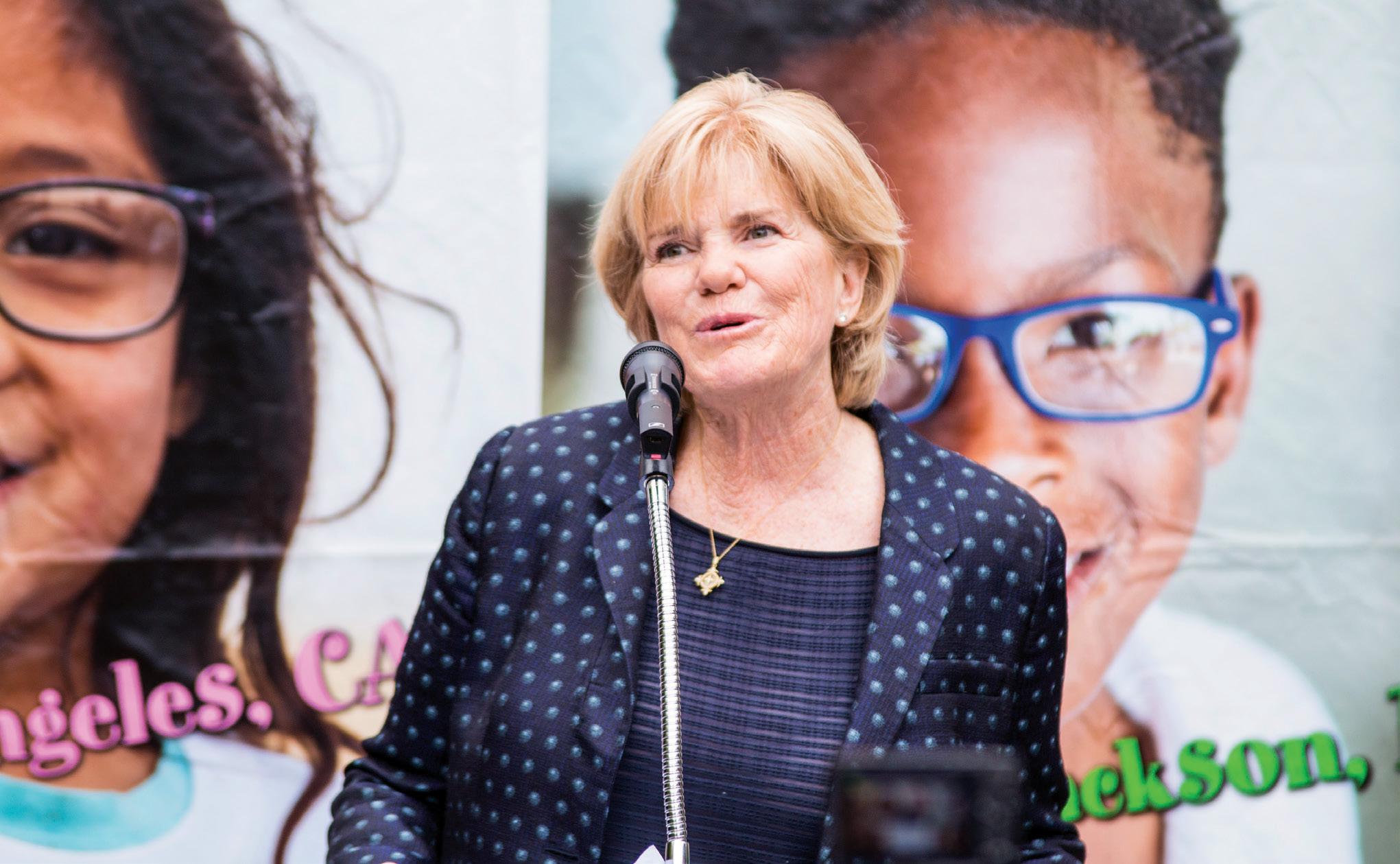
As a D.C. kid, born and raised in the political marinade of her hometown, Ann Hollister saw politics as the obvious path to public service. After years of ascending the political ranks from congressional staffer to Chief of Staff to a freshman Congressman to a veteran political consultant managing California statewide races, Hollister realized that her political experience was uniquely applicable to community service. And her pivot from politics to the nonprofit sector has allowed her to see, more directly, the profound impact a nonprofit is able to have on peoples’ lives.
As the president of Vision To Learn, a nonprofit organization, founded by Austin and Virginia Beutner, that provides vision screenings, free eye exams, and glasses to children in underserved communities,
Hollister has helped scale the organization’s operations to 14 states plus Washington, D.C., making it one of the largest school-based health services operating today. That’s a big deal when you consider that if a child doesn’t read by the 3rd grade, they’re four times more likely to drop out of high school.
Under Hollister’s leadership, Vision To Learn is on the precipice of providing its 500,000th pair of glasses to children, significantly impacting their academic performance and overall well-being. In a sector where impact is often hard to measure, that’s a slam dunk. Working to remove barriers to healthcare access for underserved communities, particularly in education, Vision To Learn’s work to access Medicaid and CHIP reimbursement means the program is not only scalable but sustainable.


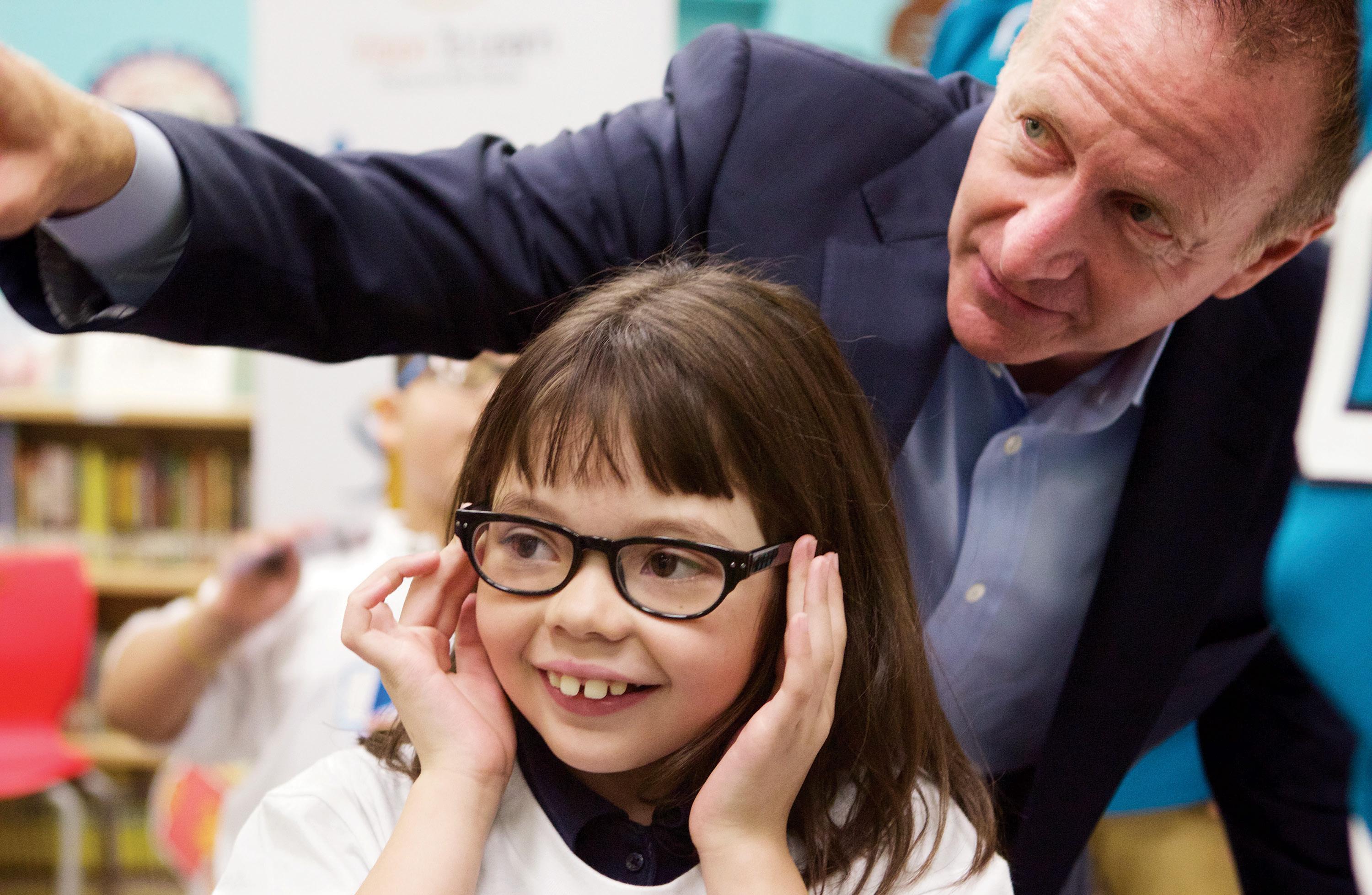
got vaccinations at school. I think school-based health services are on the rise, and we’re a model of how that can work. It removes barriers like having to take time off work or finding an optometrist who accepts Medi-Cal in underserved communities.
Q: Can you talk about the research regarding when a child needs to learn to read to have a good chance of succeeding?
A: If you’re not reading at grade level by third grade, you’re four times more likely to drop out of high school. Not a lot of good happens when that occurs. What we see every day is that “aha” moment when a kid gets their first pair of glasses. They all say the same thing: “I didn’t know the tree had leaves,” or “I didn’t know the world looked like this.” They didn’t know they couldn’t see. Johns Hopkins University, our partner in our Baltimore program, did a three-year control group study of the Vision To Learn program. The study, published in the Journal of the American Medical Association Ophthalmology, found that giving kids glasses is the most impactful academic intervention there is. For kids in the bottom quartile, it’s equivalent to four to
six months of additional learning time. It’s more impactful than everything but one-on-one tutoring.
Q: How does Vision To Learn’s funding break down between government grants and individual fundraising?
A: We’re about one-third public reimbursement or other public monies, and the balance is philanthropy. We’ve worked hard to crack the code as a nonprofit to get reimbursed for kids who are enrolled and eligible for Medicaid reimbursement. It’s not easy because the system was created for brick-and-mortar offices. We go to a school and help every kid, regardless of immigration status or insurance status, and then post-service, we try to get reimbursed for those we can find in the system.
Q: How was Vision To Learn founded?
A: Austin Beutner was deputy mayor at the time under Mayor Villaraigosa in Los Angeles. He was preparing to give a speech to a teachers’ group and asked some teacher friends about the biggest problems they faced. One of them told him that kids didn’t have the glasses they needed to be successful at school.

1 in 3 Berkeley students faces socio-economic challenges. For too many, the life-changing opportunities of extracurricular enrichment remain out of reach. Our free STEM programs bridge this gap. Your donation ensures every child, no matter their background, has a chance to succeed.

By Check:
Berkeley Public Schools Fund P.O. Box 2066 Berkeley, CA 94702
*Donation Memo: The Giving List
By DAF or Stock Transfer: Tax ID# 94-2918219
By Credit Card: berkeleypublicschoolsfund.org/donate/
Contact: Greta Hadley Director of Development (510) 644-6244 gretahadley@berkeley.net
Berkeley Public Schools Fund www.berkeleypublicschoolsfund.org 2020 Bonar Street, Suite 130 Berkeley, CA 94702 (510) 644-6244
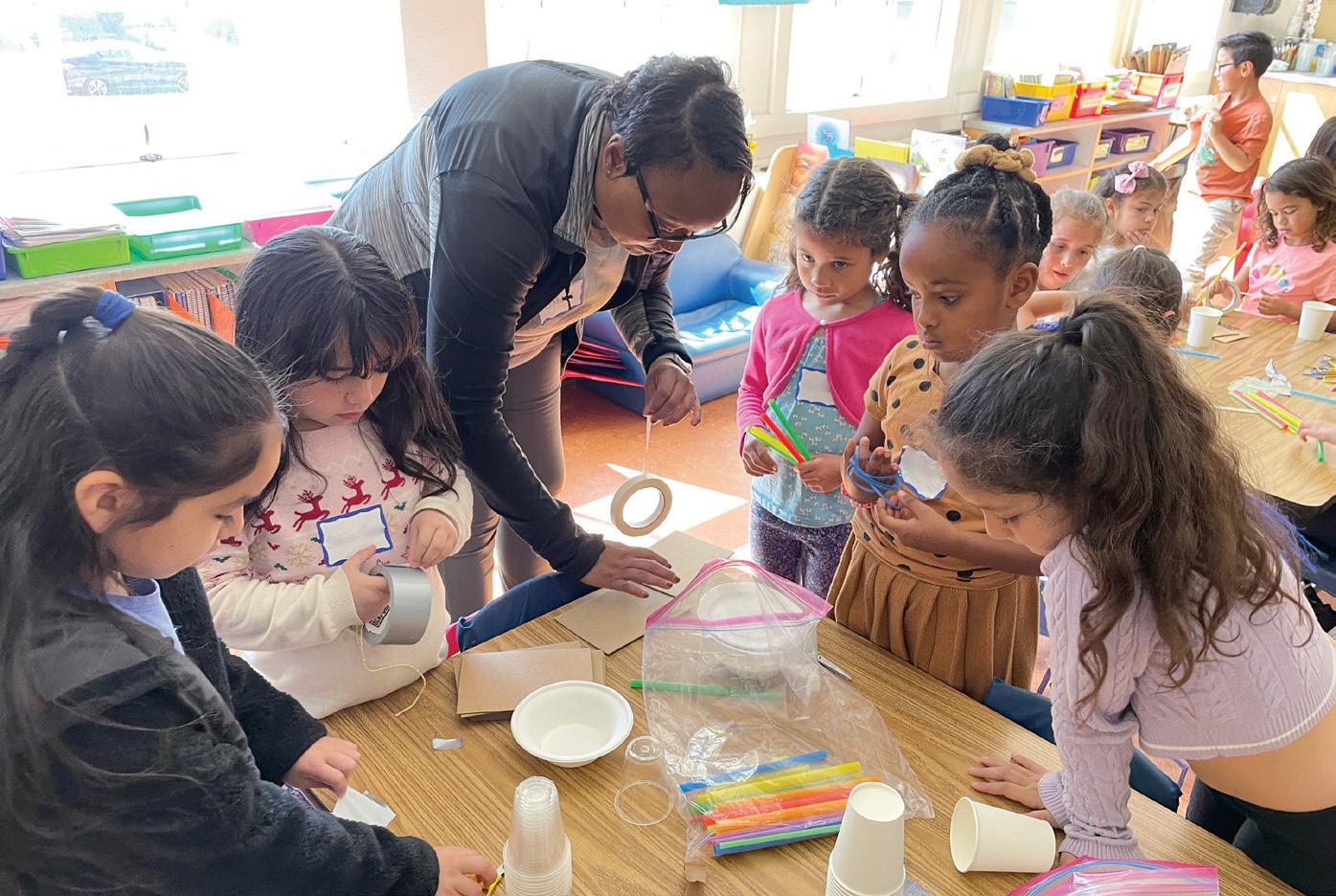
For younger students, the Berkeley Public Schools Fund introduces early STEM exposure by integrating art, imagination, and building. Through hands-on learning and exploration, students are encouraged to create in ways that nurture their natural curiosity, fostering positive and empowering experiences from the start.
Although Berkeley is less than an hour’s drive from the hub of Silicon Valley, the region’s innovation and resources remain inaccessible to many of this city’s public school students. In the Berkeley Unified School District, white and Asian American students currently make up the majority of aspiring STEM professionals, while Black and Latinx students are underrepresented. This trend in Berkeley schools mirrors broader inequities in STEM careers – disparities that the Berkeley Public Schools Fund (Schools Fund) is committed to addressing.
Founded in 1983 in response to Proposition 13 – a 1978 California Constitutional amendment that drastically cut public school funding – the Schools Fund invests in equitable and enriching public education and channels community resources to support Berkeley’s most vulnerable students.
“Following Prop 13, the Berkeley [Unified] budget was going to be slashed by about a third,” says Du y Ross, the Schools Fund’s interim executive director. “That’s why parents and community members started to organize out of living rooms and say, ‘What are we going to do? How are we going to bridge the gaps?’ They wanted to put resources directly into the hands of teachers.”
Today, the Schools Fund addresses opportunity gaps in Berkeley Unified through a three-pronged approach: Grants, Volunteers, and, more recently, STEM Initiatives. The nonprofit awards grants of up to $25,000 for entire schools and up to $15,000 for educator teams, while volunteers offer crucial learning support both inside and outside the classroom. The recently launched STEM programming aims to break barriers to STEM for underrepresented students.

TheBerkeley Public Schools Fund relies heavily on individual donations. “Every gift is a sustaining force,” says Director of Development Greta Hadley. “It supports our current work and expands the reach of crucial programs.”
• $1,500 can cover a student’s participation in the fourweek summer STEM Camp.
• $5,000 can connect volunteers with 40 classrooms, benefiting students and teachers.
• $10,000 can fund an educator-initiated grant for transformative learning projects.
Additionally, as the Schools Fund enters its second year of STEM programming, it is halfway through its seed funding and seeking new high-level partners to help close opportunity gaps and sustain the initiative.
“We’re really focused on bridging those gaps for students who would not be able to access the resources that they need to thrive,” says Greta Hadley, Schools Fund director of development.
“The Berkeley Unified School District has one of the largest ‘achievement gaps.’ We call it an ‘opportunity gap’ because it has more to do with di ering access to opportunities rather than capacity to achieve.”
To bridge these gaps, the Schools Fund’s comprehensive K-12 STEM initiative offers out-of-school enrichment opportunities designed to prevent disparities from widening at key developmental stages.
“We’re strategically focusing on out-of-school time, where access to extracurricular enrichment varies greatly between students,” adds Hadley. “It’s during these periods that the achievement gap widens between those who can a ord these opportunities and those who cannot.”
Each year, over 500 Berkeley public school students participate in STEMfocused Saturday camps, winter and spring break camps, and four weeks
of summer Maker camp – all free for students of color, low-income students, English learners, girls, and genderexpansive youth.
These initiatives prioritize culturally relevant education and emotional wellbeing by ensuring mentors and staff reflect the diverse student population. “When kids have early exposure to STEM in environments where their peers reflect their backgrounds,” Ross says, “they develop a stronger sense of belonging.”
A 2023 study from Penn State, the University of California, Irvine, and the University of Texas Health Science Center at Houston found that inequities in STEM begin as early as kindergarten and widen over time, often determining later interest and success in STEM careers. Early support in these areas is critical.
This is exactly what the Schools Fund is doing.
“We’re mapping backwards from high school to kindergarten, creating pathways from the very start for students furthest from STEM opportunities,” says Ross.
“For me, education is like the key to life. It’s the key to social equity and to health. It’s the key to lifelong learning. It’s the key to democracy.
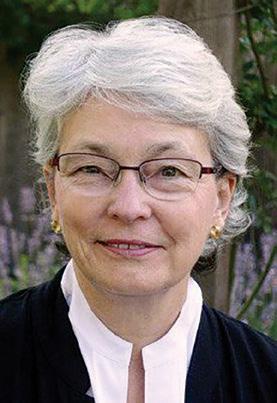
It’s part of being a member of a community. It’s just essential. That’s why I support the Schools Fund. And as a Schools Fund volunteer and donor, I see directly how the funds are being spent. It’s e cient, it’s effective, it’s filling in what families need for kids to really do well in school. I think every penny is well spent.”
– Marice Ashe
Berkeley Public Schools Fund Donor and Volunteer

Because of Schools Fund Classroom Volunteers, more students get one-onone or small group academic support in class. Through this extra layer of support, students are more likely to have their struggles immediately noticed and tended to, accelerating their learning trajectories.
Wareham Development
Mary & Stan Friedman
Anonymous
Judith & Stanley Lubman
Bernard E. & Alba Witkin
Charitable Foundation
Micki Miller
Zalec Familian & Lilian Levinson Foundation
Bayer US
Ivan & Maris Meyerson
Lawrence Berkeley
National Laboratory
Florence Simon Beecher Foundation

Our culture’s overemphasis on grades, test scores, and rankings is often in opposition to fostering students’ well-being, engagement, and belonging in school, contributing to unhealthy levels of stress.

By Check:
Challenge Success
P.O. Box 20053
Stanford, CA 94309
*Donation Memo: The Giving List
By DAF or Stock Transfer:
Tax ID# 45-3767621
By Credit Card: challengesuccess.org/donate
Contact: Caitlin Ciannella Director of Advancement (541) 280-9711 cciannella@challengesuccess.org
Challenge Success www.challengesuccess.org
P.O. Box 20053 Stanford, CA 94309

“Your life won’t work out if you don’t do well in school.”
“You’re a disappointment or a failure if you don’t meet expectations.”
These perpetuating ideas of very narrow definitions of success in education are at the heart of what Bay Area nonprofit Challenge Success is striving to redefine. They aim to create a healthier, more balanced perspective on achievement by addressing the root causes of K-12 student stress and anxiety. Ultimately, their vision is that each student will be valued for their unique assets, identities, and definitions of success, and that all students feel supported by the adults in their communities to lead healthy, balanced lives.
When they ask students questions like, “What does success mean to you?” In response, they hear consistent themes about the importance of grades, high GPAs and test scores, and post-secondary plans. Middle and high school students now are more often than not stressed, over-
whelmed, and anxiety-riddled by intense achievement pressure. This type of unhealthy, chronic stress is taking a toll on the physical and mental health of students – resulting in sleep deprivation, and mental health challenges.
Whenever student well-being is suffering, it is very di cult for them to be successful in their learning experience. The organization’s groundbreaking research and equity-centered approach helps schools to minimize unnecessary pressure while increasing enjoyment of learning and overall student well-being.
“By emphasizing academic achievement at all costs, school environments may unintentionally harm students –especially those who have been historically marginalized,” says Megan Pacheco, executive director of Challenge Success. The good news, she says, is that the research is clear around protective factors for student well-being. When students are supported at home and school by trusted adults, they are more likely to be able to manage their

allow Challenge Success to o er many of its resources at no cost through their online Resource Center, frequent virtual workshops, and regular contributions to educational publications and podcasts.
Challenge Success has also created a financial aid fund to support schools who face budget constraints, allowing them to participate in the critical paid services, such as surveys and year-long partnerships.
“It takes a whole community to change the messages around success in school,” says Megan Pacheco, executive director of Challenge Success. “If we don’t act now, students will remain trapped in a cycle of stress and unrealistic expectations.” Your financial contribution makes it possible for Challenge Success to reach more schools and more students about what success truly means.
stress levels and engage in their academics in a meaningful way.
Founded over two decades ago, Challenge Success’s proven model gathers insights from students, staff, and caregivers (at a multitude of partner schools) through carefully designed surveys and focus groups. They then use this data as a foundation to collaborate with the schools to design strategies that prioritize student well-being that are unique to each school’s community. Central to this process is the inclusion of student voices. Students not only participate in the surveys but also serve on advisory teams to shape the strategies aimed at helping them thrive – academically, emotionally, and socially.
Challenge Success doesn’t just implement changes and walk away, Pacheco says. They are committed to a continuous improvement approach, where schools are supported in evaluating the impact of their initiatives and refining them as needed so that the changes take root and lead to lasting improvements in student well-being.
“We are helping schools build a future where students are not just surviving the pressures of school but are truly flourishing,” Pacheco says.

"I joined the CS Student Advisory Council because I care about authentic engagement in learning over 'drill and kill' burnout. I am excited to learn, promote student balance, and redefine success without the pressure and stress." – Hovey Clark, Junior at the Drew School & CS Student Advisor

“W hat could be more important than youth well-being? We choose to give to Challenge Success because we believe every child and adolescent should be able to count on well-being, engagement, and belonging in school. Their unique, preventative approach to youth mental health brings us hope that we can turn things around for this generation by addressing the root causes of toxic achievement culture and burnout. As parents, we often rely on Challenge Success for practical suggestions for how to help our children expand their definitions of success and find their own paths to a bright, purposeful future. And, we have peace of mind knowing that everything they do is grounded in research, thanks to their a liation with the Stanford Graduate School of Education.”
– Rebecca and Tod Sacerdoti
Sharon Olken, Board Chair
Lisa Busby, Past Board Chair
Cori & Tony Bates
Nina Brown de Clercq
Jennifer & Shawn Carolan
Dagmar Dolby
Calla & Will Gri th
Maurine & Phil Halperin
The Hearst Foundations
Laura & David Krane
Laura & Gary Lauder
Leigh & Bill Matthes
Elizabeth & David Obershaw
Eva & Bill Price
Lisa Pritzker
Meredith & John Pasquesi
Jenny Fan Raj & Nehal Raj
Kathy Fields-Rayant & Garry Rayant
Leesa Miao & Martin Romo
Je Snipes
Jessica & Eric Spaly
Rebecca & Tod Sacerdoti
Kelli & Ste an Tomlinson
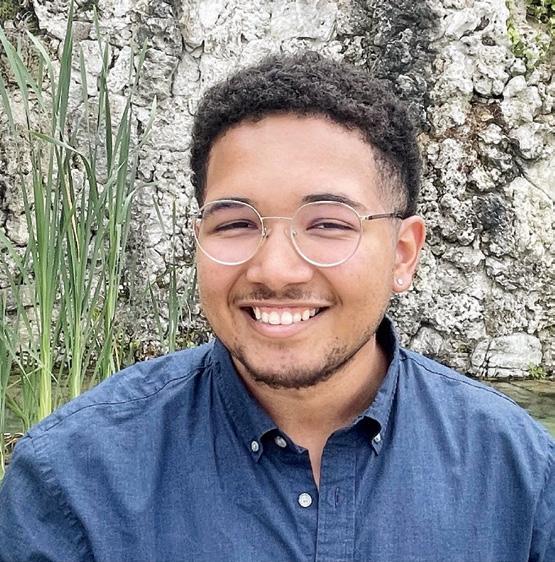
Josiah Gouker joined Matriculate as a High School Fellow in 2017 from his hometown in Yucca Valley, California. He ultimately chose to enroll at Princeton, where he then served as an Advising Fellow and Matriculate intern. After graduation, he joined Matriculate as a full-time staff member!
By Check: Matriculate
c/o Teach for America
25 Broadway, 12th Floor New York, NY 10004
*Donation Memo: Matriculate: The Giving List
By DAF or Stock Transfer: Tax ID# 35-2531989
By Credit Card: matriculate.org/donate
Contact: Shikha Bhatnagar Vice President, External Affairs (646) 408-3561 sbhatnagar@matriculate.org
Matriculate Matriculate.org
c/o Teach for America
25 Broadway, 12th Floor New York, NY 10004

Imagine a high school student in the 90th percentile or higher of their class who is enthusiastic about learning and has a desire to pursue higher education but doesn’t have the resources or information to make their dreams a reality. Studies show that half of high-achieving, low-income students don’t apply to a single college or university that is an academic match. Welcome to the concept of “undermatching.” It can be life-changing for tens of thousands of students.
“Undermatching,” says Bryden Sweeney-Taylor, CEO and co-founder of Matriculate, “is when high school students who are more than qualified to be at top tier universities, are simply not applying or enrolling. They don’t even know where to begin.”
What factors might turn a high-achieving university candidate away from even applying? “A fair amount of students we serve are first-generation college goers,” Sweeney-Taylor says. “So it could be that they’re not in family units or communities where adults who have gone through this can help with the process. So, their resources are just limited. There is also an element of coming from a low-income community and just cul-
turally discounting yourself from certain opportunities for which you’re qualified.”
Matriculate – a national nonprofit – is solving the undermatching problem by connecting high-achieving high school juniors and seniors from marginalized communities to highly-trained undergraduate advisors called Advising Fellows, who are themselves college students at top colleges and universities. These near-peer advisors provide personalized support to up to four high school students about the college selection, application, and enrollment process.
Near-peer advising is done virtually via text, video chat, and document sharing. “Technology is enabling that personal touch because our advisors can talk to these students wherever they are,” says Shikha Bhatnagar, Matriculate’s VP of external affairs. “So we’re blending that human element with that technology element. This is key to our model.”
“Technology also allows us to reach students in ‘recruitment deserts.’ Rural students,” Sweeney-Taylor adds, “are also high-achieving, but have far fewer resources than their urban counterparts.”

Thanks to the generosity of several key donors across California, donations made through The Giving List will be matched up to $100,000!
• $100 recruits one high school student for our Fellow program
• $500 recruits and trains one college student for our Advising program
• $1,000 covers the full Matriculate experience for one high school student
• $2,500 provides a yearly stipend for low-income college students (Advising Fellows)
• $5,000 supports a Matriculate launch at a new college or university in California
• $10,000 recruits and trains 20 Advisors, supporting 60 high school students
• $15,000 funds the launch of a targeted marketing effort to reach more underrepresented and lowincome high school students across California
“Your high schooler might be coming in from a really small community,” says former Advising Fellow Kristen Altman. “And you could be the first person to tell them: ‘Hey – this is possible!’”
Since its inception 10 years ago, Matriculate has served over 17,000 high school students across the country and has collaborated with over 4,000 undergraduate Advising Fellows who have delivered free advising to its High School Fellows (HSFs). California is the second most popular home state for Matriculate HSFs and
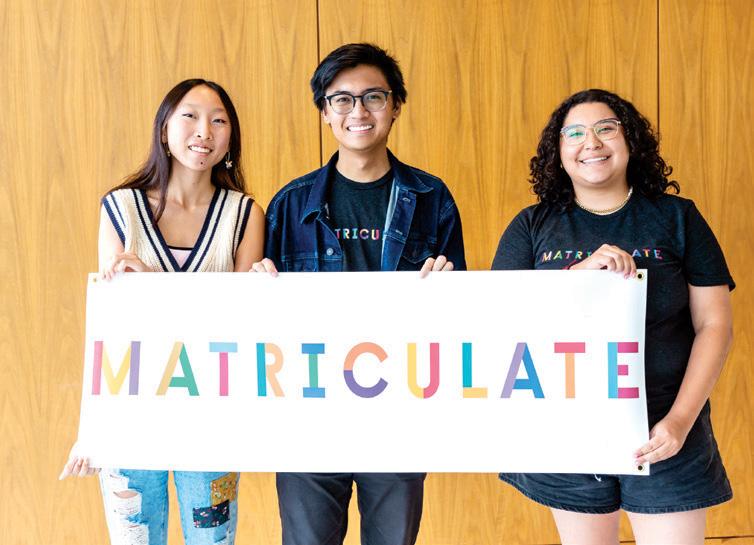
the most popular home state for Matriculate Advising Fellows.
Matriculate also partners with colleges and universities to support Advising Fellows on their campuses. Key partners include Stanford, Princeton, Notre Dame, and Johns Hopkins. Most of Matriculate’s Advising Fellows in California attend one of Matriculate’s three fellowship campuses in the state: Berkeley, UCLA, or Stanford. Not only do they serve as host sites for their college advisors, but college partners are also deeply involved in recruiting HSFs from underrepresented communities through webinars and resource guides. Matriculate is working with new college partners committed to meeting the full financial need of HSFs who enroll on their campuses.
Unlike so many challenges facing our communities, undermatching is solvable. Through Matriculate’s nearpeer advising model, high-achieving high school students from underrepresented communities are discovering new pathways to their future.

“As with many of our most dedicated supporters, my passion for Matriculate’s mission is deeply personal. I understand firsthand the challenges that many of our country’s brightest students face in navigating their way to top colleges. I am truly impressed by Matriculate’s ability to connect with over 3,000 high-achieving high school students each year, and I am proud of our impact. I look forward to expanding our reach, thanks to support from donors like you!”
– Gregory P. Spivy
Chair-Matriculate Board of Directors
Spivy Private Capital
Jonathan Ashtor, Esq.
Bank of America
Bloomberg Philanthropies
Jasanna Britton
Citadel
Matthew Cullinan
Emerson Collective
Miecha Forbes
Jed Hart
The Ichigo Foundation
Jack Kent Cooke Foundation
Jenesis Group
Madeline Kerner
Jim Larimore
Charley Moore
Jessica Ogilvie
Kim Collins Parizeau
Lynn Anderson Poole
Arthur Rock
Schusterman Foundation
Dane Skillrud
Gregory P. Spivy
Bryden Sweeney-Taylor
Lauran Tuck





By Check:
National Disaster Search Dog Foundation
6800 Wheeler Canyon Road Santa Paula, CA 93060
*Donation Memo: The Giving List
By DAF or Stock Transfer: Tax ID# 77-0412509
By Credit Card: searchdogfoundation.org/donate
Contact: Rhett Mauck Chief Executive Officer (805) 646-1015 Rhett@SearchDogFoundation.org
National Disaster Search Dog Foundation
www.SearchDogFoundation.org
6800 Wheeler Canyon Road Santa Paula, CA 93060 (888) 4K9-HERO
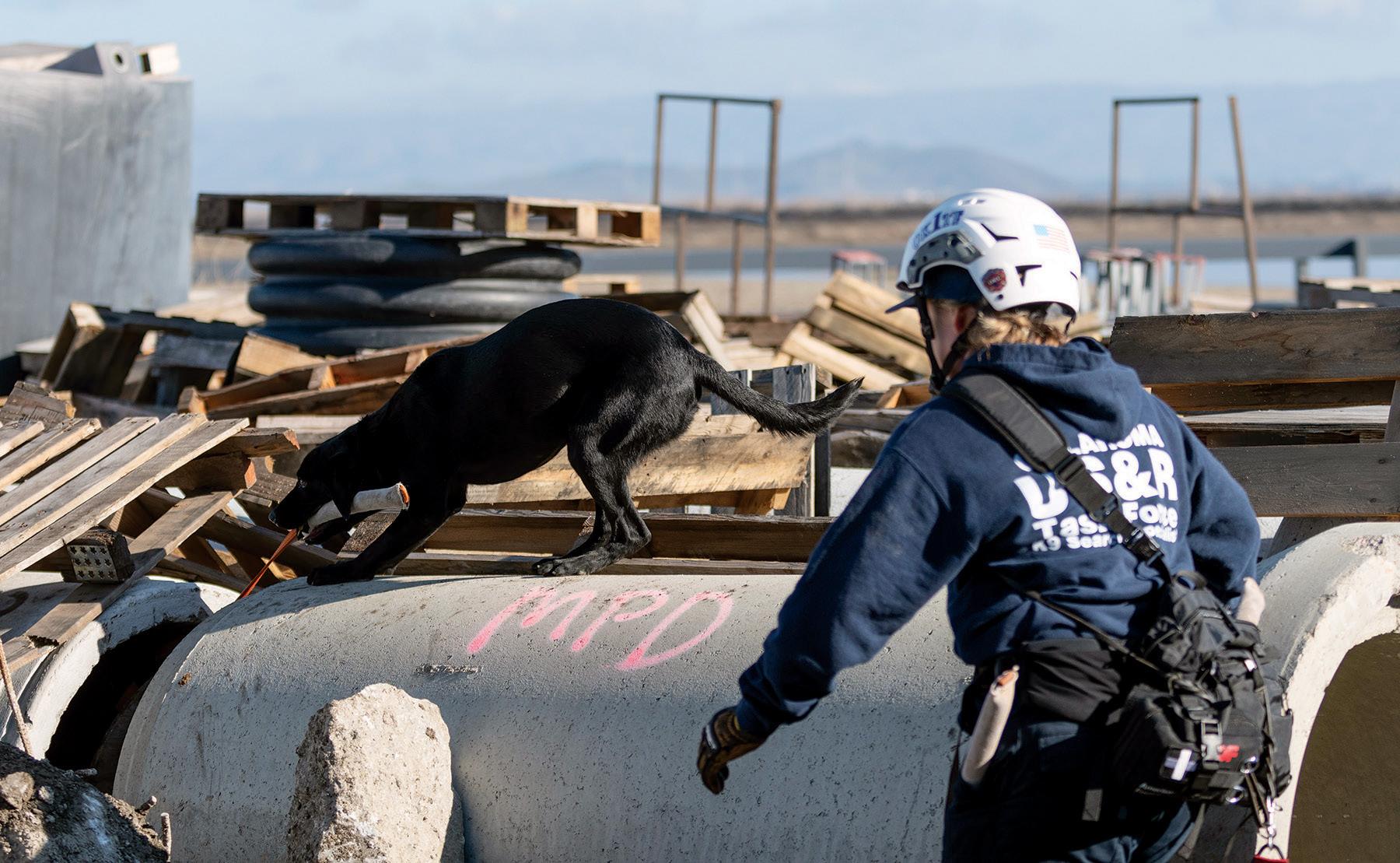
How many times has a family stared in slack-jawed wonder as the adorable new family dog tears around and around the yard like a caffeinated dervish, joyously destroying absolutely everything in sight? They may be looking at a future Disaster Search Dog in waiting. As National Disaster Search Dog Foundation’s (SDF) Wilma Melville has said (with her usual economy of language) – “These dogs need to work. When left alone in a suburban backyard, they destroy the place.” Melville knew that dogs in shelters were often remanded there by families for having exhibited the very character traits that will make them successful rescuers – if not calming, slipper-fetching companions.
In 1996, FEMA-Certified Canine Search Specialist Wilma Melville launched SDF to address once and for all the shortfall of rescue canines in the United States. The year before, she and her partner – a black Lab named Murphy – had spent a week poring over the smoldering rubble of the Alfred P. Murrah Federal Building bombing site. She was struck by how few rescue canines there were to search the site for survivors. In fact, only 15 such certified ca-
nine-human teams existed in the country at that time, all volunteers like herself.
Melville had an epiphany. Why not formalize and optimize canine recruitment and training, partner the dogs with working rescue personnel already well-versed in disaster response? She envisioned a positive feedback loop of rescue: the unwanted dogs rescued from shelters would themselves become trained rescuers. The idea had legs; four legs.
The National Disaster Search Dog Foundation is a 501(c)(3) nonprofit based in Santa Paula, California, which is also the location of the National Training Center – 145 sprawling acres of collapsed structures, large-area rubble searches, train and vehicle wrecks, and wilderness ravines; scenarios that can be reconfigured to keep the dogs’ rescue acuity sharp.
Melville’s brainstorm has changed the dynamic for canine-assisted rescue in disaster areas, domestically and globally. Do all recruited (rescued) dogs pass the training? Most do, not all. But SDF’s dogs are not a “rescue commodity.” They are the spirit of the place. Denise Sanders – Senior Director of Communications & Search
The frequency and strength of recent disasters are stark reminders that they can strike at the heart of any community. In the search for victims, a search dog’s remarkable nose and hard-earned skills mean the difference between days versus minutes, lost versus found, uncertainty versus hope. The National Disaster Search Dog Foundation (SDF) works diligently to ensure canine search teams across America can deploy at a moment’s notice when needed, which includes preparing the next generation of canine heroes.
From the day they arrive on campus to the day they are paired with first responders, SDF spends approximately $60,000 to train a search dog over 10 to 12 months.
SDF is raising $900,000 to train the next search dog graduates. Donors at $20,000 and above can become sponsors of a search dog in training, receiving updates on their progress and milestones throughout their career. Sponsor one or even a pack of canine heroes to be Part of the Search!
Team Operations at SDF – explains.
“It’s not just about the disaster search program,” Sanders says. “Once rescued, these dogs will never have to be rescued again. That is our lifetime care promise to any dog that enters our program.” As they move through the training process, the dogs need to navigate tight spaces, squeeze through small openings, walk backwards up a massive mound of rubble. Some dogs opt out, others can’t get enough.
“Some truly love it, and they just
dance across the rubble! And then there are others that seem to say, ‘Well, if you really want me to … and we’re not going to make them do it at all.” SDF is a rescue dog’s university, family, and best friend. Forever.
“We’ve significantly grown our network of career change options and adoptions,” Sanders says. “It’s about helping each and every dog. We want them to enjoy it. So we say, thank you for being willing, but maybe let’s try something you’ll actually love.”
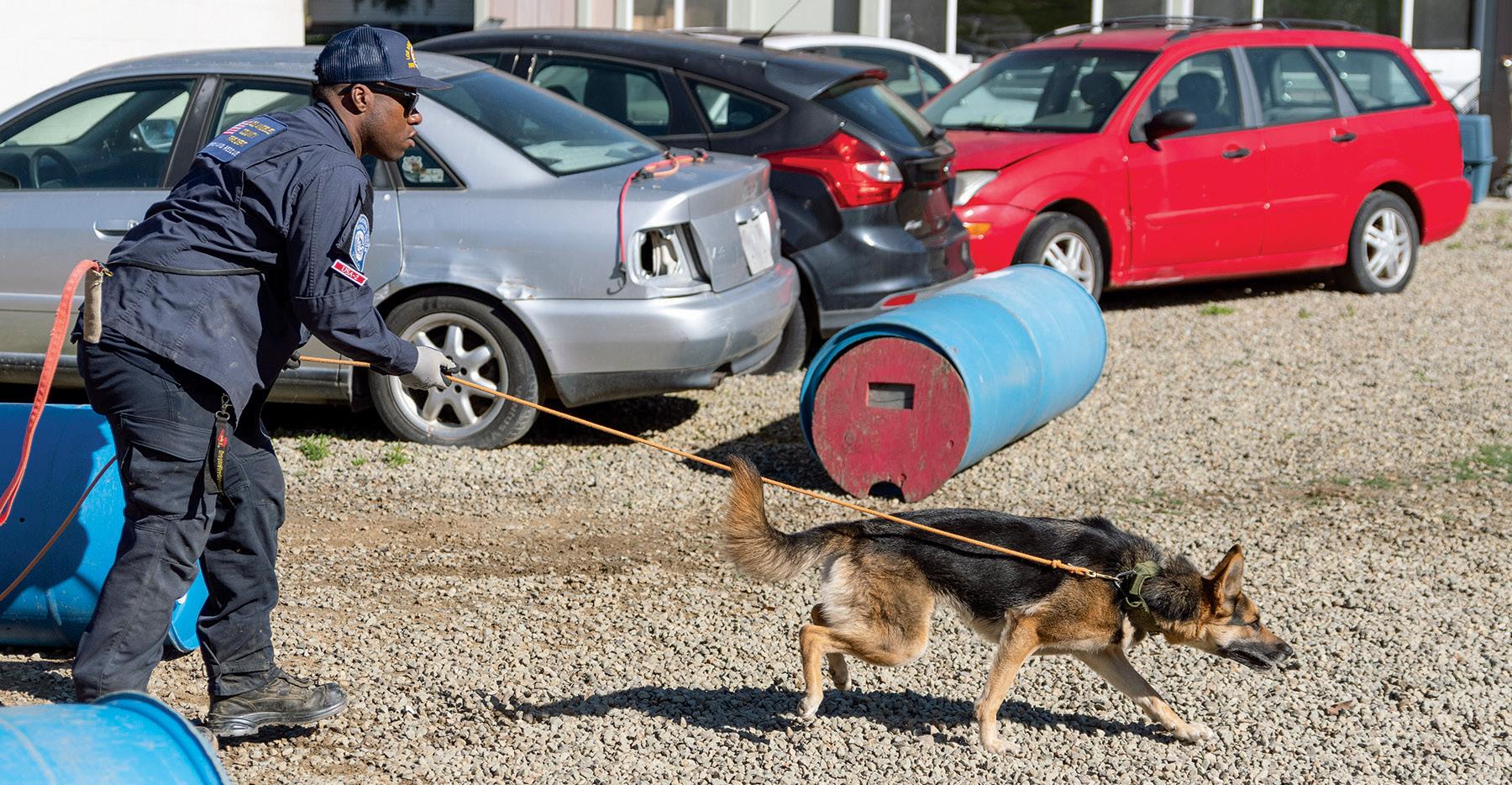

“Overthe years, the Search Dog Foundation has paired many canine disaster search teams that serve the Bay Area and we are grateful to have these canines as a resource to call upon when needed for our urban search and rescue team as part of the San Francisco Fire Department and California Task Force 3. The search dogs are a vital part of any deployment response—whether earthquakes, hurricanes, mudslides, or missing person searches, these highly trained canines are instrumental in completing our search missions. The Search Dog Foundation provides these canines as invaluable assets for our department and part of Task Force 3 freeof-charge, ensuring we stand ready to serve our community when called upon to help.”
–
Jeanne Nicholson Fire Chief, San Francisco Fire Department
George Leis – Board Chair
President and COO, Montecito Bank & Trust
Richard Butt – Board Vice Chair Retired EVP, Executive Creative Director, VMLY&R
Mike J. Diani – Secretary President, Diani Building Corp.
Christine DeVries Management Consultant
Robert Harris, Battalion Chief, Los Angeles County Fire Dept.
Rhett Mauck, CEO, National Disaster Search Dog Foundation
Sydne Rennie, Attorney, Brownstein Hyatt Farber Schreck
Deborah Whiteley, Communications Consultant
Crystal Wyatt, Leadership in Board Governance and Creative & Sustainable Philanthropy
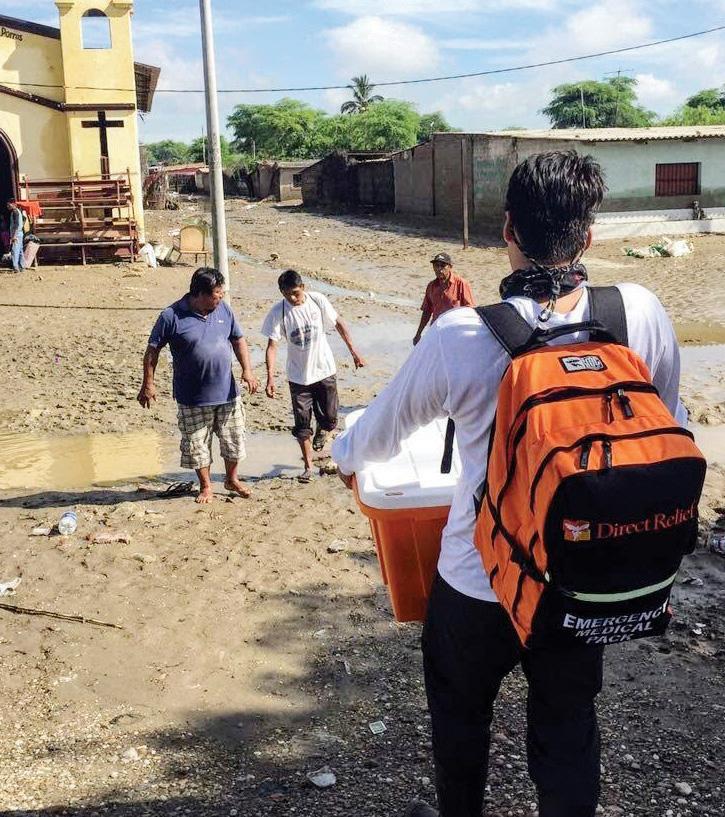

By Check:
Direct Relief
6100 Wallace Becknell Road Santa Barbara, CA 93117
*Donation Memo: The Giving List
By DAF or Stock Transfer:
Tax ID# 95-1831116
By Credit Card: directrelief.org/donate
Contact: Dean Axelrod
Vice President, Partnerships and Philanthropy (805) 879-4932
daxelrod@directrelief.org
Direct Relief www.directrelief.org
6100 Wallace Becknell Road
Santa Barbara, CA 93117

Direct Relief navigates the war zones in Ukraine to deliver cystic fibrosis medications, transports Mpox vaccines to clinics in the Democratic Republic of Congo, and works around shuttered ports in Haiti to supply insulin. Operating amid some of the world’s most complex crises, Direct Relief consistently provides targeted, life-saving aid where others cannot.
From international conflict zones to wildfire-ravaged communities in the U.S., the Santa Barbara-based nonprofit supplies essential medicines, medical supplies, and resources to those impacted by poverty and disaster, regardless of their ability to pay.
Direct Relief stands out for its ability to quickly and e ciently deliver specifically-requested aid with precision in challenging environments domestically and across the globe. Dean Axelrod, VP of Partnerships and Philanthropy, empha-

sizes that the organization’s success lies in listening to local healthcare providers and tailoring its support to their specific needs regarding medications, funding, mental health services, and even reliable power.
“Healthcare providers rooted in their communities know best what is needed and when,” says Axelrod. “Direct Relief’s ability to respond precisely –whether with routine over-the-counter products or complex, highly regulated rare disease therapies requiring specific temperature control – sets it apart.”
Direct Relief’s precision logistics also set it apart. Advanced tracking systems monitor shipments in real time, ensuring sensitive medications like insulin, cancer drugs, and vaccines remain viable throughout transit. This level of control is crucial in unstable regions, where power outages or transport delays can disrupt conventional supply chains. After Hurricane Maria devastated Puerto Rico, the organization committed to providing resilient power systems to health centers using solar panels and batteries, which most recently kept clinics running when Hurricane Ernesto hit.
While the organization is most visible during emergencies, its ongoing delivery of essential resources ensures it is always ready to respond effectively and immediately when crises occur.
DirectRelief ensures 100% of every donation goes directly to delivering aid, honoring donor intent with full transparency. By leveraging billions in in-kind medical donations, the organization amplifies each dollar’s impact, delivering more aid than cash alone could achieve.
“Donors appreciate that their money is used e ciently to deliver aid where it’s needed most,” says Dean Axelrod, VP of Partnerships in Philanthropy.
Direct Relief’s commitment to accountability and transparency builds trust, giving donors confidence that their contributions directly support critical programs and those in need.

Since its founding in 1948, Direct Relief has greatly expanded and now operates in over 100 countries. But Direct Relief’s impact extends domestically as well, supporting U.S. communities during disasters and beyond. During hurricanes and tropical storms, their pre-positioned hurricane preparedness packs (stationed at 70 sites across the United States) are ready to assist. During wildfires (like the
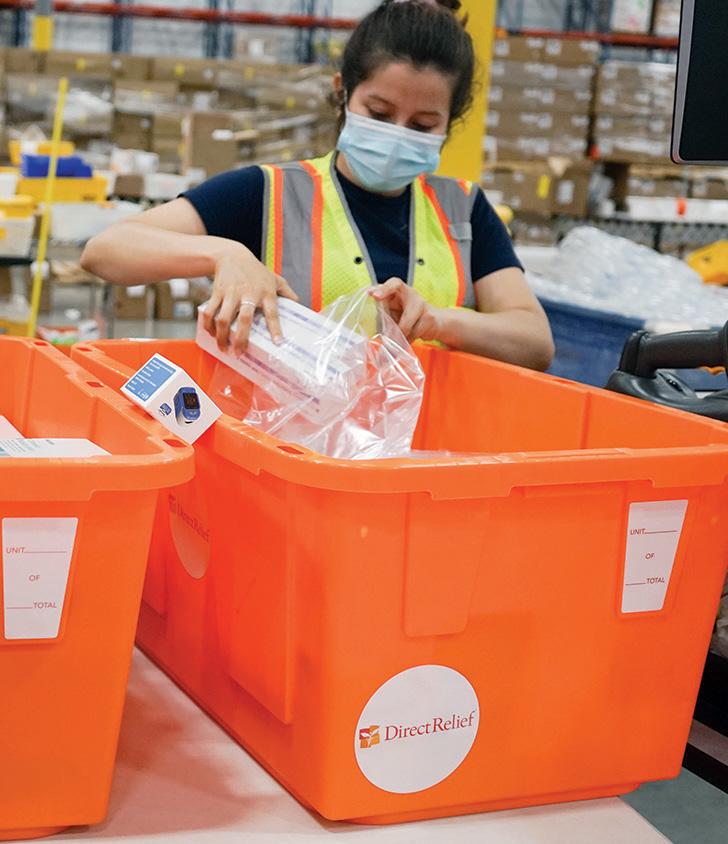

Thomas Fire), Direct Relief supports safety-net providers and others with specialized wildfire kits, N95 masks, medications, first aid supplies, and emergency grants to help responding agencies increase community resilience.
Just this year the organization has dispensed over $1 billion in medical aid and delivered over four million pounds of medicine and supplies.
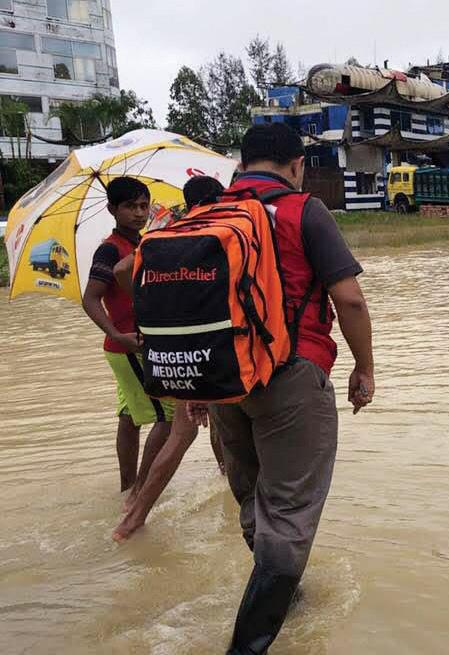
“W
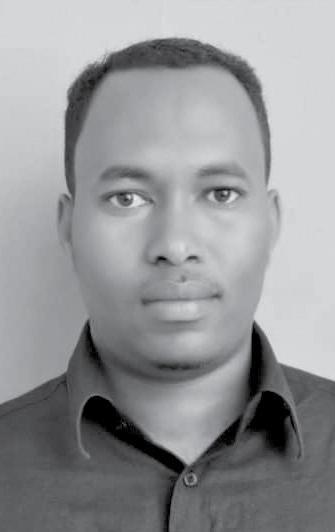
hen Cholera hit Somaliland, many patients were unable to access early interventions and rehydration treatments due to lack of resources and transportation. Without Direct Relief’s Cholera Kit, particularly IV fluids and oral rehydration salts, 50% of our patients could have died. Direct Relief’s timely response gave us the tools and encouragement we needed to fight the outbreak.”
– Dr. Mustafe Mohamoud Hoori Hospital Director, Daryeel Maternity Hospital
Emma Carrasco
Adam Cooper and Melissa Fleisher
Mary M. Dwyer
Henrietta Holsman Fore and Richard Fore
Heitham Hassoun
Mark and Kim Linehan
Jay McGonigle
Harry and Jacqueline McMahon
Annalisa Pizzarello and Robert Conway
Marla Salmon
Mark and Lynda Schwartz
Perry Siatis
Laurie Siegel and Joseph Nosofsky
Tom Strickland
Thomas and Heather Sturgess
Elizabeth A. Toro and Mark Hauser


Despite the fact that roughly 400,000 children are living in foster care in the U.S. today, their fates are too often overlooked. Giving young people support – who have invariably experienced trauma before and during life in the system – is both noble and critical work.
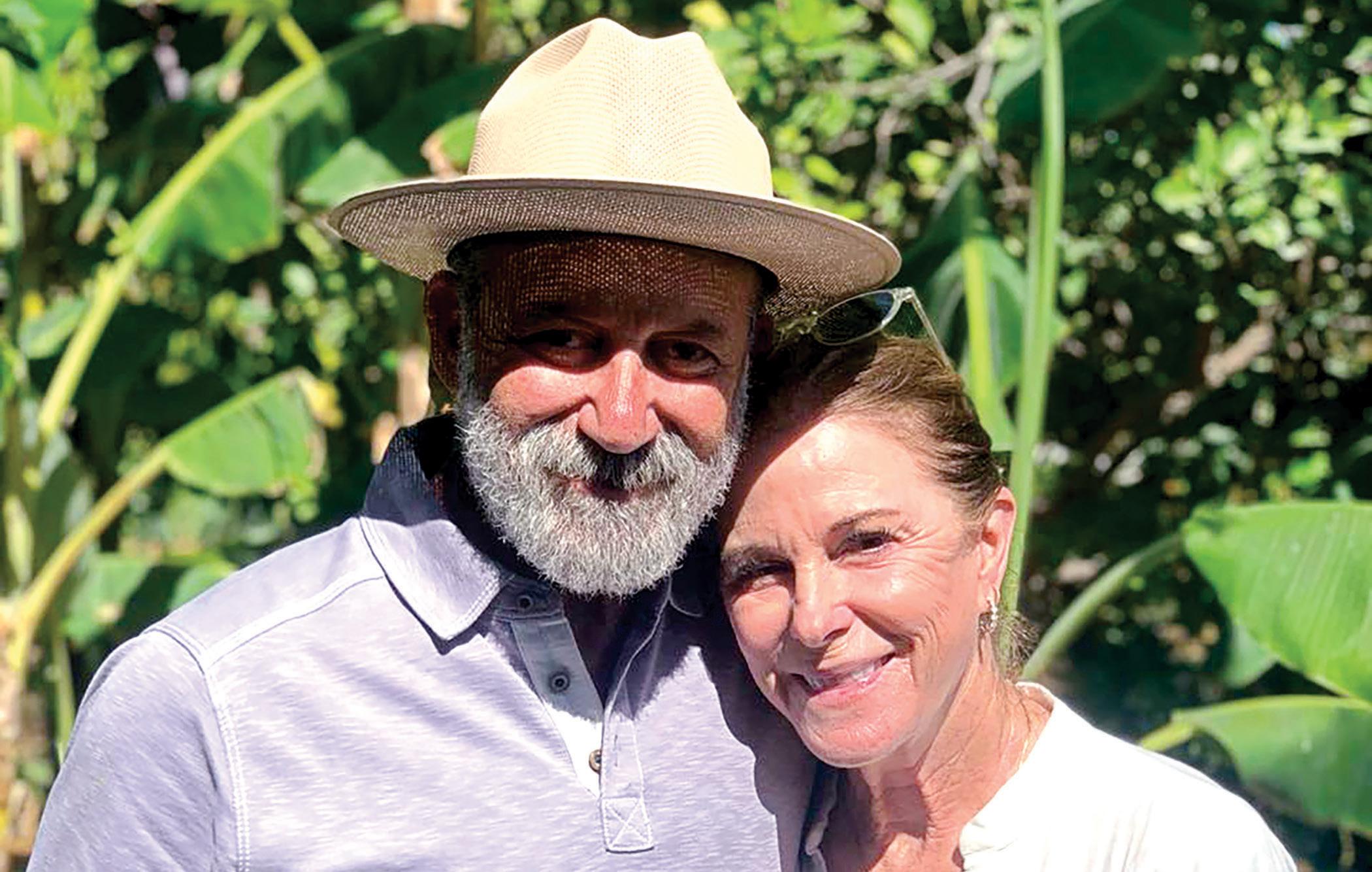
Born in Cuba and adopted at three months old, Angel Martinez immigrated at the age of three to the United States. His journey, from working-class immigrant to successful business leader is described by Angel as something of a Horatio Alger story; one that exemplifies the power of opportunity and belief.
A talented runner in high school, Martinez’s passion for athletics led him to the footwear industry where he played key roles in building iconic brands such as Reebok, where he spent 21 years, and Keen, a company he later founded. As CEO of Deckers Brands from 2005 until his retirement in 2016, Martinez grew the company from $200 million in revenue with 140 employees
to $1.8 billion with 4,000 employees worldwide.
I was eager to speak with Martinez as a shining example of a successful leader who combined his corporate leadership with a passionate advocacy for corporate philanthropy, human rights, and creating opportunities for others. Among other things, Martinez was an executive producer of the Human Rights Now! World Tour in 1988 and has engaged with organizations like the Boys and Girls Club. Even in his limited (by choice) service on corporate boards like that of Korn Ferry, he continues to champion diversity, equity, and inclusion in the corporate world. His story is one of resilience, hard work, and a deep-seated belief in the power of collective genius and giving back to the community.
Q: Can you tell us a little about your journey to where you are today?
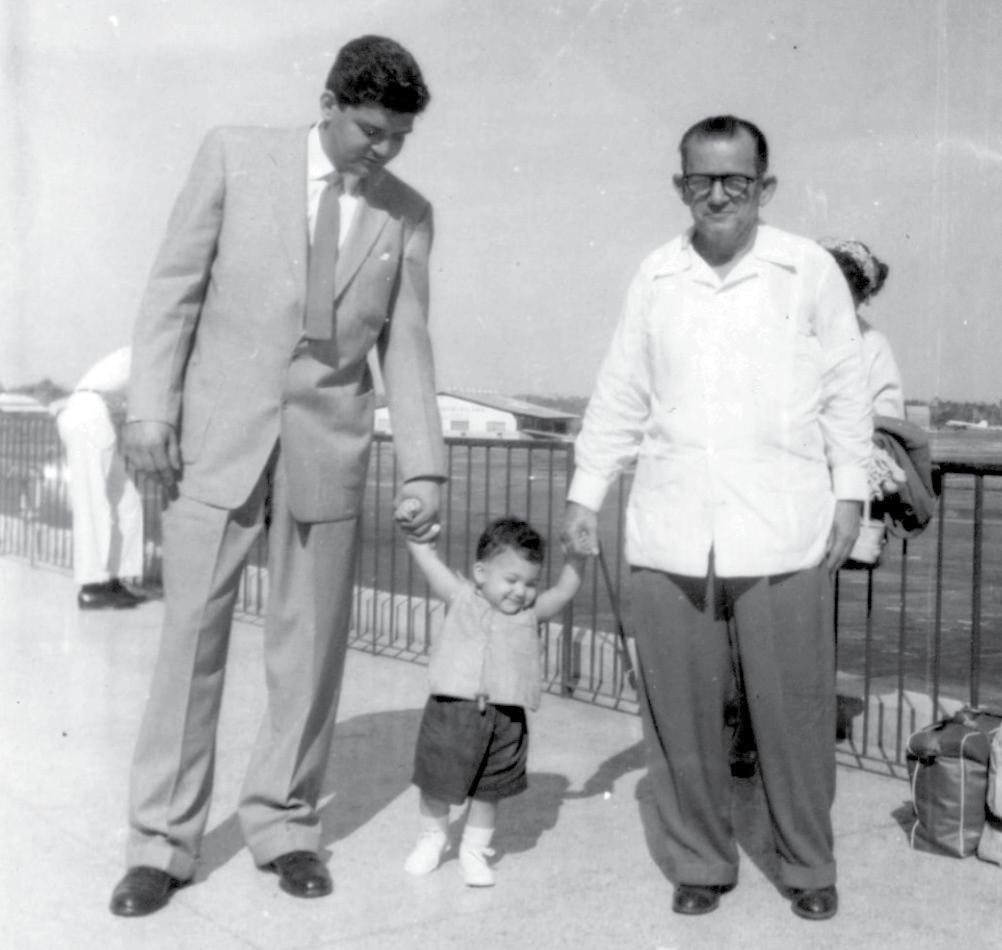
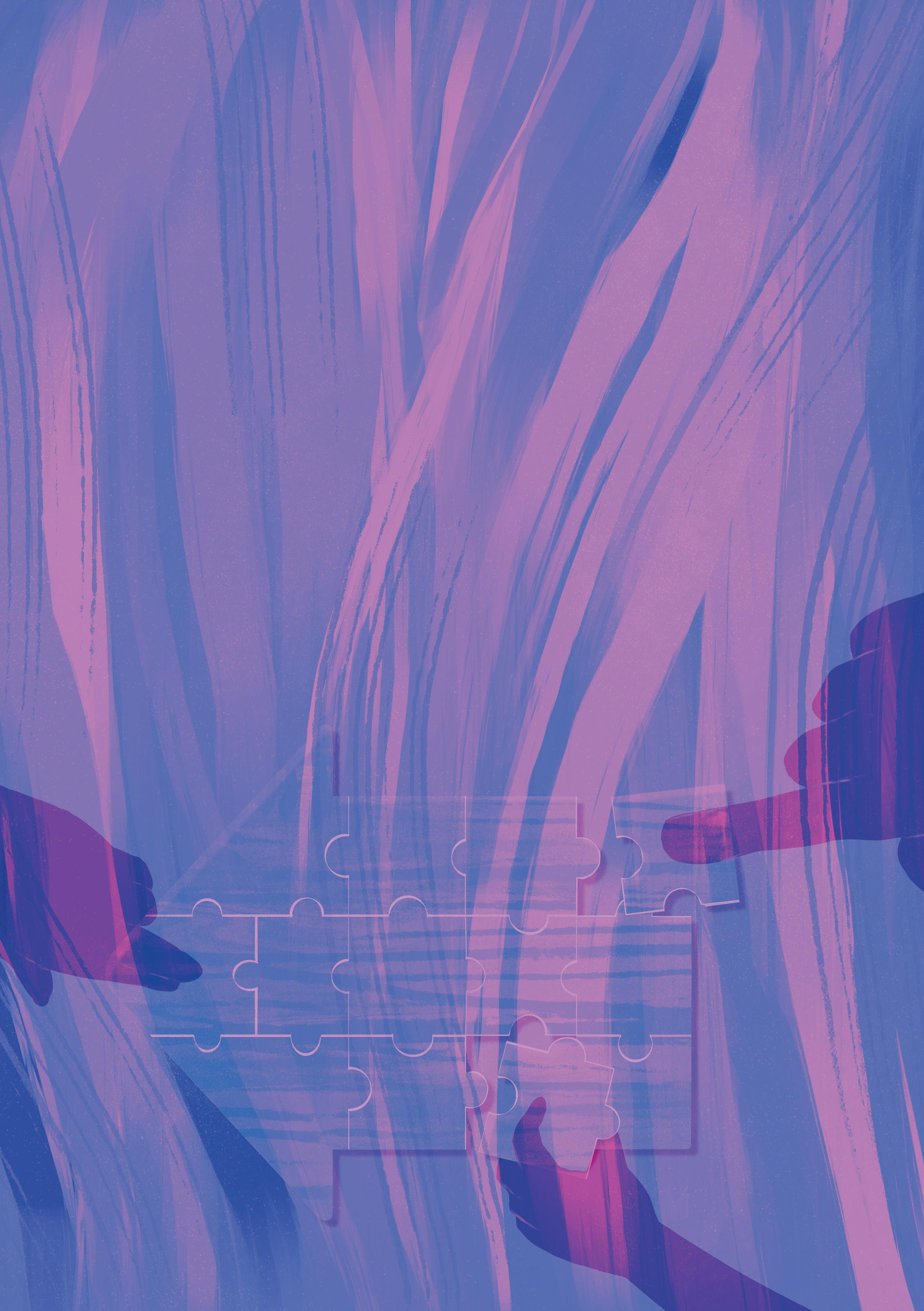
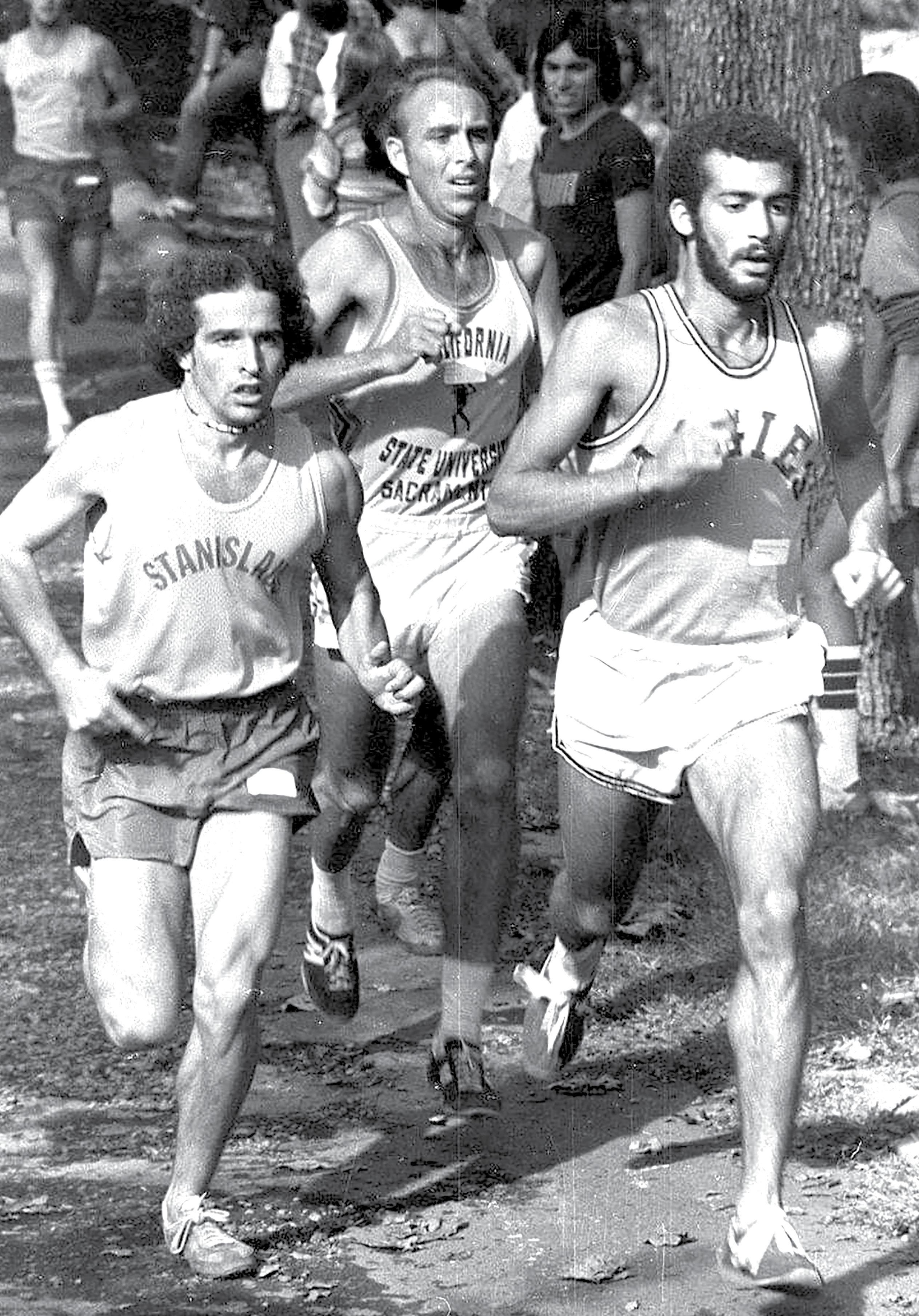


“And if you create opportunity, and if you’re successful, part of your contribution is to spread that, to seed that, to create in people the idea that it’s not all about you.”
Otherwise, you’re failing. It’s not about the money.
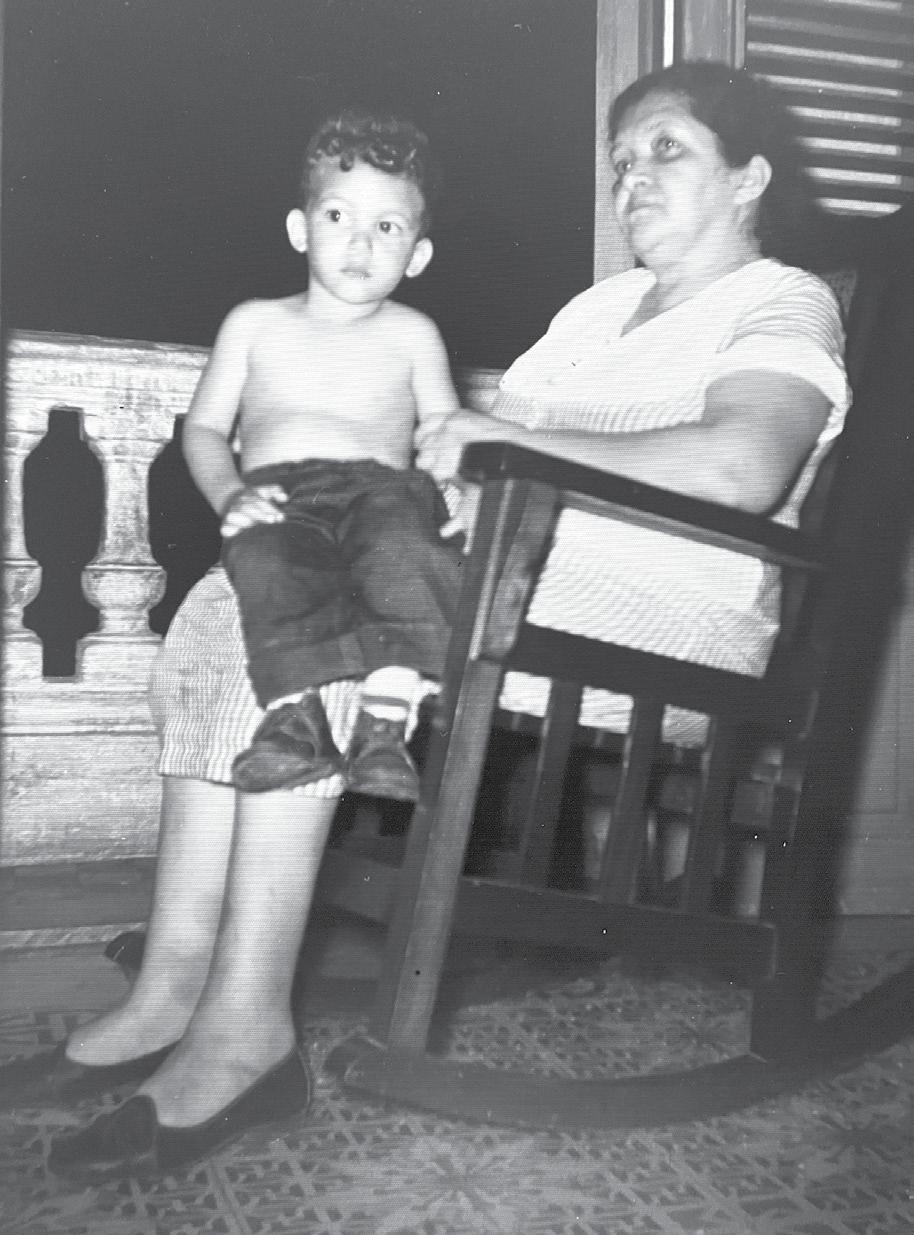

“What is perceived about philanthropy is that you’ve got to be able to write the big checks in order for it to really be philanthropy, which is nonsense, actually. Look at what’s happening in the elections with people writing $50 checks times 20 million. If we want to solve a problem, let’s understand that it’s a collective issue and that the small checks matter as much as the big checks.”
So, in my opinion, Deckers needed to be an important part of the community because it needed to demonstrate to other companies that it’s good for business to give back. The right kind of employees want to work for a company that wants to give back. Selfishness has no place there.
A company succeeds because people pull together. They pull together on one idea, they commit to it and they make it happen. And then, you create what I call a collective genius. And you actually learn to throttle that and encourage that. And suddenly unbelievable ideas start popping up all over the place.
Q: What causes are the closest to your heart?
A: Kids, opportunities for kids. What my teacher did for me in buying me a wardrobe, a couple pairs of jeans, a few shirts, and some sneakers. That’s why I’m involved with the Boys and Girls Club. When I was at Deckers, we made sure we were focused on that. When I was at Reebok, we were focused on human rights. That was a big issue. I was executive producer of the Human Rights Now! World Tour in 1988 with Amnesty International. That was Sting, Peter Gabriel, Bruce Springsteen, Tracy Chapman. Seventeen concerts on five continents over a month and a half period. Crazy, crazy thing. But we did it in conjunction with Amnesty International to celebrate the 40th anniversary of the Universal Declaration of Human Rights. And that’s when I discovered that most countries violate everything they signed up for when they signed the Declaration of Human Rights, including the United States.
Human rights violations exist everywhere in the world. And until we all learn that we’re all in the same boat here, we’re going to keep confronting these problems. The selfishness at the core of the political argument is incredibly destructive. And people don’t seem to understand that it’s just a path to failure. Everything is a zero-sum game. I can’t see you have something because it takes something away from me, instead of, why don’t we all just create something we can all benefit from? That’s the only way we’ve ever moved forward as humans.
Q: Can you elaborate on what inclusion looks like to you?
A: Well, first of all, if you close your eyes, say you were blind and you couldn’t see what the biases are out there, you couldn’t see a person’s skin color, you couldn’t see whether they had a handicap, you couldn’t see anything. All you could do was hear them. Your worldview would be totally different, wouldn’t it? The core of inclusion is this idea that you judge a person by who they are, the things that are important to them, what they value, that’s the important thing.
Inclusion is also the understanding that collective genius is a very powerful thing. Why would I, as a CEO of a company, restrict the quality of ideas that can come into this company? Why would I ever do that? I don’t care where the ideas come from. Best idea wins. And the people who want to work hard to make it happen.
Inclusion is, beyond inclusion of race, it’s inclusion of ethical standards. It’s inclusion of world views grounded on sets of ethical principles. As long as we’re all focused on the greater good, we succeed. I think
in the end, when companies or societies do that, they win, and when they don’t, they struggle.
Q: Can you talk about the importance of small contributions in philanthropy?
A: It’s funny because when I was a kid, and I mentioned my teacher, Mr. Quilici. But in the Bronx, there was an organization that came into the neighborhood and they were recruiting kids to go to a camp, a camp called Camp Brookhaven. The cost was $2.50 for a week of camp. It was to pay for the gasoline to get the kids to and from the camp.
And I’d never been in an environment where there was a lake or there were trees or any of that stuff. I’d never eaten pancakes. I’d never done any of that stuff. Never really seen fireflies like that. The Bronx has trees, but they’re sequestered. And that was this organization, and we had Bible study every day for half an hour and learned all the gospel songs. But that really wasn’t what it was about. It was actual, true Christian
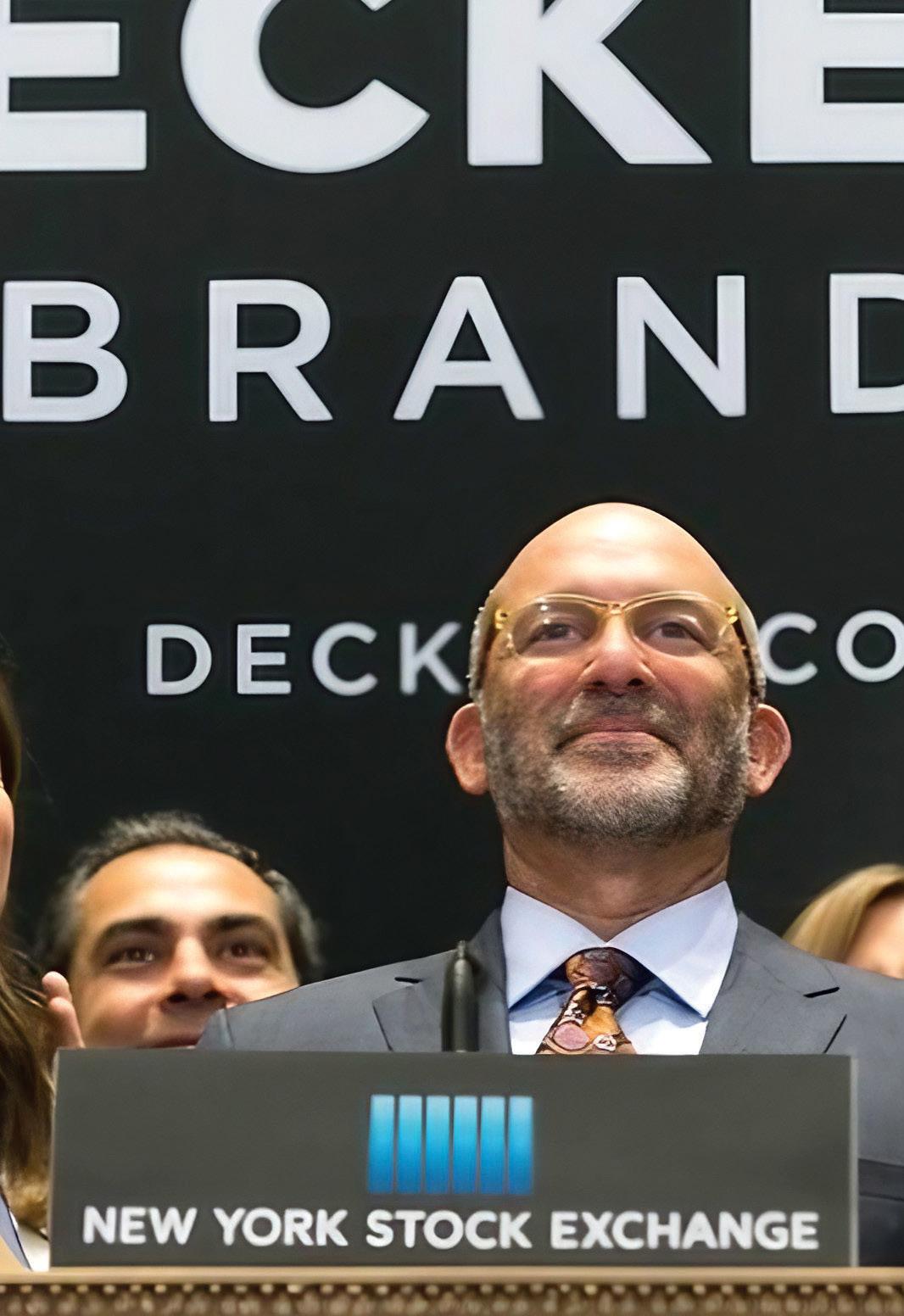


“R elational pro bono therapy can be life saving. The relational, financial, and mental health support of A Home Within has the power to heal attachment wounds, connect individuals to vital resources, and provide a very core basic need of consistent, safe, and reliable source of emotional support that one may not have otherwise.”
– Sonia A. Volunteer, Former Client
By Check:
A Home Within 195 41st Street, Ste. 11172 Oakland, CA 94611
*Donation Memo: A Home Within: The Giving List
By DAF or Stock Transfer: Tax ID# 94-3402610
By Credit Card: ahomewithin.org/donate
Contact: Reed Connell Executive Director (510) 387-7518 rconnell@ahomewithin.org
A Home Within ahomewithin.org
195 41st Street, Ste. 11172 Oakland, CA 94611
1 (888) 898-2249

“What appeals to me so much about A Home
Within is the kind of person that makes the commitment to be there for whatever it takes. People who really care, who are doing the work because of no other reason than a commitment to humanity.” -A Home Within Volunteer Therapist
Over the past few years, a crisis has gripped the mental health field, with providers experiencing burnout, scaling back on training, or leaving the field. And yet, A Home Within’s national network of volunteer therapists answers the call to serve by donating one hour of free therapy every week to a client who has experienced foster care.
Nearly 600,000 children and youth are currently in foster care, and research shows that mental and behavioral health is their largest unmet need. The idea for A Home Within was born thirty years ago, when a handful of San Francisco psychotherapists gathered around a kitchen table to imagine a world where children could heal from the trauma of foster care without fi -
nancial or administrative barriers.
The idea of a lasting relationship between a client and therapist became the centerpiece of A Home Within: to identify, recruit, train, and support a network of licensed therapists who each provide free, weekly, one-to-one therapy to a child, teen, or adult - for as long as it takes.
Today’s A Home Within is humming with momentum. “We’re currently experiencing unprecedented program growth,” Executive Director Reed Connell says. “We’re onboarding new therapists and serving more young people than ever before.” To meet the growing need, they have tripled therapist recruitment. They have also expanded their clinical support, continuing education, professional development, and research programs at a record rate.
Nearly 2,000 volunteers across the nation have embraced its mission. Every week, clients from San Francisco to New Jersey will meet with their A Home Within therapist, whether it be the first time or the hundredth time.
Committed, compassionate volunteer clinicians are at the heart of A Home Within’s mission to offer free, open-ended, individual, relationship-based therapy to foster youth. With staggering numbers of foster youth needing and seeking therapy, more volunteer clinicians continue to be needed.
Executive Director Reed Connell says, “It is likely we’ll hit 750 volunteers this year, and may double it next year. We are looking for $500,000 a year, for the next three years, to support our extraordinary growth and effectively double the number of young people we serve.”
The funding would allow the volunteer clinician community to keep expanding, creating a more robust cohort. “If we’re supporting the mental health workforce’s retention of therapists of color with LGBTQIA, native therapists and so on, we are improving the quality of the mental health field as a whole,” says Connell.
Based on current hourly rates, this network has collectively donated more than $2.5 million in therapy sessions.
To the volunteer clinician, A Home Within offers a shared purpose. “We really emphasize to our volunteers that they’re becoming part of a supportive community,” Connell says. For every prospective volunteer, staff confirm licensure and insurance, run a background check, and conduct a 1:1 interview. Volunteers then receive pre-service training and choose an AHW-facilitated consultation group. Then, staff matches them with a current or former foster youth based on
clinical factors and client preferences. Volunteers have access to free accredited continuing education seminars for all license types in all states.
This growth has created a need to adapt and improve their systems, workflows, and resources to build staff capacity. “By creating a community that’s extremely well supported and truly joyful in its commitment, we magnify its impact,” says Connell.
In its 30th anniversary year, A Home Within’s vision remains clear: that a high-quality healing relationship is available to everyone who has experienced foster care.

There are over 600,000 youth in foster care nationwide, and mental health care is their largest unmet need.

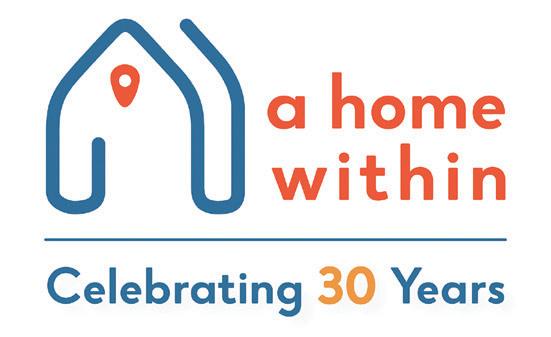
May and Stanley Smith
Charitable Trust
Sarnat-Hoffman Family Foundation
In-N-Out Burger Foundation
Kaiser Permanente
MYDAR Foundation
Glass Half Full Fund
Mental Insight Foundation
Aviv Foundation
The Louis and Harold Price Foundation
Pritzker Foster Care Initiative
CASA Organizations
Throughout California
Foster Care Research Group
at the University of San Francisco
11 California Family Foundations
Over 400 Individual Donors

“Every young person deserves a life filled with opportunity and happiness. The work Pivotal is doing to support foster youth in their educational and life endeavors is transformative. Our family is grateful to support Pivotal through both volunteerism and as multi-year donors. We know that every resource is being put to work to transform lives.”
– Maribeth Portz
Pivotal Board Member
By Check:
Pivotal Connections
P.O. Box 26835 San Jose, CA 95159
*Donation Memo: The Giving List
By DAF or Stock Transfer:
Tax ID# 77-0166138
By Credit Card: pivotalnow.org/donate
Contact: Chelsey Souza, CFRE Chief Development O cer (408) 458-8394 chelsey.souza@pivotalnow.org
Pivotal pivotalnow.org
P.O. Box 26835
San Jose, CA 95159 (408) 484-6200

Sarah Gentle was 17 and in foster care when she had a meeting with her Individualized Education Plan (IEP) team. The group, which comprised Gentle’s teachers, parents, and other providers, was discussing potential career paths for her. Gentle is legally blind, and the team decided that court reporter would be an ideal career choice for her. Gentle’s Pivotal coach, Savonna Stender-Bondesson, noticed something: nobody in the group was asking Gentle what she wanted, and the

young woman did not seem enthused about the potential career path.
For Gentle, the moment was, well, pivotal. Like many youth in foster care, she had countless service providers working with her – but until then, none had asked her what she wanted. Gentle wanted more. She dreamed of becoming a social worker and she and Stender-Bondesson started working on a plan to accomplish that dream.
“So many other providers saw my limits,” says Gentle. “But my Pivotal coach saw my aspirations as limitless.” With Pivotal’s support, Gentle completed a degree in Sociology and is now a Pivotal coach herself, recently starting her postgraduate work to become a Licensed Clinical Social Worker.
It’s that focus on what students want – and how they can achieve it – that sets Pivotal apart.
There are 60,000 young people in California’s foster care system and their outcomes are among the lowest in the country, often tied to higher levels of unemployment, homelessness, and incarceration. While 96% of foster youth report that they’d like to attend college, only about 10% earn a
The Dream Makers Circle is a special group of donors who believe deeply in the potential of young people in and from foster care. By contributing $3,000 or more annually, Dream Makers help Pivotal scholars turn their dreams into reality.
By contributing monthly, Pivotal GEMs invest in Pivotal’s students to help them achieve their goals. Monthly giving allows donors to spread out their gift over the year and creates a consistent stream of revenue to ensure the organization can continue to support foster youth into the future.
bachelor’s degree. Pivotal’s mission is to break that cycle, for good.
Pivotal works to support young people in and from foster care so they can realize their educational and career goals and ensure their equitable access to opportunity. They provide traumainformed individualized educational coaching, scholarships, resources, professional development, and career readiness support to foster youth as they navigate the critical years from high school to college and into the workforce.
“A lot of our students don’t have adults to talk to about what they want for their future,” says Dazzy Maldonado, Pivotal’s High School Coach Supervisor. “They’re in the trenches and the last thing they can think about is school when they’re worried about where they are sleeping tonight. So, my role is to say, ‘I’m going to hold this future for you. Because I know you’re going to get there, even if you don’t see that right now.’”
Students come to Pivotal as early as the 8th grade, through referrals from social workers, the county, and other foster youth. Pivotal’s help is equal parts trauma-informed life-skills coaching, emotional support, and tactical skills and resources to navigate daily challenges. Each scholar is paired with a coach who helps determine what
the student wants to accomplish. A skills assessment helps identify specific areas – like time management or organization – that the student may need to improve upon. Then, the coach and scholar make a plan together.
Says Gentle, the Pivotal scholarturned-coach, “My coach’s unwavering support and dedication is what got me into college. At Pivotal, we aren’t just providing educational access and scholarship funds. We’re instilling hope in those who otherwise may have none; I am a living testament to how powerful that can be.”
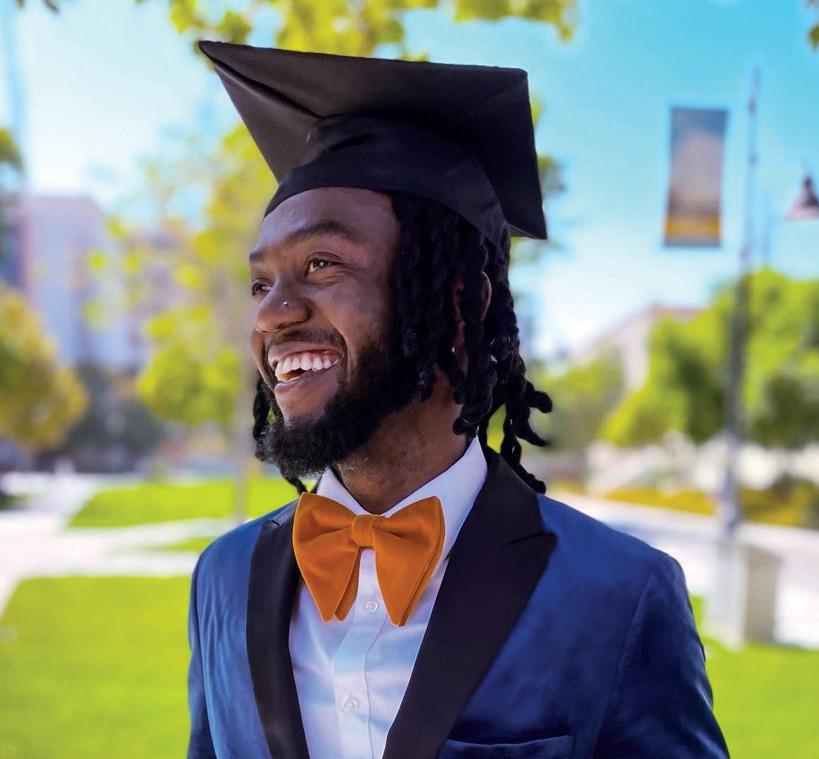
Pivotal scholar Fiston graduated from San Jose State University in 2022. “Through all my struggles, I was fortunate to receive support from kind and generous people who wanted to help. Pivotal helped me identify what I wanted in life and figure out a path to get there.”
While 96% of foster youth report that they’d like to attend college , only about 10% earn a bachelor’s degree .

Brandenburg Family Foundation
Elaine Cardinale
Tammy and Bill Crown
Ranae DeSantis
Louise De Putron
Thomas & Ellen Hogue
Family Foundation
Kieve Foundation
KLA Foundation
Gordon and Betty Moore Foundation
Margaret and Kapil Nanda
Family Foundation
John O'Farrell and Gloria Principe
Maribeth Portz and David Wanek
George and Sandra Quinn
Sarah and Carl Rosendahl
Michael and Leslie Saviage
Leo M. Shortino Family Foundation
Sobrato Philanthropies
Sheri Sobrato
Lisa and Matthew Sonsini
Mary and Mark Stevens
Taube Foundation for Jewish life and Culture
Grace and Steven Voorhis
Daniel and Charmaine Warmenhoven
Kevin and Stacia Wells


As an information society, we rely on those who dedicate themselves to exploring, seeking, examining, and understanding the data of the world – so they may relay consequential knowledge and guidance helping us lead the safest, healthiest, and most productive lives possible.

Pastor Samuel Casey is a prominent figure in community organizing and social justice in California. As the senior pastor and co-founder of the New Life Christian Church, he combines his faith with a passionate commitment to social change. Casey is also the founder and executive director of COPE (Congregations Organized for Prophetic Engagement), an organization dedicated to dismantling pipelines to mass incarceration and addressing issues such as healthcare, housing, and education equity.
With a calling to preach since age 13, Casey began his journey in ministry in the early 1990s. His work in community organizing started in 1999, leading to significant policy victories and collaborative efforts across California. Under his leadership, COPE has grown into a substantial organization that protects and revitalizes communities.
Casey’s approach intertwines grassroots activism with faith-based principles, focusing on empowering marginalized communities and promoting justice reform. His work has contributed to changes in school policies, reentry programs for formerly incarcerated individuals, and statewide initiatives addressing systemic inequalities.
Q: Can you tell us about your journey to becoming a pastor and community organizer?
Pastor Samuel Casey: I come from a family of faith, with several pastors in my lineage. I’ve known I was called to preach since I was 13. I’ve been preaching since then, around 1993-1994. In 1994, a gentleman named Reverend Gene Williams II, who became my mentor, joined our church in Watts, California.


“Will Black remain the ‘new black’? Will Black issues still be of interest, especially in California where our population is declining? Will we still be considered separately, or will we be lumped into ‘people of color’? Will the resources still help us fight anti-Blackness, even when it comes from other people of color?”
Q: How do you feel your work has had a ripple effect throughout California?
A: The work we’ve done, along with other organizations throughout the state, has literally changed the face of how we’re thinking about incarceration. We’ve been able to push for changes that have affected how schools work with school police departments. For example, Oakland has dismantled its school police department, and the L.A. Unified School District has reduced the resources it’s giving to school police.
Laws have been changed around willful defiance, clarifying its definition in school districts. Places like San Bernardino, Stockton, and Fontana have all been put on notice about their disproportionality in suspensions and expulsions. I believe this is the work that we, along with other organizations throughout the state of California, have impacted not only locally but regionally and ultimately statewide as we look at harmful policies and practices.
Q: How does your faith intersect with your work in social justice, particularly in addressing the racial disparities in the justice system?
A: I believe that Jesus, while on Earth, was the greatest community organizer and social activist that ever lived, and anyone who claims to be his follower must do likewise.
My faith has really built my conviction that I literally stand on the shoulders of not only Jesus Christ, but Medgar Evers, James Cs, Dr. King, Malcolm X, Harriet Tubman, Frederick Douglass, Sojourner Truth, and so many others who have come before me.
There are two specific texts that root me in this work. One is Micah 6:8, “What does the Lord require
of you? But to do justice, to love mercy, and to walk humbly with your God.” The other is in Matthew 25, where Jesus talks about distinguishing between those who truly follow him and those who don’t, based on how they treat the marginalized – visiting those in prison, clothing the naked, feeding the hungry, housing the homeless.
I believe all of that is a work of justice biblically. God is a God of justice and will always be on the side of the oppressed, the marginalized, the widow, and the orphan – those who do not have access to the table of radical belonging. So anywhere that doesn’t exist, I believe there is a call on my life to participate in a process that widens the circle of human concern rather than constricting it.
Q: Can you discuss the California Black Freedom Fund (administered through Silicon Valley Community Foundation, this is a five-year, $100 million initiative that prioritizes investments in Black-led organizations confronting racism) and its impact since its establishment in 2020?
A: I believe the California Black Freedom Fund is not only accomplishing its goal, but it’s expanding the capacity of organizations like COPE and other Blackled and Black-empowering organizations throughout the state of California.
Here’s the rub, though: It shouldn’t have taken the murders of George Floyd, Breonna Taylor, Tamir Rice, and others for this fund to be established. We’ve been voicing our needs for years. While I’m proud that the Black Freedom Fund has built capacity and increased our reach, allowing our budgets to grow radically in a short period of time, there are challenges ahead.

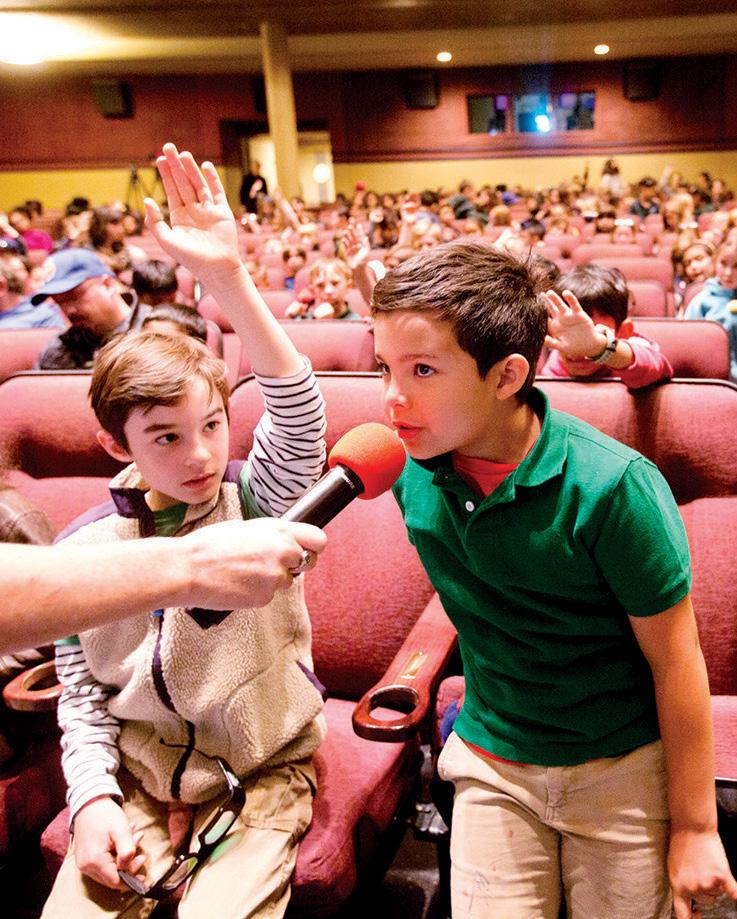

By Check:
California Film Institute
1001 Lootens Place, Ste. 220 San Rafael, 94901
*Donation Memo: The Giving List
By DAF or Stock Transfer:
Tax ID# 94-2498062
By Credit Card: cafilm.org/donate
Contact: Liana Bender
Chief Development O cer (707) 363-5403 LBender@cafilm.org
California Film Institute www.cafilm.org
1001 Lootens Place, Ste. 220 San Rafael, 94901 (415) 383-5256

Maty Thiane was a 14-year-old teenager from Senegal when she was uprooted from all she knew and loved and moved to the United States. Feeling isolated and struggling with the language barrier, Thiane found solace and understanding in the world of film. In April of 2023, she completed the California Film Institute’s My Place My Story Educational Program, a free five-day workshop where students create personal short films, supported by professionals. It was life-changing for Thiane.
Before making the film, Thiane says, “I felt so uncomfortable talking to people, and I’m a talkative person.” But after spending time in the nonprofit institute’s momentous program and making her film, Thiane found new purpose in her daily life. “Now, I have to keep my head up and be myself and stop being scared. I can spend a whole day seeing new people trying to help them and they give me confidence.”
The California Film Institute (CAFILM), based in San Rafael, was founded in 1978 to celebrate film as art and education. While California has recently made strides in upping the arts budget at public schools, nearly 90% of California schools fail to meet state-mandated
arts education requirements. “CAFILM Education fills that void,” says Chief Development O cer Liana Bender. “We are a catalyst for meaningful change and action within a traditional school curriculum, particularly when arts education has been declining the most in low-performing, low-income schools.”
CAFILM o ers wide-ranging core programs: From its year-round programming at the Christopher B. Smith Rafael Film Center and Sequoia Cinema, to its annual, world-renowned Mill Valley Film Festival and DocLands Documentary Film Festival, to its innovative CAFILM Education Program.
CAFILM’s Education Program, which reaches 15,000 students and teachers each year, o ers free programs ranging from teen health and wellness, environmental series, spanish language festivals, and documentary-based programs.
“Young people are consuming and creating media on a daily basis, and their voices should be shared more widely and taken more seriously,” says Bender. “CAFILM Education programs help students become more e ective and informed media consumers and creators, and more empathic global citizens.”

The California Film Institute Education programs are made possible by community support.
In order to meet its 2025 Education Budget, it needs to raise $310,000. Your donations will help fund our media instructors, provide buses for students to attend in-person screenings, and cover travel expenses for filmmakers participating in on-site school programs. Your support will make it possible for the next generation of media makers to understand the power of sharing their stories, learn to think critically about the world around them, and broaden their horizons through a myriad of story-creation opportunities.
“By supporting this program,” says Christine Fujiki, CAFILM’s development operations and communications manager, “you will be o ering thousands of moments where students are changed, where they have new understanding and new awareness, where they get to experience something that is completely fresh.”

Its mission is to show students in grades K-12 how important film is in teaching tolerance and empathy and broadening their understanding of the world around them.
For Maty Thiane, shooting her short film Before and After at CAFILM not only broadened her understanding of the world, but it broadened her life when she needed it most. Moving to the Unit-
ed States was “the hardest thing I have been through in my life,” says Thiane. Her filmmaking journey has inspired her to set up a club supporting newly arrived immigrant students in Marin County, so she can o er a place for them to feel safe and understood.
Across borders, prejudices, languages, and ages, the magic of film connects us all.
Christopher and Jeannie Smith
Vickie Soulier
Jennifer Coslett MacCready
Nancy P. and Richard K. Robbins Family Foundation
Daniel Kenyon and Michelle Marchetta Kenyon
Jim Boyce Trust and Kris Otis
Gruber Family Foundation
Mobley Family Fund
Maggie O’Donnell and Josh Floum
Jonathan and Deborah Parker
Gordon Radley
Christine A. Schantz
Michael and Susan Schwartz Fund
Henry O. Timnick
Kamala Geroux-Berry and David Berry
Ken and Jackie Broad Family Fund
Blaire and Benno Dorer Family Fund
KHR McNeely Family Fund
James Mochizuki of Friends Productions
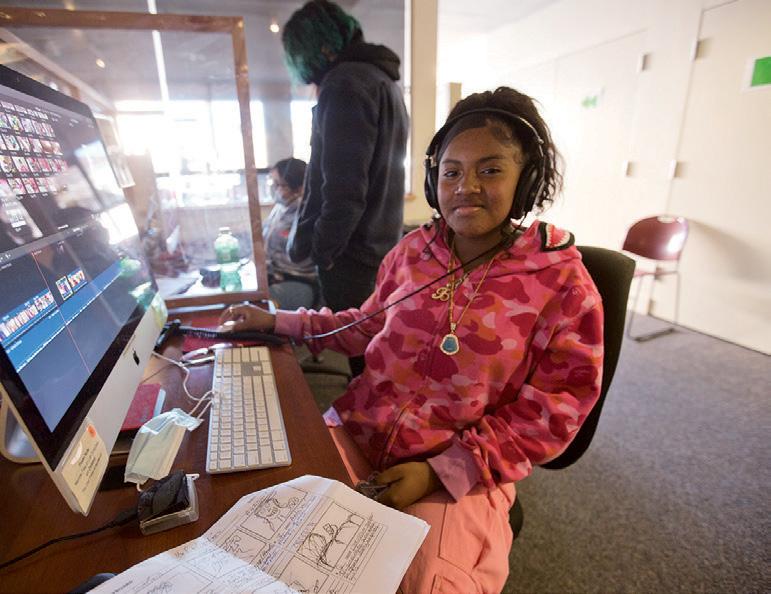
The in-person My Place program is designed to serve students who lack easy access to filmmaking instruction or resources and who are rarely given opportunities for their voices to be heard or their stories to be told. (photo by Tommy Lau)
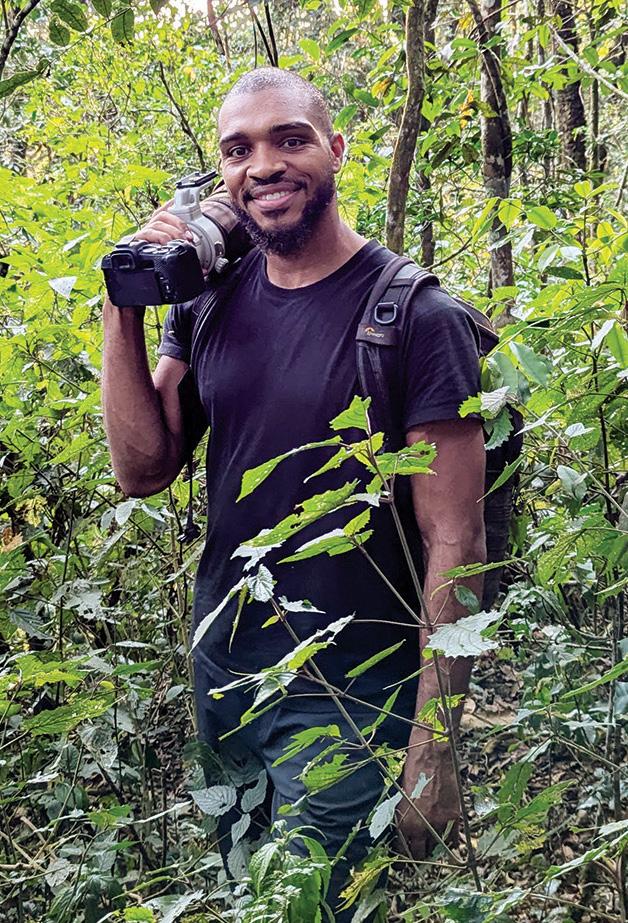
Mongabay’s Alejandro Prescott-Cornejo reporting on conservation in Rwanda.


By
Check:
Mongabay Org Corp
1259 El Camino Real #150 Menlo Park, CA 94027
*Donation Memo: The Giving List
By DAF or Stock Transfer: Tax ID# 45-3714703
By Credit Card: mongabay.com/donate

Rhett Ayers Butler describes himself as a lucky child. With collected airline miles from his father’s job and a travel agent for a mother, Butler had seen the wilds of Botswana, Ecuador, and Zimbabwe before he entered high school.
When he was 17, he crouched in a stream in the Malaysian rainforest of Sabah. Butler was wading through the water when he spotted a lone male orangutan, gliding through the trees above.
Butler savored his experiences in Malaysia, eager to return to the rainforest of Sabah. Several weeks after his trip, he learned that the rainforest was set to be cut down to feed a pulp plant. The animals lost their home.
Over the next decade, Butler grew the Mongabay website from a passion project to a leading news outlet for all issues at the intersection of people and nature. On a mission to inspire our communities to take action by providing in-depth coverage on topics most people would never have the chance to learn about, Mongabay has won many victories in the fields of conservation, education, and policy change.
1259 El Camino Real #150 Menlo Park, CA 94027 Contact: Dave Martin Director of Philanthropy (805) 402-3673 dave@mongabay.com
Mongabay mongabay.com
But his time in Sabah remained vivid in his mind. Butler vowed to create a resource about these precious ecosystems so more people would be informed about their importance. He wanted his resource to be educational, open to everyone, and full of pictures that showed the beauty and wonder he had been lucky enough to see firsthand.
And so the nonprofit Mongabay was born.
In 2009, Mongabay fought on behalf of Madagascar, using thoughtful, research-focused journalism to uncover the injustice of rosewood deforestation. As a hotspot for biodiversity, 80% of the species on Madagascar are seen nowhere else in the world – including a flower that has been used to cure pediatric leukemia. Despite being a priority for conservationists, a 2009 political crisis meant that the natural resources of Madagascar became vulnerable to trafficking. Illegal loggers began to tear down the rosewood forests, selling the timber to international furniture merchants. Wildlife and local people suffered.
Wedrove the elephant bird to extinction, nearly eradicated a tree with the potential to treat HIV, and now we watch as the Sumatran Rhino fades into history. Mongabay’s environmental journalism and education do more than inform – they change policy and, in doing so, save lives.
To bridge the gap between science and action, ecological data must be turned into actionable insights that drive changes in our policies, culture, and protection of the planet.
Two months ago, a groundbreaking satellite was launched, capable of assessing plant biodiversity from space. Yet despite these technological advances, much of the available ecological data remains unanalyzed and out of reach.
Mongabay is raising $10 million to launch the Mongabay Data Studio. With your generous support, Mongabay will train journalists to turn this critical data into actionable stories that can save ecosystems, species, and life-saving flora – before it’s too late.
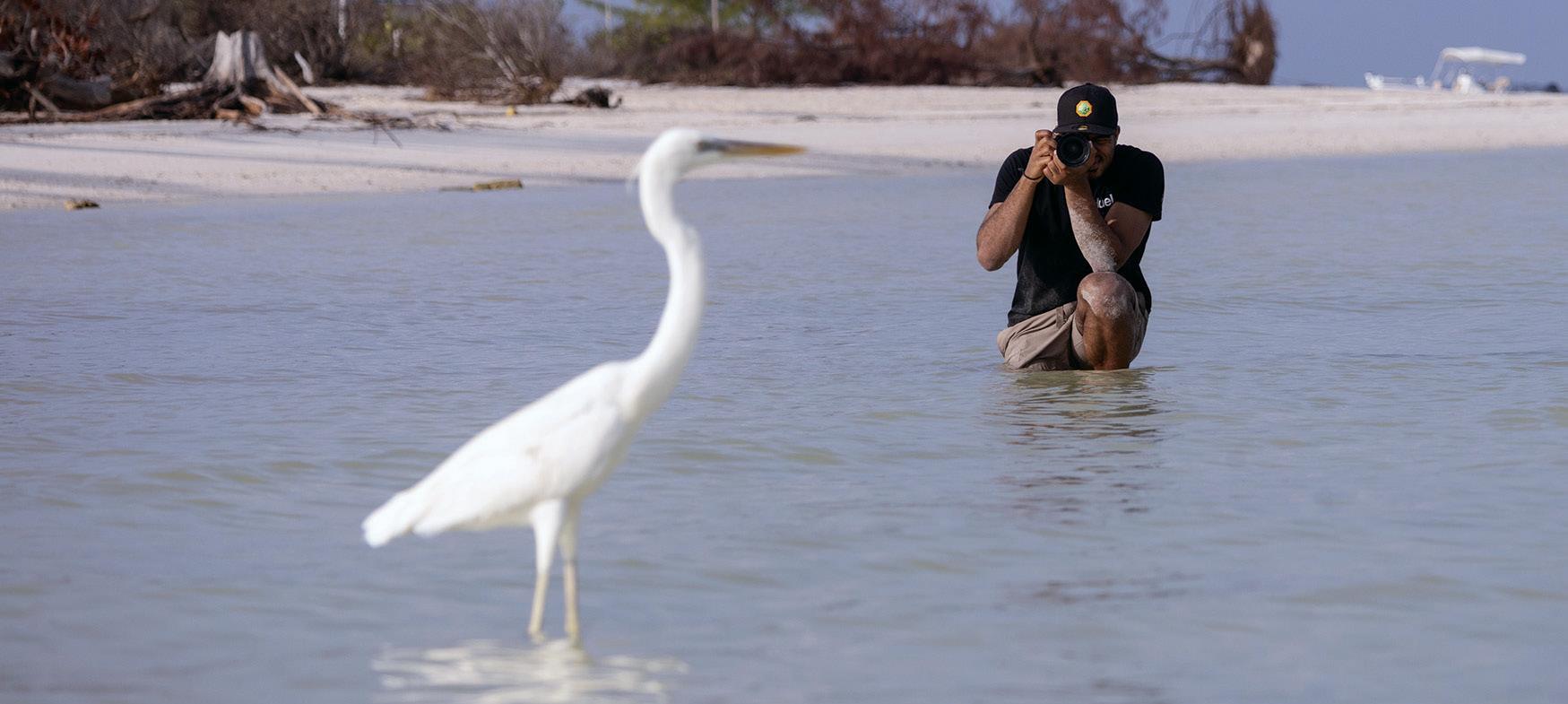
After Mongabay published an investigative report, the European shipping companies responsible for couriering the rosewood committed to stop carrying the timber. Subsequent pressure pushed Madagascar’s transitional government to place a ban on rosewood exports.
Today, Mongabay has multiplied their impact, growing roots in 30 countries, with more than 100 staff members and over 1,000 contributing
journalists around the world.
“A lack of information is one of the major problems we have in actually addressing these issues,” Butler explains. “It is easy to forget that change starts with one person, and it is easier than ever before for someone with an idea to spread it rapidly around the world. And that is the role of good journalism – to give people that spark to work together.”

“M ongabay has a global network of journalists who provide local observations and insights to advance understanding of environmental impacts on the ground. Through their storytelling, Mongabay journalists make complex concepts come alive, elevate the voices of local communities, and touch diverse audiences around the world. The stories are regularly picked up by conventional news outlets, expanding their reach and impact, and moving decision makers to action. We are thrilled to partner with Mongabay in our movement for a healthy climate.”
– Rod Womer & Barbara Karplus Founders of Woka Foundation
Acacia Conservation Fund
Arcus Foundation
Band Foundation
Children's Investment Fund Foundation
Climate and Land Use Alliance (CLUA)
Ford Foundation
Full Circle Foundation
Gordon and Betty Moore Foundation
Hans Wilsdorf Foundation
John F. Swift
Jon Ayers
Khanna Foundation
Laudes Foundation
MacArthur Foundation
Montpelier Foundation
Overbrook Foundation
Packard Foundation
Skoll Foundation
Tilia Fund
Walton Family Foundation


Looking after the well-being and health of our most vulnerable populations, from seniors to children, from those in local under-resourced neighborhoods to those in rural underdeveloped nations, these organizations put compassion and resources where they are desperately needed.
as told to Vicki Horwits

Nichole Pettway is a testament to the power of resilience and transformation. Once caught in the grip of addiction and incarceration, she has emerged as an accomplished scholar and a compassionate, dedicated advocate for those facing similar challenges. Today, Pettway serves as the program manager of social medicine at Zuckerberg San Francisco General Hospital and Trauma Center, where she connects patients with resources beyond their immediate medical needs.
Pettway’s journey from addiction to advocacy is marked by determination and a commitment to education. She earned her GED, followed by degrees from City College of San Francisco and University of Phoenix. She holds a clinical master’s degree as a marriage and family child therapist and recently qualified for a doctorate in humanities.
Driven by her experiences, Pettway founded the Building Bridges Foundation, which supports formerly incarcerated individuals in their reintegration into society. She is also a published author, having released her memoir Against All Odds: A Triumphant Journey from Addiction and Incarceration in June 2023.
Pettway’s work extends beyond her professional roles. She is a frequent speaker at recovery associations and reentry forums, sharing her story to inspire others and advocate for change in the criminal justice and addiction treatment systems.
Q: Can you share some of your remarkable history with us?
Nichole Pettway: I feel like I owe a lot of debt to San Francisco. I came here from Massachusetts in 1982, and by 1986, in this very hospital, I gave birth to my first child who was addicted to crack cocaine. I had never gone to high school and got caught up in the whirlwind of the crack epidemic. I was in and out of jails and institutions. I went to prison the first time in 1991 and
got out in 1993. I was out for maybe 30 days, enough time to get pregnant again with my third child, whom I gave birth to in Chowchilla State Prison.
When I got out, I vowed to do something different with my life and went into a treatment program. I did really great for a good period of time, but I got complacent in my recovery and relapsed in 2003, winding up back in prison in 2006. I didn’t have any education and had lost everything.
Ninety days into treatment, I decided to go back to school and get a GED. I was embraced by the atmosphere of education, like I was embraced by the atmosphere of recovery. I went to John Adams Community College, then to City College from 2009 to 2013. I transferred to University of Phoenix where I completed a bachelor’s degree in business management. I continued on and completed a clinical master’s degree as a marriage and family child therapist. This year, on June 1, I qualified for a doctorate degree in humanities.
Q: How does your history inform both what you
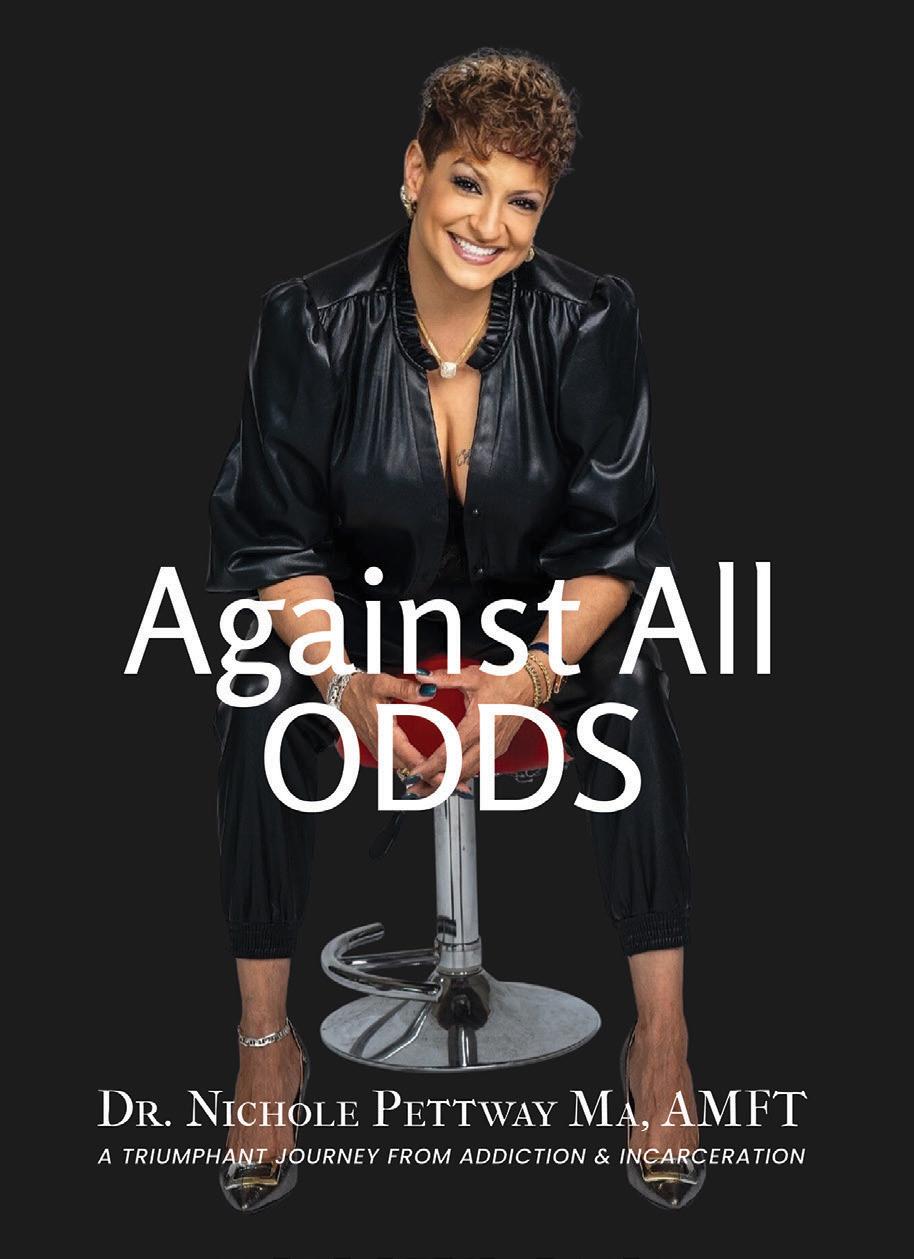


go, you’ve got $200 “gate money,” and what you know how to do would only lead you back to the same position that you’re in? And so I want to be that person that gives that information to someone who may feel alone and feel that they’ve burned so many bridges that there aren’t any bridges left to build. So I started Building Bridges Foundation.
Q: How can philanthropy be harnessed to help those who need a helping hand in finding their full potential?
A: It’s about creating community, creating a safe space, and creating an atmosphere that’s welcoming. There’s nothing that you could tell me that would make me look at you any differently than another human being reaching out for help. I have been there, I have done that, and I have participated in things I am not proud of. But what I do know is that those were character-building experiences for me.
When I started to learn from the blessings in the lessons, when I started to really see that this didn’t happen
by mistake – I am here as a testament of the resilience it takes for a person to succeed. But I can tell you that I didn’t do it alone. I know that I can do much more today, together with community, than I can do by myself.
Q: You’ve often quoted Mahatma Gandhi’s “Be the change you want to see in the world” as your mantra. How can the Bay Area follow suit and be the change?
A: It’s about leading by example, doing the next right thing for the next right reason, even when no one is looking, and developing personal integrity and an ethical standard for yourself. It shows in our community when we have a group of people that believe wholeheartedly that change is possible and know that it’s possible because they’ve changed themselves.
When you show self-love, it emanates, and other people want to be like you. There are so many people that lead by example in San Francisco, for me in my community. They say in Narcotics Anonymous, “The wider your base, the higher your sense of freedom.” Being around people who have been where you’ve been is powerful, but that’s not to say someone who hasn’t been where you’ve been couldn’t help you. It takes someone to start trusting the process for that to happen.
Q: What are the other most pressing social issues in San Francisco and the Bay Area?
A: Mental health is a significant issue. At one point in my life, I was more comfortable in a prison cell than I was on the street because the street was my prison. In prison, I went to bed at a certain time, got up in the morning, ate, brushed my teeth. When you’re on the streets, those skills aren’t practiced. Our lives get dwindled down to an animalistic level, and a lot of that has to do with mental health.
Substance use and homelessness are also major issues. There’s also a lot of women who are being trafficked, and young women getting caught up in selling drugs, holding packages or guns, taking cases. For me, it’s about self-esteem and self-worth, and how we embrace our communities and let them know that it’s okay to heal.
Q: Can you talk about how taking classes at the California Institute of Integral Studies affected your educational journey?
“Being there for another person who is in need, someone who just needs a ‘mustard seed of faith’ and someone to help water and nurture that seed – I think it’s my responsibility to help someone in that way.”

“If an African mom is saved, a whole home is saved…”
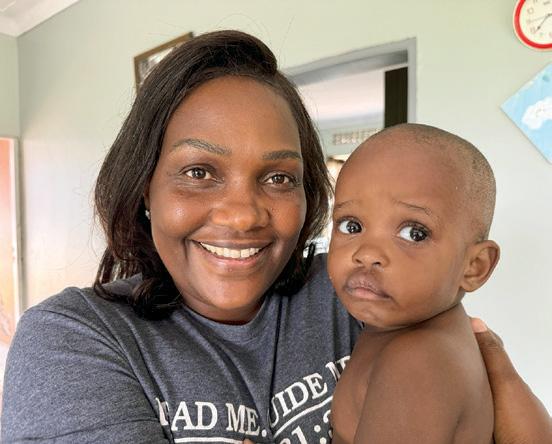
“Faith of a Child Foundation funded the construction of the Phoenix House in 2021. Our Baby Home needed a special place, where severely malnourished and sick babies can be monitored and cared for 24 hours every day. Over the past three years, the Phoenix House has enabled us to save the lives of more than 40 babies. Faith of a Child has been the answer to our prayers.”
– Damali Mirembe Director, Sonrise Baby Home
By Check: Faith of a Child Foundation
3235 Calle Bonita Santa Ynez, CA 93460
*Donation Memo: The Giving List
By Credit Card: faithofachildfoundation.org
Contact: Joe Madden Director, Faith of a Child Foundation (408) 335-4042 jmadden@faithofachildfoundation.org
Faith of a Child Foundation www.faithofachildfoundation.org
3235 Calle Bonita Santa Ynez, CA 93460 (408) 335-4042

Over the past 12 years, the Sonrise Baby Home has saved the lives of more than 450 malnourished, sick, and abandoned babies. One example is a six-year old spitfire named Gabi, who was found abandoned in a bush in 2019. She was several months old, but was so weak and skinny that she was unable to cry. Today, Gabi is a thriving young kindergarten student that runs fast enough to take the soccer ball away from the boys.
The Sonrise orphanage group in Uganda is an amazing story. Starting in 2012, three former orphans (who had been raised themselves by an American missionary) decided to launch three orphanage homes, to care for babies, children, and rescued ‘street girls.’ The need is overwhelming, with babies abandoned or starved when their mothers die in childbirth. This happens often, especially in the rural Kayunga District where as many as six of every thousand mothers die in childbirth.
Damali Mirembe, the human dynamo that leads the Sonrise Baby Home, decided to attack the root cause of the problem by building a well-equipped maternity and baby hospital. Mirembe has an excellent
track record: on her own she has built an organization that routinely saves the sickest children in the country and the Ugandan government will drive past the filthy government hospital to give the sickest cases to her.
The Sonrise organization is also unique in their approach: They aim for a self-sustaining model. Each orphanage home has its own farm to grow beans, corn, sweet potatoes, and raise goats, pigs, and cows. They fed themselves when funds dried up during the COVID pandemic. It’s a local Ugandan organization, led by the former Ugandan orphans, so they know what these children need to succeed.
Faith of a Child Foundation is a USA-based nonprofit organization that has latched onto Sonrise to


of a Child Foundation is seeking specific funding for the building of the maternity/ neonatal hospital in Uganda.
“Right now we have the foundation and ground floor built, and we’ve started the water well,” Director Joe Madden says. “My hope is that we raise $250,000 by year’s end. That would pay for the walls, and the second and third story superstructure. Let me also add that an anonymous donor has agreed to match the first $100,000 we receive, dollar for dollar, to help pay for the roof. In this way we could get the whole structure built by February.”

provide the money for major projects. Director Joe Madden comments that “By working directly with the construction team in Uganda, we can verify that every penny we send goes directly into bricks, concrete, or other building materials at the site. This is so refreshing compared with working with large NGOs that siphon away money for overhead costs and salaries. The Foundation’s role is simply to raise the money and audit its spending… we rely on our local partners at Sonrise to make decisions about what is best for these mothers and babies. We don’t want to be the arrogant Americans
that go over there and tell them what services to provide or what support an African orphan needs.”
“Uganda has good universities that train doctors and nurses fairly well, but the government hospitals have very poor facilities and no gloves, no bandages, and dirty conditions,” continues Madden. “Our aim is to kickstart this hospital and based on the local statistics, we believe that we can save multiple lives every week.”
Hospital construction has already begun, and with the current fundraising campaign the building will hopefully be constructed by February 2025.
• 24% of teenage girls become pregnant in Uganda. • 6 mothers die for every 1,000 births.
• 29 babies die for every 1,000 births.
• The nearest highquality hospital is 126 km away.

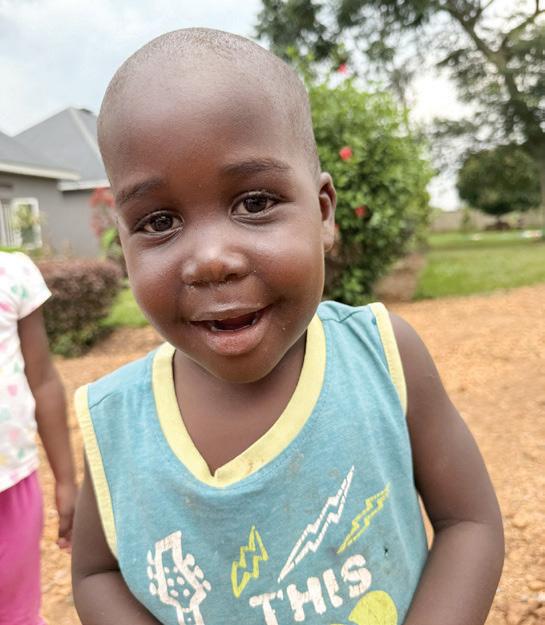
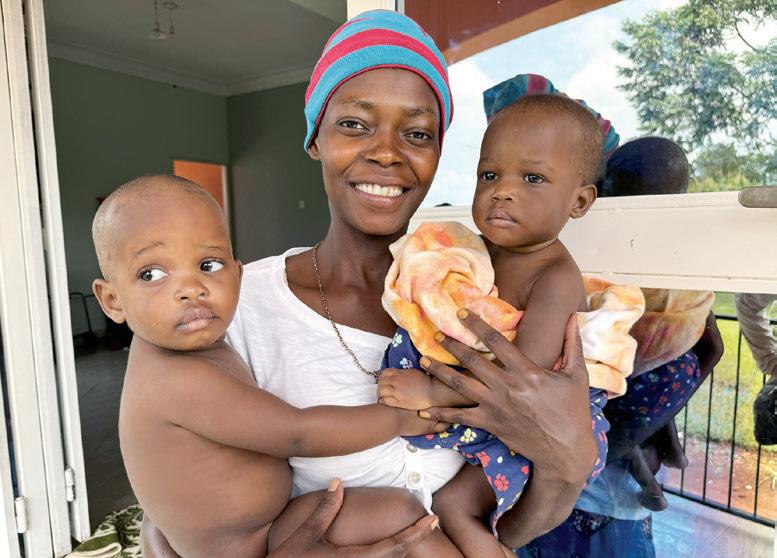

“P
VI is an extraordinary organization that I am honored to serve and support. Aging can be so challenging with declining health and memory and nutrition issues. PVI empowers seniors and their families with essential programs and activities that enhance their daily lives and independence. Leadership, sta , and volunteers are outstanding, with enormous hearts and dedication to positively impacting the way seniors are cared for today and in the years ahead.”
– Susan Martin
CFO Harvard Investment Company, PVI Board Member, and Fall Event Chair
By Check:
Peninsula Volunteers, Inc.
800 Middle Avenue Menlo Park, CA 94025
*Donation Memo: The Giving List
By DAF or Stock Transfer: Tax ID# 94-1294939
By Credit Card: www.1pvi.org/donate

Peninsula Volunteers, Inc. (PVI) was founded over 76 years ago in Menlo Park by a group of forwardthinking women in the old-fashioned spirit of giving back to the community. The members quickly recognized an urgent need for their help: seniors. PVI is redefining what it means to be a senior in society. They are empowering this longignored segment of the community through care and connection and are helping them stay vibrant by enabling seniors to age in place in the S.F. Peninsula and Silicon Valley area.
United States. San Mateo County declared loneliness a public health crisis in January 2024, and PVI is working with Supervisor David Canepa who is now championing this critical issue.
In 1949, PVI launched Little House, the first suburban senior center in the United States. It became the paragon for senior centers that followed. In the 70s, they opened Rosener House, an award-winning facility, for seniors with cognitive issues like Alzheimer’s and dementia, again paving the way for dealing progressively with senior health issues that otherwise were not being openly discussed.
Rebecca Matteson Nelson Director of Development (650) 272 5002 rnelson@1pvi.org
Peninsula Volunteers, Inc. www.1pvi.org
800 Middle Avenue
Menlo Park, CA 94025 Contact:
According to Peter Olson, PVI’s long time CEO/Executive Director, “Seniors live longer, happier and more fulfilled lives when they are able to stay in their own homes. Access to our life-affirming programs and services make this possible.” PVI is creating a future where local seniors can age in place surrounded by the support and care services they need to thrive— without the negative health impacts of daily hunger, loneliness, and isolation.
To help spotlight the urgency of the ongoing crisis facing seniors, the U. S. Attorney General identified loneliness as an epidemic in the
The thrust of the organization’s work remains helping seniors to stay healthy and retain as much independence and social connection as possible through its core o erings. Addressing growing nutrition and food security needs among seniors and adults, PVI’s Nutrition Services/Meals on Wheels program delivers freshly prepared meals from their commercial kitchen to homebound seniors and adults with disabilities. Their “Got Groceries?” program has provided over 50,000 pounds of healthy protein, produce, dairy and staples in
• $500 – Funds one month of Peninsula Volunteers, Inc.’s (PVI) nutritious Meals on Wheels for two at-risk older adults.
• $700 – Funds one week of Adult Day Services for Alzheimer’s at Rosener House.
• $1,200 – Funds a full year premium membership at PVI’s Adult Activity Center at Little House.
• $2500 – Funds a new iPad and training for a senior to access the internet and help prevent social isolation.
weekly bags of nourishing food to more than 500 families monthly, helping with financial shortfalls and the impossible choices of how to pay for essential needs. Their easy access RIDE PVI program helps preserve independence by providing non-driving older adults with on-demand transportation services.
Their Rosalyn G. Morris Adult Activity Center at Little House and Adult Day Services program at Rosener House provide stimulating and supportive environments for the aging members of the Bay Area Peninsula to thrive. And PVI helps battle another major problem in the senior population: social isolation. “I cannot tell you how many people have said ‘this organization has saved my life,’” Olson emphasizes.
PVI has also launched Quiescence-
, a concierge service for family caregivers to create a nurturing framework to support this frequently overwhelming e ort. PVI provides a dedicated “executive assistant,” to ensure that all necessary medicine, appointments and related needs are taken care of.
Today, PVI serves over 6,000 households annually with their core programs in the San Francisco Peninsula and Silicon Valley area, impacting over 400,000 families.
PVI’s goal remains unwavering –provide seniors with loving, supportive, compassionate care options giving them the opportunity to thrive and retain their dignity and independence in their own homes.
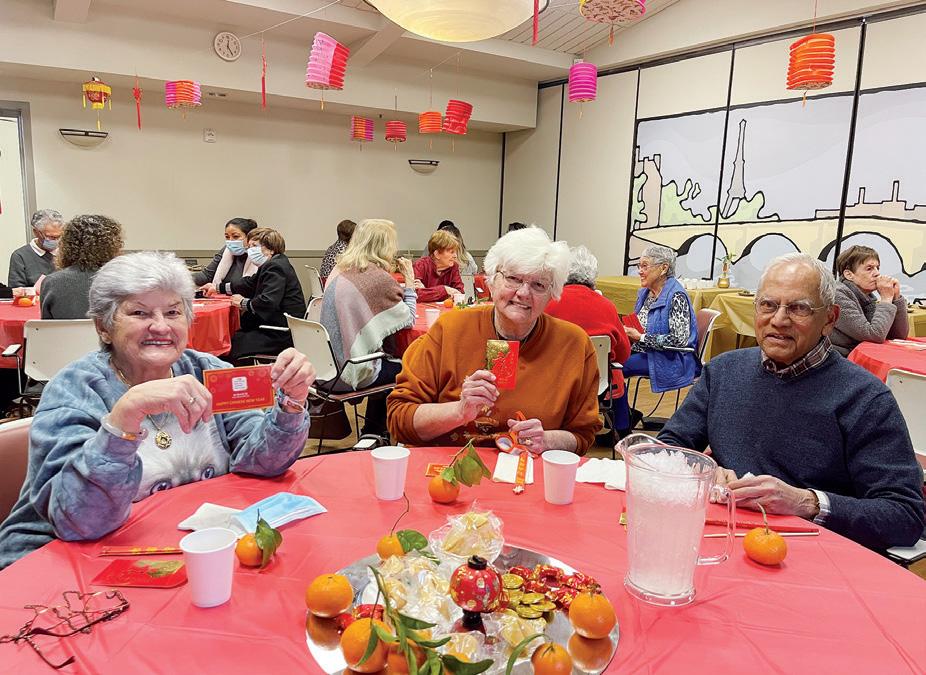


Ann Gri ths
Anne Melbye
Barbara and Arnold Silverman
Carolyn and Preston Butcher
Chan- Zuckerberg Initiative
Dick Levy
Dignity Health
George Weikart Trust
Howard and Betty White Foundation
Hurlbut-Johnson Charitable Trusts
Jeanne and Frank Fischer
Kaiser Permanente
Marylue Timpson
Meta Platforms, Inc.
NTT Global Networks
NTTVC Regalis Networks
Peninsula Healthcare District
Sequoia Healthcare District
Silicon Valley
Community Foundation
Susan Martin
Sutter Health/Palo Alto
Medical Foundation
The Gidaro Family
The Kerfu e Foundation
The Morris Family
Troper-Wojcicki Foundation
Woodlawn Foundation
Coming together for the Lunar New Year celebration at PVI’s Senior Activity Center, which is one of many opportunities for the senior community to engage with others, overcome loneliness, and enjoy fresh, nutritious food and entertainment. “I’m grateful to be with friends and not at home alone anymore.”




“T
hank you for working hard and striving on my behalf. I am able to work now and I have learned a lot. If I could do more to express my gratitude, I would. Thank you... You carried my worries like they were yours without complaining and helped me to get where I am. My asylum case has been approved. Thank you, thank you, thank you!”
– Violeta* Client from Nicaragua
By Check:
Partnerships for Trauma Recovery
2526 Martin Luther King Jr. Way Berkeley, CA 94704
*Donation Memo: PTR: The Giving List
By DAF or Stock Transfer:
Tax ID# 47-3948973
By Credit Card: traumapartners.org/donate
Contact: Gianina Pellegrini, Ph.D. Executive Director (510) 230-7474 gpellegrini@traumapartners.org
Partnerships for Trauma Recovery traumapartners.org
2526 Martin Luther King Jr. Way Berkeley, CA 94704 (510) 467-0520

Bembe* – a 32-year-old father and husband – experienced severe physical and emotional violence in Guatemala because he is Maya Mam, an indigenous population facing extreme oppression in Guatemala. When the harm Bembe and his family experienced escalated to torture, they were forced to flee Guatemala to seek safety. After enduring a treacherous journey by foot and train to the United States, they applied for asylum in the Bay Area.
Bembe carried fear, PTSD, depression, and physical injuries, making life close to impossible. Though he spoke little Spanish and no English, Bembe found his way to Partnerships for Trauma Recovery (PTR), where he began a road to recovery with therapy, case management, and an interpreter in his native language, Mam. Though therapy was unfamiliar in his culture, he worked closely with PTR’s therapist, case manager, and interpreter to address his trauma. Case management included finding a job for Bembe, stable housing and medical care for his family, and navigating his child’s school system. Over time, Bembe’s physical and mental health improved, and like hundreds of PTR’s clients, he has rebuilt his life in
the Bay Area and is now thriving. PTR’s intervention helped transform Bembe’s story of trauma, fear, and pain into one of strength, resilience, and hope.
Since opening in 2015, PTR has touched the lives of hundreds of survivors of torture like Bembe. PTR’s clients have come from over 60 countries, including Afghanistan, Syria, Eritrea, and Mexico, and approximately 80% have survived torture. Over 60% of clients are women, many facing gender-based violence, and approximately 20% are LGBTQ+ fleeing identity-based persecution. Overall, refugee rates of PTSD are 10 times higher than the general population. PTR understands that recovering from the deep emotional wounds of human rights abuses is challenging but possible. They are dedicated to healing the psychological and psychosocial impacts of trauma among international survivors of human rights abuses, torture, and other forms of interpersonal violence.
What makes PTR unique is that clients like Bembe, benefit from a comprehensive range of trauma recovery services. These include individual therapy, group counseling, case management, and community outreach, all supported
Trauma recovery is possible. $50,000 provides 10 survivors of torture culturally reflective, traumainformed, and linguistically accessible mental health care and case management essential for healing. By improving well-being, the ability to engage in daily activities, and a sense of safety, holistic treatment leads to thriving.
A torture survivor from the Middle East expressed, “[PTR is] a center that allows doubt and suffering that you have internally to go away, and helps you fit into society. Without their support, I don’t know if I would be here now . . . It helped me survive. It’s given me a second life, and the opportunity to be alive.”
by interpreters to ensure clients receive assistance in their native languages. PTR has offered services in over 24 languages. In 2023, 72% of sessions were conducted in a language other than English.
In addition, PTR’s approach is culturally aware and trauma-informed, ensuring each client receives care that honors their background and unique experiences. Individually tailored interventions that are relevant to cultural and community contexts enable people to finally speak about what was previously unspeakable, directly address their emotional and physical symptoms of depression, anxiety, and PTSD, and acquire skills to manage and reduce
their distress. A full 81% of clients receiving therapy at PTR reported reduced PTSD, depression, and/or anxiety. After receiving care from PTR, one survivor of torture said: “Before I had therapy my soul and my life was in a place where I couldn’t see anything. Now my soul is in a place that I can see and do anything. I found the person I was always supposed to be.”
PTR envisions a world in which mental health and freedom from violence are policy and program priorities. Until this becomes a reality, PTR is the safety net to help trauma survivors seeking asylum on our shores recover and thrive.


PTR’s Ethiopian and Eritrean clients continue the custom of holding Habesha coffee ceremonies, demonstrating their connection to their homeland and traditions. Neighbors, friends, and family are welcomed to share in this traditional practice that symbolizes hospitality, friendship, and community.


Annika Sridharan (Co-Founder)
Monika Parikh (Co-Founder)
Akawak Ejigu (Board Member)
Alexander Cook (Board Member)
Ana Gamez (Board Member)
Catherine Chen (Board Chair)
Gauri Bhardwaj (Board Treasurer)
Hillary Pollaro (Board Co-Chair)
Joseph Asunka (Board Member)
As survivors of international human rights abuses, PTR’s clients have endured unspeakable harms forcing them to flee their countries. The path to safety is not linear. Most of their clients travel vast distances and are subjected to additional abuse and traumas before arriving in the San Francisco Bay Area.
* Name and details changed to protect privacy.
Julianne Orr (Board Secretary)
Stephanie Wu (Board Member)
Kaiser Foundation
Marin Community Foundation
Mehretu Commission Studio
Monardella Fund
O.P. Decker Foundation
Sills Family Foundation
Zellerbach Family Foundation
Alameda County Behavioral Health
California Department of Health Care Services
California Victim
Compensation Board
Office of Refugee Resettlement
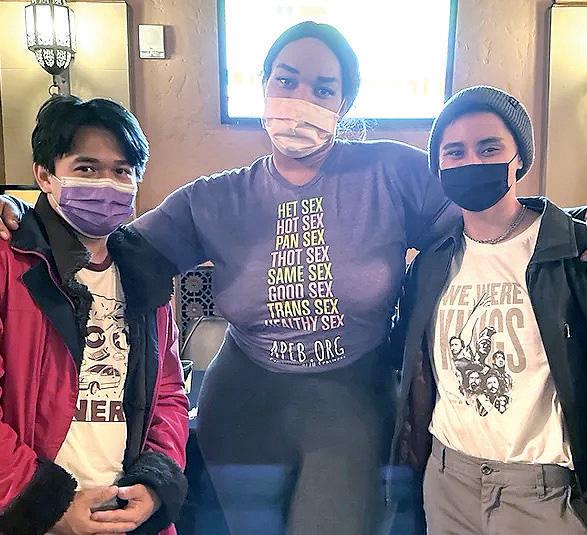
“AIDS Project of the East Bay was delightful to work with. Through the help of their experienced health practitioners, they have provided quality services ranging from extensive HIV prevention and education, information and tests for safer STD testing, to providing flu shots, COVID-19 and Monkey-pox vaccines, and even treatment for Hepatitis C, infections, and those of the likes.”
– David Fruedenberg Safer STD Testing
By Check:
AIDS Project of the East Bay
500 12th Street Ste. 123 Oakland, CA 94607
*Donation Memo:
APEB: The Giving List
By DAF or Stock Transfer:
Tax ID# 94-3061583
By Credit Card: apeb.org/donate
Contact: George Jackson Executive Director (510) 904-5979
Gjackson@apeb.org
AIDS Project of the East Bay
500 12th Street, Ste. 123 Oakland, A 94607
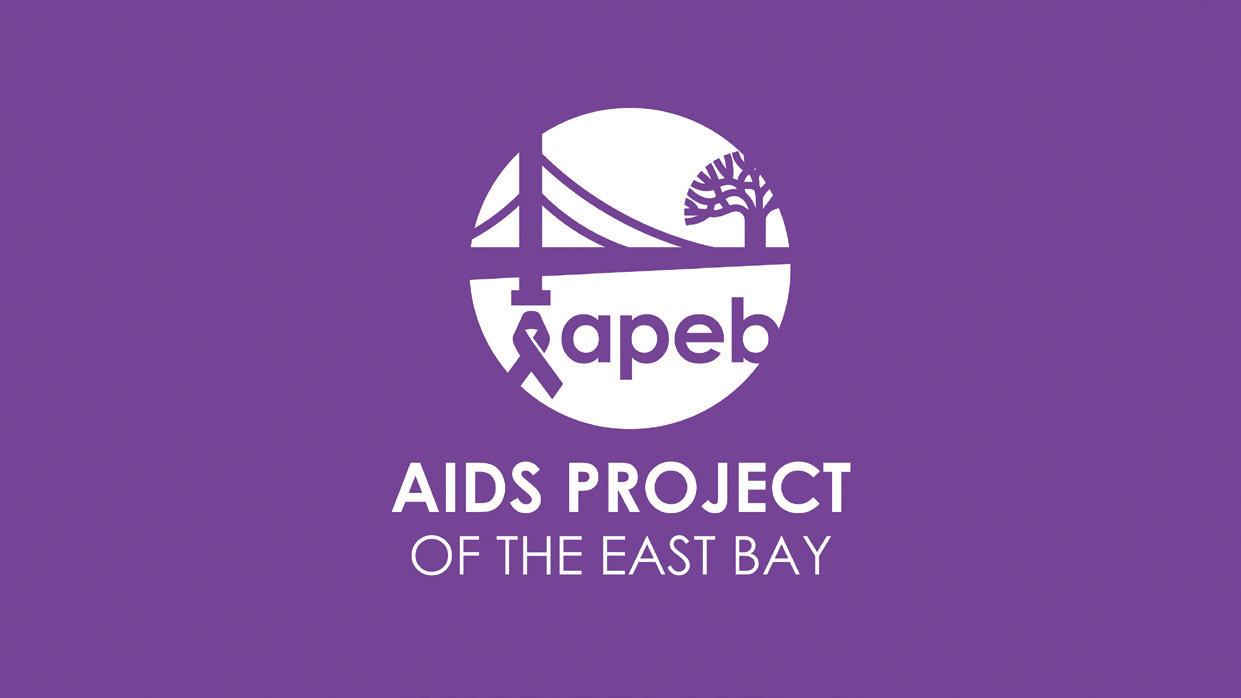
Growing up as a gay, Black man in Oakland, George Jackson has strong ties to the community he serves. The road that took him to his current role as executive director of the AIDS Project of the East Bay (APEB) goes back to losing his favorite uncle to AIDS when he was only eight years old. “He was special to me,” says Jackson, “He protected me from bullies; he was always in my corner.” His uncle’s death gave him an emotional connection to the virus – and the people affected by it – and that keeps him working to help people get the care they need.

“We don’t turn people away,” Jackson says. “We offer a very safe space that is welcoming to all.”
“Safe space” is a phrase that gets used in several ways, but for people affected by HIV, having a trusted, reliable safe space to turn to is an invaluable lifeline for their health and peace of mind. As the oldest existing AIDS-related service organization in Alameda County, the AIDS Project of the East Bay has been guiding people in need of help for decades by providing a wide range of critical health and social services.
“It’s one-stop shopping for people with HIV,” says Jackson. The agency provides free HIV testing, other health screenings, harm reduction care, primary care, sexual health care, “trickedout” mobile clinics, food donations, and clothing donations.
Additionally, APEB provides housing assistance. Living with HIV comes with its own share of expenses that can often affect one’s ability to pay the rent, especially for lowincome earners. In the increasingly expensive Bay Area housing market, providing rental assistance helps to reduce the number of people who find themselves forced to make
AIDS Project of the East Bay (APEB) began a new chapter this year after moving into their new office in downtown Oakland. The health and social services they provide are integral to those who rely on them, so much so that APEB’s goals for the future equate simply to a sustainable continuation of their operation.
APEB hopes to expand their services to people experiencing both HIV and homelessness, a combination that’s both harrowing and comes with a conflation of complications.
All funds raised for APEB will provide the continued support for Bay Area residents dealing with positive HIV diagnoses so they can live normal, productive, and yes, healthy lives.
the choice between getting proper medical care or having a place to live.
Beyond providing tangible goods, housing assistance, and medical services, the APEB office is home to a place called “The Den,” a warm inviting hub used to foster community and host support groups. It also acts as a community resource center where people can use computers to look for jobs and update their resumes, or just have a second home to go to.
And for whatever’s left that APEB can’t provide, “We point them in the right direction,” Jackson says.
While APEB offers their services for all people, they are an especially trusted resource for gay men, Black, Latinx,
and trans communities. One of the challenges these communities face is a medical mistrust of mainstream health providers. But leaders and staff at APEB are regarded as guardians of their best interests.
APEB has also established itself as a prefered alternative health care center for heterosexual men dealing with the stigma of being HIV positive. “HIV doesn’t have to be a death sentence,” Jackson says. “But some people are so paralyzed by the stigma that they die because they refuse to get treatment.”
AIDS Project of the East Bay is there to offer help, treatment, a range of care, and limitless compassion for all who step through their doors.

The rate of new HIV diagnoses per 100,000 among Black adults/adolescents (41.6) was about 8 times that of white people (5.3) and twice that of Latinos (23.4) in 2023. The rate for Black men (66.3) was the highest of any race/ethnicity and gender, followed by Latino men (40.8), the second highest group. Black women (19.2) had the highest rate among women. This is why it is implicit that we make intentional efforts to keep organizations like APEB in existence.

“The John Muir Community Health Fund is so proud to support the work of the Contra Costa Crisis Center and their Contra Costa Services Network (CCSN) Pilot Program. The Crisis Center is innovative, responsive, highly collaborative, and a leader in their field. Supporting the CCSN ensures that providers and community members receive improved access to resources and data — all which can be transformational to health outcomes within the county.”


– Jelissa Parham MPH (she/her/hers), Executive
Director
By Check:
Contra Costa Crisis Center
P.O. Box 3364
Walnut Creek, CA 94598
*Donation Memo: The Giving List
By DAF or Stock Transfer:
Tax ID# 94-1747227
By Credit Card: www.crisis-center.org/donate
Contact: Elaine Cortez Schroth Executive Director (925) 939-1916 elainecs@crisis-center.org
Contra Costa Crisis Center www.crisis-center.org
P.O. Box 3364
Walnut Creek, CA 94598 (925) 939-1916


At 2 am, the phone rings at the Contra Costa Crisis Center. A 15-year-old boy, voice trembling, reaches out. He has lost his father, his mother is struggling, and he feels utterly alone. On the other end, a compassionate voice answers within 20 seconds, offering not just a listening ear but a lifeline.
Stories like this unfold every day, all day, at the Contra Costa Crisis Center, a ray of hope, serving the community since 1963. For 61 years, the center has been a vital resource, providing free, 24/7 support to anyone in need through their 988 Suicide & Crisis Lifeline and 211 Information and Referral Line. With a dedicated team of 40 sta supervising highly trained volunteers, they handle over 72,000 emotional, heart-wrenching calls annually – a number that continues to rise as more people learn about the help available.
But the Crisis Center is much more than a suicide prevention hotline. It’s a multifaceted support system addressing a community’s wide range of needs during their most desperate times – from mental health support to grief counseling and disaster response, to housing and rental assistance to food insecurity.
“Our main pillars are the crisis lines, the information and referral line, grief support, and outreach,” explains Elaine Schroth, the center’s executive director. “But we’re not just here for those in immediate crisis; we’re here to assist with the everyday challenges that can feel overwhelming.”
The 211 Information and Referral Line is a critical component of this mission. Staffed by trained professionals and volunteers, the line connects callers to a vast database of 800 agencies offering 1,900 programs and services.
TheContra Costa Crisis Center is seeking $500,000 to upgrade essential 211 Information and Referral Line technology and expand crucial crisis services by hiring six additional sta members. This funding will directly impact the Center’s ability to respond quickly and e ectively to every call, text, and chat – saving lives and providing critical support to those in need.
Your generous donations ensure that when someone reaches out in their darkest hour, a compassionate voice will always be there to answer.
Whether someone needs a warm bed for the night, help with utility bills, or access to mental health services, the 211 line is a lifeline to vital resources.
“We’re not Google. We’re real people taking these calls,” says Schroth. “We’re here to listen, to understand, and to provide immediate assistance.”
The demand for these services has never been higher. Economic pressures, the lingering effects of the pandemic, and the daily stresses of life have led to a surge in calls. The introduction of the national 988 Suicide & Crisis Lifeline two years ago has further increased the volume, with calls and texts doubling in the past year.
“People are reaching out more than ever, and that’s a good thing,” notes Schroth. “It means they’re finding us, which means they’re getting help.”
However, this increased demand
has strained the center’s resources. The 211 line, in particular, is underfunded despite being a crucial resource for the community. Many people are unaware that crises don’t keep business hours, and the need for support extends beyond the typical 9-to-5. “We’re 24/7 because people need us to be,” Schroth emphasizes.
To meet the growing needs, the Contra Costa Crisis Center aims to expand its specialized counseling services (like grief counseling and disaster response) as well as add new programs and specialists in areas such as transportation.
It’s an understatement to say that the Crisis Center saves lives all day, every day. But the unsolicited text they received months after helping that 15-year-old boy, speaks volumes: “I just want you to know I’m alive and I’m doing really well. Ty for saving lives.”

Unhoused adults arrive at Trinity Center with hope restored by the compassionate team at Contra Costa Crisis Center, finding meals, clean clothes, and case management. These services guide them toward recovery, housing, and employment. By supporting CCCC, you provide vital, life-changing resources.
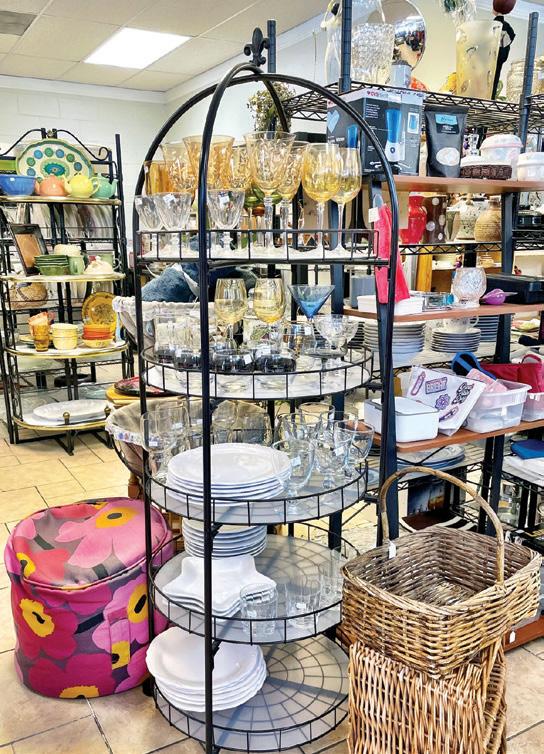
Founded in 1976 by three community-minded women, Leftovers Thrift Shop has supported the Contra Costa Crisis Center because of its life-saving mission. "We continue to donate because their work supports lives. We urge Bay Area donors to join us in sustaining this vital community resource."








United Way Bay Area
John Muir Community Health Fund
Dean & Margaret Lesher Foundation
Kaiser Permanente
Harry L. and Helen M. Rust
Charitable Foundation
Matthew Perry Foundation
WPW Foundation
Fred Finch Youth & Family Services
San Ramon Valley
Fire Protection District
Leftovers Thrift Shop
Frances McNamee
Robert and Valerie Fulton
Mary Ellen Browning
Memorial Trust Fund
Robert K and Patricia A Dahl Foundation
Twanda Foundation
William Knapp
Donna and John Warnken-Brill
Andrew and Linda Del Matto
Catherine De Martini
Bonnie Glatzer
Barbara and Anthony Sandoval
Mark Dossa


Young people’s minds are plastic; they live in the throes of “developing” every day.
In this tender development, the organizations highlighted in this chapter are all doing their part to ensure the generation coming of age has the tools it needs to be better than the last.
Upon arriving in San Francisco from Texas, by way of New York City, local philanthropist, entrepreneur, and community leader Pam Baer lovingly credits her own family upbringing and “The Matriarchs of San Francisco” for mentoring her in the ways of Bay Area philanthropy. But in many ways Baer’s commitment to lifting up San Francisco is deeply personal.
Born and raised in Texas, Baer moved to New York City after college, where she built a successful strategic marketing business. After marrying Larry Baer, longtime San Francisco resident and president and CEO of the San Francisco Giants, Baer relocated to the Bay Area. After giving birth to her four children, Baer eventually redirected her entrepreneurial spirit towards philanthropy and community service which was catalyzed by a serious accident suffered by one of her sons, leading to treatment at San Francisco General Hospital. Baer credits this traumatic event for opening her eyes to the importance of public health and for inspiring her to become intimately involved with San Francisco General. Having served on its board for 25 years and becoming a lifetime director, Baer has created and spearheaded many awareness and fundraising campaigns including the “Hearts in San Francisco” project, a public art initiative that raised awareness and funds for the hospital while showcasing local artists and promoting trauma care.
But Baer’s work extends beyond healthcare to address broader community issues, with a particular focus on mental health, a journey that led to her involvement with the Kennedy Forum, working to improve mental health parity in insurance coverage. Through her various initiatives and partnerships, Baer continues to make significant contributions to San Francisco’s philanthropic landscape, emphasizing collaboration, community engagement, and strategic alliances.
Q: Can you tell us about your journey that brought you from your childhood in Texas to becoming a beacon of San Francisco philanthropy?
Pam Baer: I grew up in Texas in a large family of six kids. We all made our way through sports or academics. I studied business at the University of Texas and then wanted to go to New York to work. In New York I started in financial services, but I had this entrepreneurial spirit that lived within me. Against the advice of family and friends, who thought I should work for a large company, I decided to start my own business.
It began with one large banking client, and it snowballed into a lot of strategic marketing, brand, and specifically direct mail work. I expanded into fashion magazine work and music industry clients. It was challenging at times to be single and starting a business in New York, but it was fun and eye-opening.
I continued with my business until I met my husband, Larry, in New York. After we got married in Fort Worth, Texas, we lived in New York for a couple of years before moving to San Francisco. Initially, I kept my New York business, but after having my children, it became harder to manage with the travel. This was all pre-Zoom, of course. I often tell people now how Zoom has allowed young women to do so much more from home.
I ended up selling my business, and we raised our four children in San Francisco. In this new chapter of my life, I was mentored by some amazing women I call “The Matriarchs of San Francisco” – women like Roselyne “Cissie” Swig, Rhoda Goldman, and Doris Fisher. They encouraged me to get involved in various committees and initiatives. With my marketing background, I found I could do a lot of good.
I chose to focus on raising my children and being part of my husband’s life at the ballpark while also

We wanted to show the community that it’s not just about the art, but what goes behind all the heroes at the hospital – the doctors and the nurses.
It wasn’t easy in the beginning. We had to get 135 permits for public art and work with the City of San Francisco. But in the end, it showcased San Francisco internationally. We had celebrities like Robin Williams personally involved. He and his wife, Marsha, even bought some of the hearts. Robin took his bicycle when we did a public viewing and biked through all the hearts, saying, “Yes, San Francisco is more than just this public art, but it’s surrounding us with the medical care at this hospital.”
The project was about more than just public art; it was about raising awareness about public health. Until the pandemic hit, there were people who would say to me, “Oh, now I understand why you put so many years into public health, because of how important it is for everyone.”
Years later, we created smaller versions of the hearts, and it continues to raise public awareness about the hospital, the staff, the nurses, and it just makes people happy as well. It’s been an ongoing project that continues to bring joy and awareness to the community.
Q: Do you think there is a need for greater coordination between philanthropy, the private sector, and government to meet the most urgent needs of your community?
A: Definitely. It takes a village. It’s often difficult to work through city and state politics to get things done. But it takes passion and focus to really move the needle forward on a lot of social good. That’s why I feel like in a way, this Hearts project wouldn’t have happened in a huge, big city. San Francisco is more like a town, where we were able to put hearts in parks and on rooftops. Everyone got involved – we never had anyone turn us down for sponsorship or artist participation. There were law firms that had to get cranes to put hearts on their rooftops. It was so exciting. The only thing we didn’t have enough of was time. We could have probably had 200 hearts, but we had to move forward with what we had. It was almost overwhelming how many people wanted to help. This project really demonstrated the power of collaboration. It takes strategic partnerships and coordination between different sectors – philanthropy, private busi-
nesses, and government – to create meaningful change. We need this kind of collaboration to address the complex issues facing our communities today.
Q: San Francisco, like many major cities, faces numerous challenges, especially post-COVID. What do you see as the most pressing issue facing San Francisco now?
A: Mental health. I think we’re in a mental health pandemic at the moment. We need to address what’s happened with children today – they missed school, they missed the social part. It trickles down from top to bottom and bottom to top.
We’ve got to get to the crux of mental health because we can give people housing, but if they can’t figure out how to take their medicines, how to turn on the lights, and how to feed themselves, all of that shelter goes away. We’ve got to help. And we’re getting better.
I’m part of the Kennedy Forum on parity. We’re working to ensure that insurance companies will cover mental health services just like they cover diabetes or cancer screenings. Pretty soon, mental health is going to be aligned just like you’re going to check for diabetes or cancer. You’re going to be able to get all the services related to mental health and not be denied.
I helped create and chair a mental health fund at San Francisco General Hospital before the pandemic because I lost a nephew to suicide seven years ago. This is when I thought, boot straps on, make some noise and have a voice! We all need to make lemonade from lemons when communities struggle. How can I use my platform to raise more awareness and create and build stronger partnerships to help with the solutions? It’s a complex social situation, and we need to approach it from multiple angles as many families are affected.
Q: Your work touches so many areas of need and the work of many nonprofits. What advice would you give to nonprofit leaders who are trying to get on the radar of philanthropists and foundations for funding?
A: My advice would be to collaborate more with those that you think are doing similar things to you. Be at the same table to move the needle further on social good. Collaborate, put your egos aside because it’s gotten too confusing for many philanthropists to make decisions. Pretty soon, mental health is going to
“It takes strategic partnerships and coordination between different sectors – philanthropy, private businesses, and government – to create meaningful change. We need this kind of collaboration to address the complex issues facing our communities today.”
be detected with interventions and optimization for well-being and integrated care.
As a philanthropist, I would really value seeing an effort coming to me that was in partnership with
Q: Looking ahead, what do you see as the future of philanthropy, particularly in San Francisco?
A: I think we’re going to see a continued emphasis on collaboration and strategic partnerships. The chal-


“Not only has the Brotherhood of Elders Network shaped me as a leader, it continues to demonstrate the power and possibility of an intergenerational Black-led organization. One of our main priorities is to invest in local community leadership, and few organizations exemplify this better than the Brotherhood. I urge you to join us in supporting them and fueling a movement that uplifts us all.”
– Fred Blackwell CEO, San Francisco Foundation
By Check:
Brotherhood of Elders Network 1714 Franklin St, #100-177 Oakland, CA 94612
*Donation Memo: The Giving List
By DAF or Stock Transfer:
Tax ID# 36-4857014
By Credit Card: brotherhoodofelders.networkforgood.com
Contact: Quinton Sankofa Director of Fundraising (517) 974-4162
quinton@brotherhoodofelders.net
Brotherhood of Elders Network www.brotherhoodofelders.net 1714 Franklin St, #100-177 Oakland, CA 94612 (510) 750-8479

The Brotherhood of Elders Network is comprised of brothers with deep roots in community leadership, and members serve as thought partners across a wide range of fields, including education, civic engagement, social sciences, business development, and more.
How can we ensure young people have healthy, promising futures? By giving them the resources, relationships, and environments that support their wellness. Brotherhood of Elders Network (BOEN) does exactly that: It provides young people with the tools to thrive, led by the guidance of a multigenerational network of Black men.
“We do as much as we can to advocate for the needs, the aspirations, and the interests of African American boys and men,” says Baba Greg Hodge, the CEO of BOEN.
For generations, Black communities have faced the worst of systemic harms, from being displaced from long-term homes to underinvestment in majority Black schools, neighborhoods, and community spaces. Brotherhood of Elders Network partners with local leaders and organizations to reshape systems and make real change possible.
Before BOEN formally launched in 2011, community advocates came together to discuss their vision for their neighborhoods, and the role they should play to make it happen. From there, BOEN developed a framework. It focuses on the well-being of families, connections to African heritage, and partnerships with local organizations. An intentionally intergenerational network, BOEN uses a cascading mentorship model, including elders in their mid-80s, all the way down to teenagers, and all ages in between. The organization embraces the leadership and expertise of youth, elders, and adults to co-create community-centered programs and initiatives.
An early grant led to the launch of BOEN’s “The Art of Being a Black Man” curriculum. The community-informed curriculum exposes participants to culturally-relevant education, music, and dance, all while they receive mentoring, peer support, and greater insight into the civic issues that impact their everyday
Donationsto Brotherhood of the Elders Network (BOEN) allow it to continue to invest in historically Black East Oakland. Every dollar helps BOEN provide Black boys, men, and their communities with the resources and relationships that support their wellness for generations.
“Anybody who is compelled to give to us is essentially making an investment in the future of young people,” Hodge says.
lives. The holistic curriculum became a resource for Oakland Unified School District’s Office of African American Male Achievement, providing students with resources and guidance for navigating early manhood.
BOEN’s programs and initiatives support the wholeness of Black men, boys, and families, from ancestry and culture to education and leadership development. BOEN’s Ubuntu fellows have traveled to South Africa, allowing them “to see a bigger world, a bigger community,” Hodge says. Those at-risk for not attending college pursued higher education after the trip, while others fulfilled their dream of entrepreneurship.
With the San Francisco Foundation, BOEN began the Bese Saka Initiative to support Black-led organizations in the region. BOEN also developed the Black Youth Development Book, a directory of Black-led youth organizations providing academic support, mentoring opportunities, youth employment, and more.
“One of our strong suits is we help folks find the services they need,” Hodge says.
During the COVID-19 pandemic, BOEN started the African American Response Circle, a collaboration of organizations concerned about how officials were responding to the coronavirus in the Black community. They met weekly, ultimately raising nearly $1 million, channeling resources back into the community when they needed it most.
BOEN leaders have collaborated with the City of Richmond’s Office of Neighborhood Safety by mentoring justice-impacted youth on the importance of finishing school, job training, and healthy relationships. When the City of Oakland began a violence prevention program several years later, BOEN leaders stepped up.
The network’s newest efforts include its collaborative work in a 40x40 block area of East Oakland with Roots Community Health, which will focus on infant and maternal health. With East Oakland Youth Development Center, BOEN is concentrating on early childhood education, community schools, college and career exploration, and the Black teacher pipeline. In partnership with Black Cultural Zone, the collaborative will focus on housing and economic development.
As BOEN evolves, its core intergenerational support never waivers.
“We grieve with each other,” Hodge says. “We laugh together. It’s the relationships that matter.”

As a Rise East initiative partner, BOEN is raising a $50M one-to-one match to transform the neighborhoods of Deep East Oakland.

Dr. Robert Ross, former CEO, The California Endowment
Dr. Noha Aboelata, CEO, Roots Community Health
Brandi Howard, CEO, East Bay Community Foundation
Ray Colmenar, CEO, Akonadi Foundation
Carolyn Johnson, CEO, Black Cultural Zone CDC
David Harris, CEO, Urban Strategies Council
Chris Iglesias, CEO, The Unity Council
George Galvis, CEO, CURYJ
Susan Batten, CEO, ABFE
Fred Blackwell, CEO, The San Francisco Foundation
Yvette Radford, SFF Trustee, and Vice President, External & Community Affairs, Kaiser Permanente
Selena Wilson, CEO, East Oakland Youth Development Center
Hector Sanchez Flores, Executive Director, National Compadres Network
Prof. Shawn Ginwright, Author and Jerome T. Murphy Professor of Practice at Harvard Graduate School of Education
Robert Phillips, CEO, Baywell Health (formerly West Oakland Health Council)
David Muhammad, CEO, National Institute of Criminal Justice Reform

DominicDavis is an alumnus from cohort 2 of the City EMT program. He is now a full-time EMT with the San Francisco Fire Department, and will soon be returning to college to earn his paramedic license. When asked about his experience being a part of City EMT he stated, “This program should be in so many more communities. The help that the sta gives to young adults is immeasurable. They have a way of motivating us through whatever we may be going through.”
By Check:
Dustys’ Fishing Well 462 Elwood Avenue, Ste. 6 Oakland, CA 94610
*Donation Memo: The Giving List
By DAF or Stock Transfer:
Tax ID# 83-1774048
By Credit Card: dustysfishingwell.com/donate
Contact: Attica Bowden Executive Director (510) 459-4819 attica@dustysfishingwell.com
Dustys’ Fishing Well/City EMT www.dustysfishingwell.com 501 Cesar Chavez Street, Suite 200 San Francisco, CA 94124 (415) 623-4002

Bonding with other students and the connections to classmates so often resounds in DFW alumni's testimonies. Peer support is incredibly important in the first responder career choice. DFW is happy to be a part of that learning process from the beginning.
Sherry “Dusty” Harris was a single mother raising three daughters in a subsidized housing complex in the Western Addition of the Bay Area. What she realized back then is that the children in her community lacked an understanding of and access to learning the basic skills that young adults need to be ready to step into the world of adulthood. So, Harris stepped in. She taught her own daughters and the neighborhood children about life, etiquette, manners and making good decisions.
Harris and her daughter, Attica Bowden, then sat around their cramped kitchen table and created a more formal, culturally relevant curriculum that would help youth develop selfadvocacy, leadership, and life skills – skills that were missing from most schools’ everyday academic curriculum. Harris passed away in 2018 but her passion lives on in her daughter who opened her nonprofit, Dustys’ Fishing Well, named for her beloved mother. The loss of her mother “became the
wind behind my sails to launch the nonprofit,” says Bowden.
The program at Dustys’ Fishing Well is built around the following themes: health/wellness, leadership, community awareness, and nontraditional careers. Within these themes, at-risk teenagers are taught about self-care, economic literacy (how to earn money, budget money, and invest money), nutrition and healthy cooking, etiquette and manners, social justice, and so much more.
Bowden focuses on real life skill sets and making sure her students can be safe, well-equipped, and successful as they navigate the adult world. Dustys’ students are even taught how to navigate police stops, as Black men are disproportionately stopped and killed by police.
Workforce development has also been a focus of Dustys’ Fishing Well since 2020. Bowden, a retired Chief (Assistant Fire Marshal) for the San Francisco Fire Department
Dustys’ Fishing Well is helping marginalized youth break the cycle of poverty by teaching them the life and social skills needed to navigate a successful adulthood. It also o ers EMT training and assistance with EMT job placement, helping launch students into a thriving career.
“There is no amount too small and there is no amount of time that’s too little to give to this organization,” says Attica Bowden, executive director, who adds the organization needs both donations and volunteers.
A $1,500 donation helps Dustys’ students earn their EMT certification by covering the costs of supplies, books, uniforms, and teaching aids. Historically, many of these students have been foster youth.
A $450 donation helps Dustys’ o er life skills training (from economic literacy to community awareness to self-care) enabling students to prepare for a successful, safe adulthood.
and longtime emergency medical technician (EMT), o ers a certification program through her nonprofit for young adults.
“To become an EMT, you have to complete a 160-hour course. That’s what we offer,” says Bowden. “You receive your certificate of completion after successfully completing the course, and then you have to take the state test, and then you register with a county to begin an EMT career.”
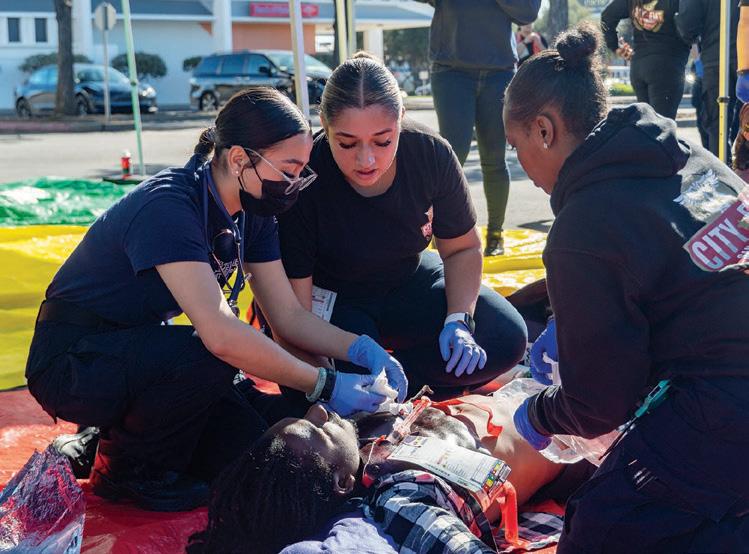
Dustys’ program, City EMT, comes with a stipend, and it offers preparation assistance with the state exam, supportive services, and job placement.
More than 120 students have completed Dustys’ EMT program and one out of five of their students is now working for the San Francisco Fire Department, according to Bowden. She says the opportunity puts them on a path to earning sixfigure salaries and in line for upward mobility opportunities, a huge swing for young people from economically disadvantaged backgrounds.
“Getting into these positions changes the trajectory, not just of their lives, but of their kids’ lives,” Bowden says. “Their grandkids will benefit from the fact that they came to our program.”
The Greek philosopher Heraclitus said, “Character is destiny.” Dustys’ Fishing Well is taking this to heart and no one would be more proud of Bowden and her students than Dusty herself.
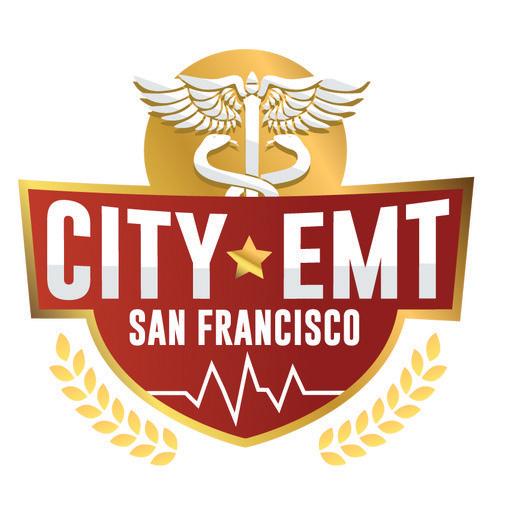
DFW has over 75 applicants for each cohort, but each cohort currently has only 25 seats maximum. With only so many resources, they have to turn away many young adults looking for an opportunity to learn skill sets necessary to enter the first responder sector.
KEY
SUPPORTERS
O ce of Economic Workforce Development
Kimball Foundation
Miranda Lux Foundation
Bothin Foundation
Weinberg Foundation (MOHCD) Mayor's O ce of Housing and Community Development
San Francisco Fire Department
Human Rights Commission

coach and a writing coach. Students play on a team and write, share, and perform their own poetry. The result is improved physical health and social-emotional well-being; increased sense of belonging and self confidence.
By Check: Bay Area SCORES
DBA America SCORES Bay Area 530 Divisadero Street, Ste. 741 San Francisco, CA 94117
*Donation Memo: The Giving List
By DAF or Stock Transfer: Tax ID# 48-1272959
By Credit Card: americascoresbayarea.org/donate
Contact: Colin Schmidt Executive Director (415) 377-3887 cschmidt@americascores.org
America SCORES Bay Area www.americascoresbayarea.org
530 Divisadero Street, Ste. 741 San Francisco, CA 94117
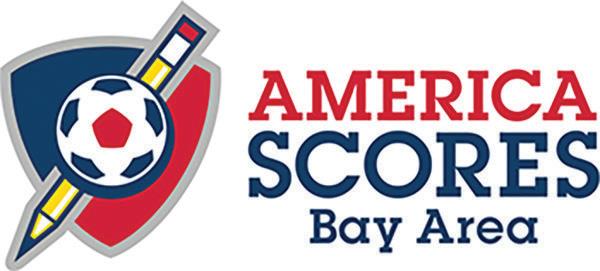
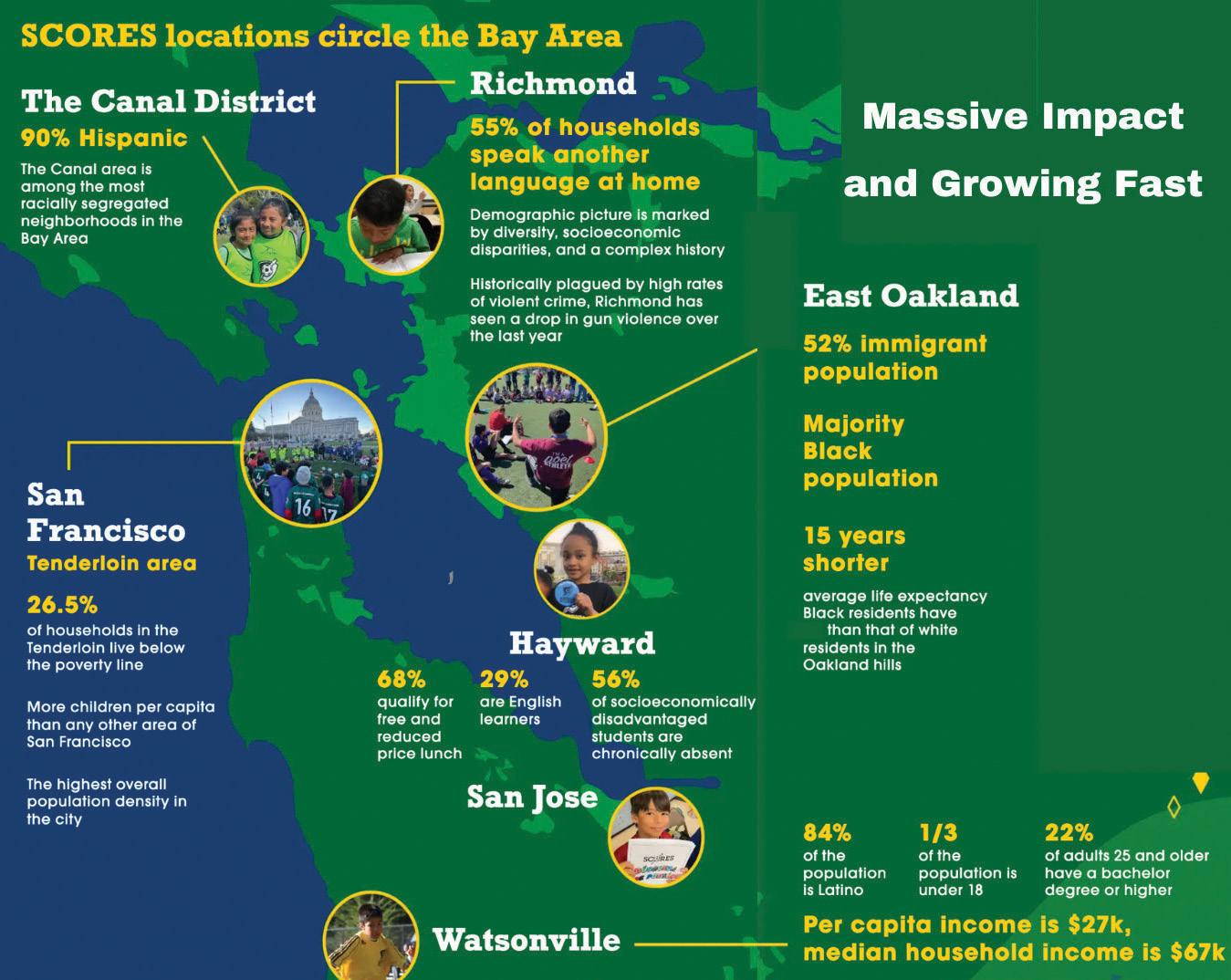
Soccer and poetry may seem like an unusual pairing, but America SCORES Bay Area knows it’s a magical mix with a big impact.
The free after-school program serves 5,000 underserved kids at 130 schools with the fewest resources in school districts throughout the Bay Area. The program provides a winning combination of soccer, poetry, and service-learning to build healthy, caring, engaged youth.
“Soccer speaks to physical activity and the benefits of being on a team. Poetry is more about the individual’s voice and expressing yourself,” says Colin Schmidt, CEO and Founder of America SCORES Bay Area. “Our amazing corps of coach-mentors deliver a powerful triple-play program that creates a sense of belonging, improves health, and builds confidence. Our Poet-Athletes develop an authentic voice and become leaders in their communities.”
The program was created 30 years ago by a public school teacher in the
D.C. area and is now replicated nationally in 15 cities. Schmidt founded America SCORES Bay Area in 2001 and they are growing rapidly, adding 2,000 students in the past year and expanding their girls’ program, with the goal of doubling their program and closing their gender gap by 10% in the next two years.
Many of the students in the program face difficult circumstances, financial hardship, family issues, and even trauma. Having an athletic, arts, and service program that is free, with no transportation costs, can change a child’s life.
“Childhood has no second chances,” says Schmidt. Their program has a massive impact in areas of real concern for many kids today: emotional well-being, physical health, confidence, creativity, and self-expression.
Bridgette Marin-Valencia would never have considered herself an athlete as a little girl. A self-confessed “girly-girl” who had no idea what cleats were, she was painfully shy with a
Your investment allows vulnerable Bay Area children to experience joyful, skill-building experiences that foster healthy habits, self-confidence, and a sense of belonging and purpose. America SCORES has goals of reaching even more underserved schools in the Bay Area, closing a 10% gender gap by enrolling more girls, and doubling their current membership to 10,000 by the time of the World Cup in 2026.
• $100k launches a new cluster of schools in a lowincome community
• $50k provides stipends for 2,000 hours of direct service led by SCORES coach-mentors
• $25k funds four teams for 32 weeks of soccer, writing, and service learning programs
• $10k sponsors a year-end Poetry Celebration event for students and family members
• $1k covers the cost for one student to participate in the SCORES program for a year
speech impediment and was self-conscious about her body.
“She was bullied a lot in school, because she was always just so nice and never stood up for herself until she started playing soccer and she learned... she could stick up for herself,” says her mother, Maria.
With America SCORES Bay Area, Marin-Valencia learned team-building, blossomed as an athlete, and even found her voice when she read her poem on the radio. By the time she was in 8th grade, she had become an athletic standout and played on the Mexican and U.S. National teams. She is now a starting forward junior for the UCLA Bruins.
Marin-Valencia credits the program for giving kids a route away from negative influences as well as providing access to universities that their family could not have otherwise afforded.
“It helps to know that someone is there for you. And is willing to go and take the extra step to help you be somebody that you never knew you could be,” she says.
America SCORES has been inspiring the souls of Bay Area youth for 23 years, turning them into poets, athletes, and leaders. A magic mix with a big impact, indeed.
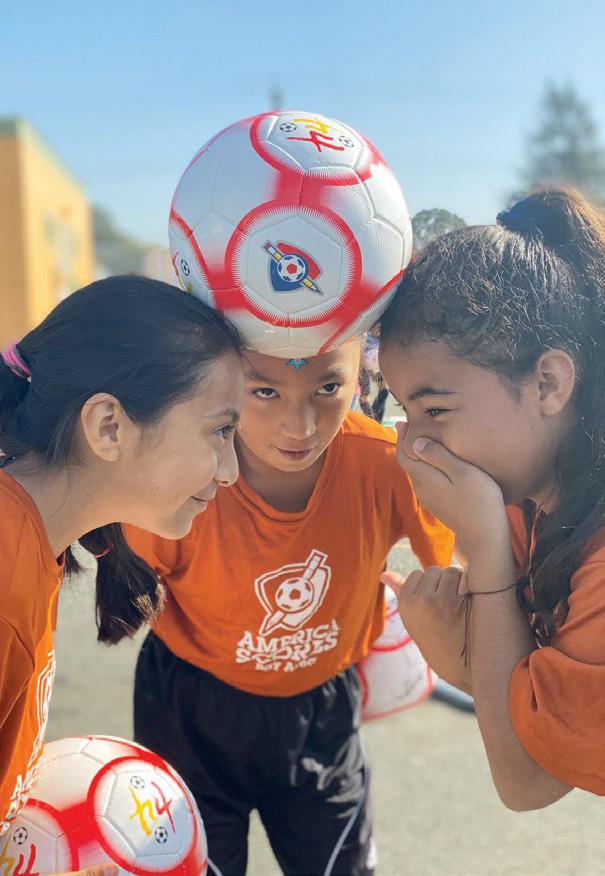
CORPORATE
BlackRock
Bloomberg Philanthropies
BMO
Dodge & Cox
Silver Lake
Sixth Street
TPG Capitol
PRO SPORTS TEAMS
San Jose Earthquakes
Bay FC
Oakland Roots and Soul
FAMILY FOUNDATIONS
Barrios Trust
Bella Vista
Caerus
Danhakl
Horace W. Goldsmith
George Family -
Next Generation Fund
Kimball
Mirnahill
Henry Mayo Newhall
Quest
Sam Fort Family
Stocker
WLS Spencer
Wayne and Gladys Valley
Valla Family
Olympic Club Foundation
#startsmall
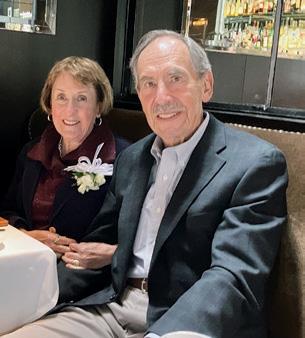
“We have been involved with SCORES since 2003 when it was relatively new. We visited a school where we saw a new turf field and the students energetically participating in a well-organized soccer practice run by SCORES coaches. We saw a poetry presentation by some of the students that was so very inspiring. The growth and quality of the programs is a result of its leadership, the board of directors, staff, and the front-line coach-mentors. SCORES has achieved significant milestones and will continue to grow.”
– Gene and Suzanne Valla Long time SCORES supporters


























